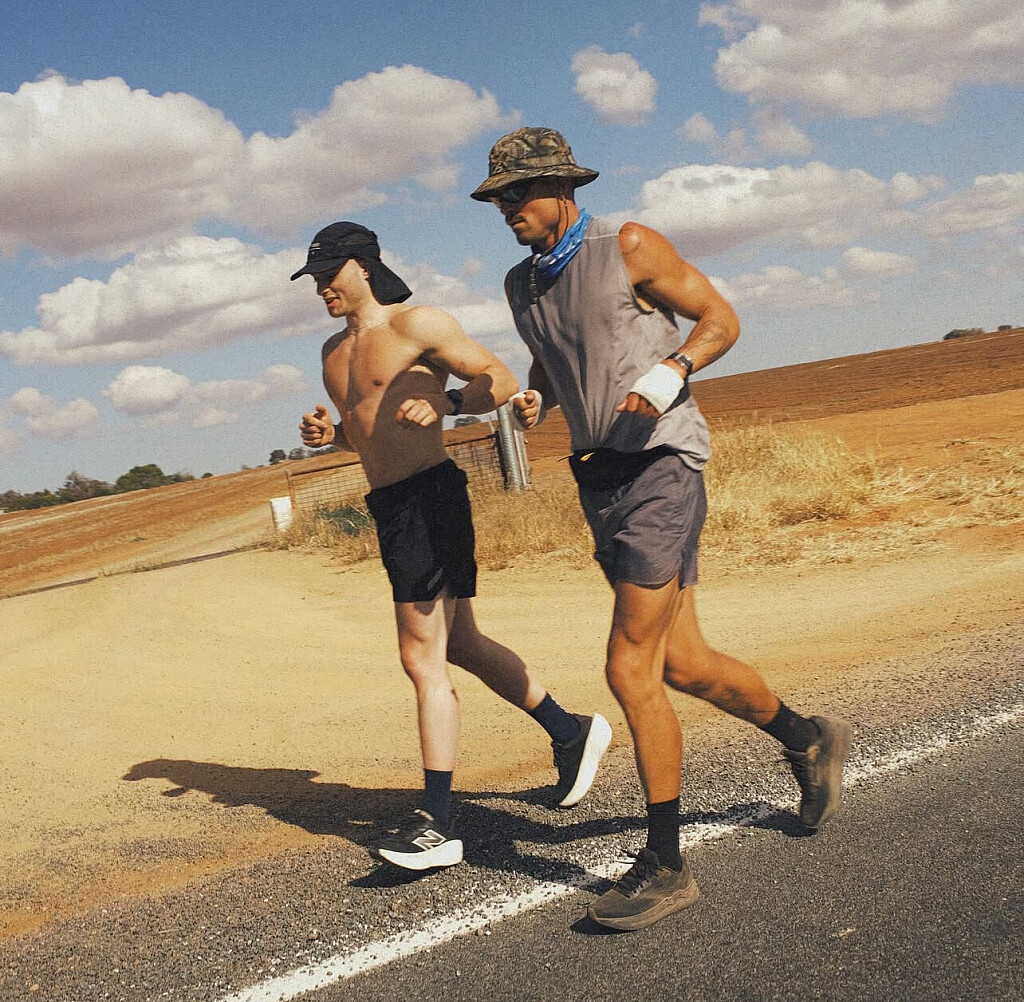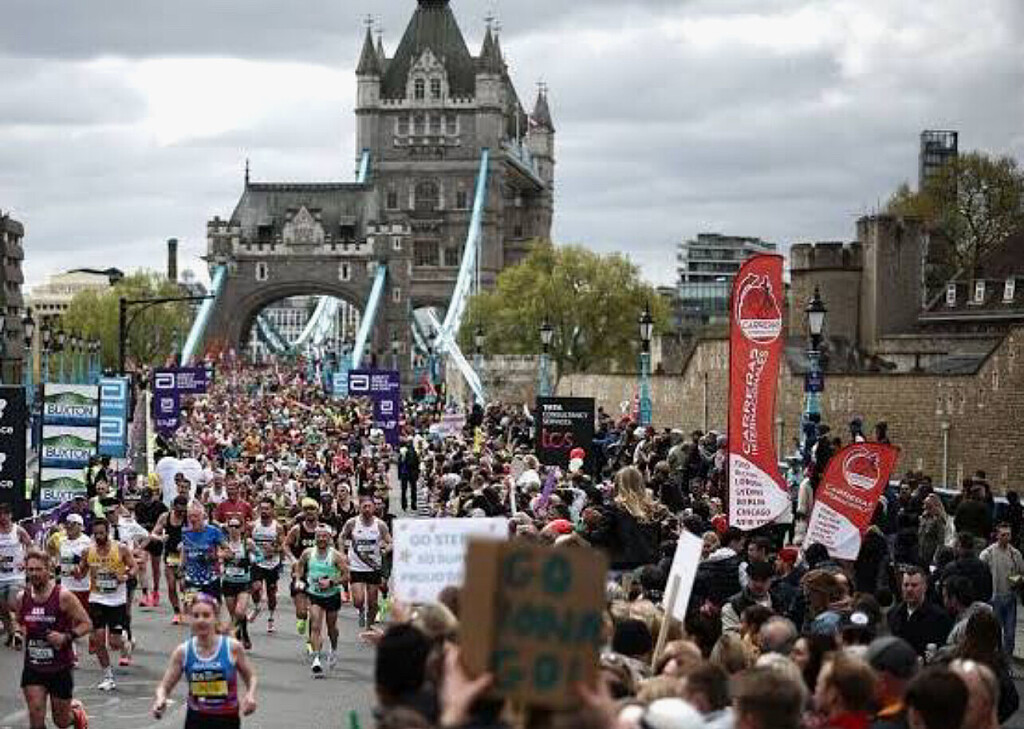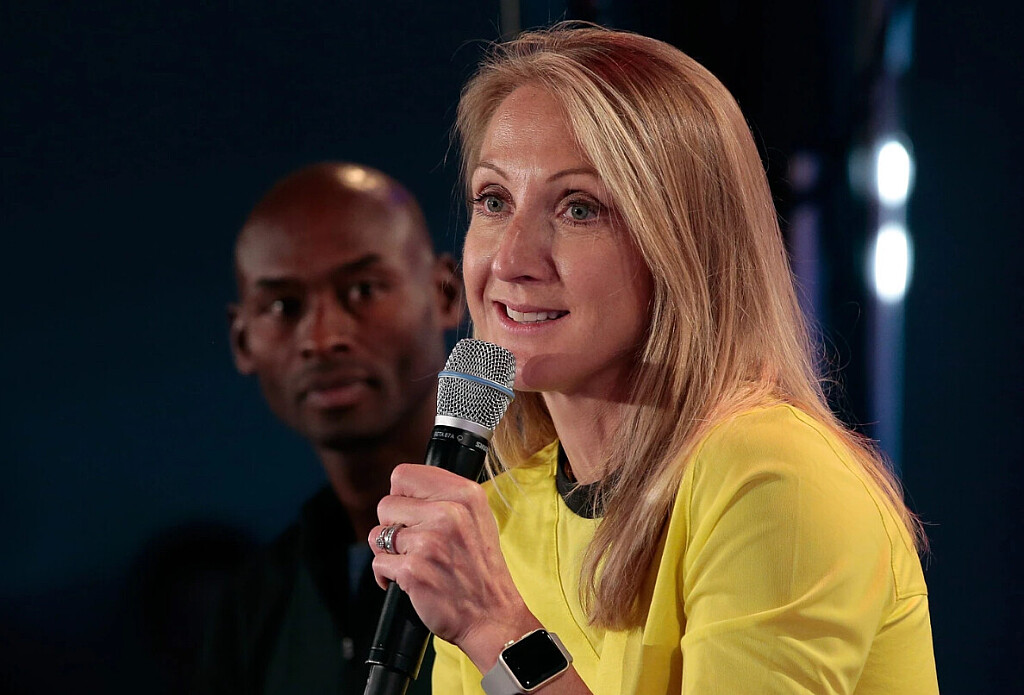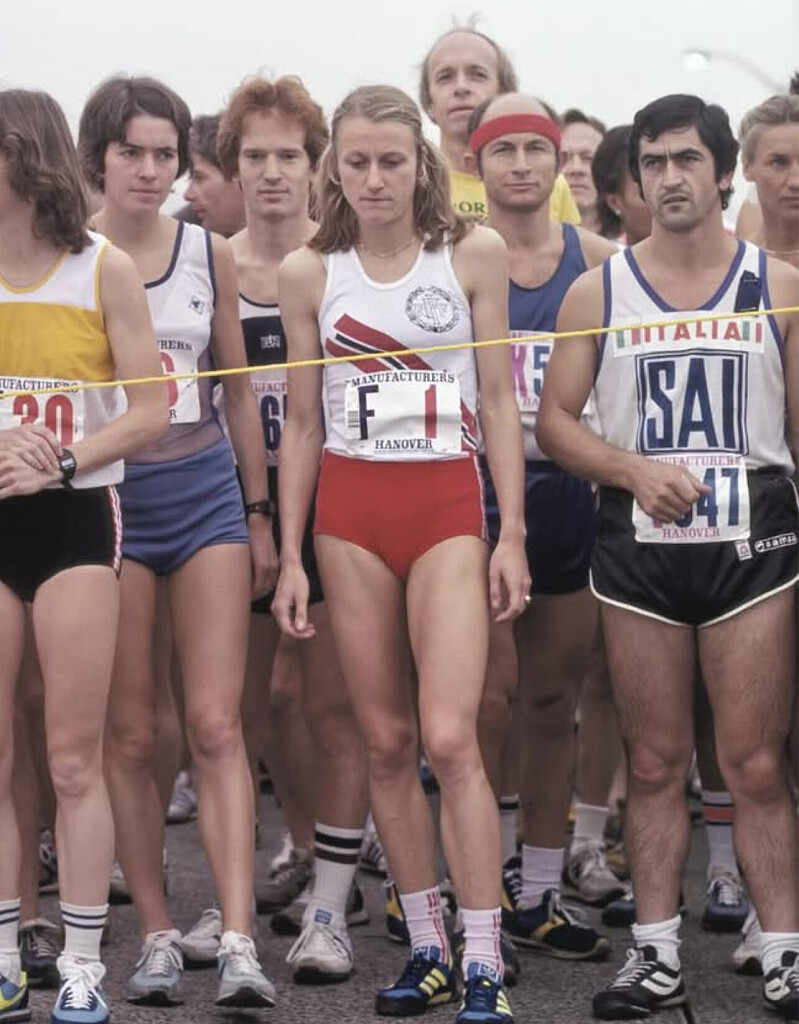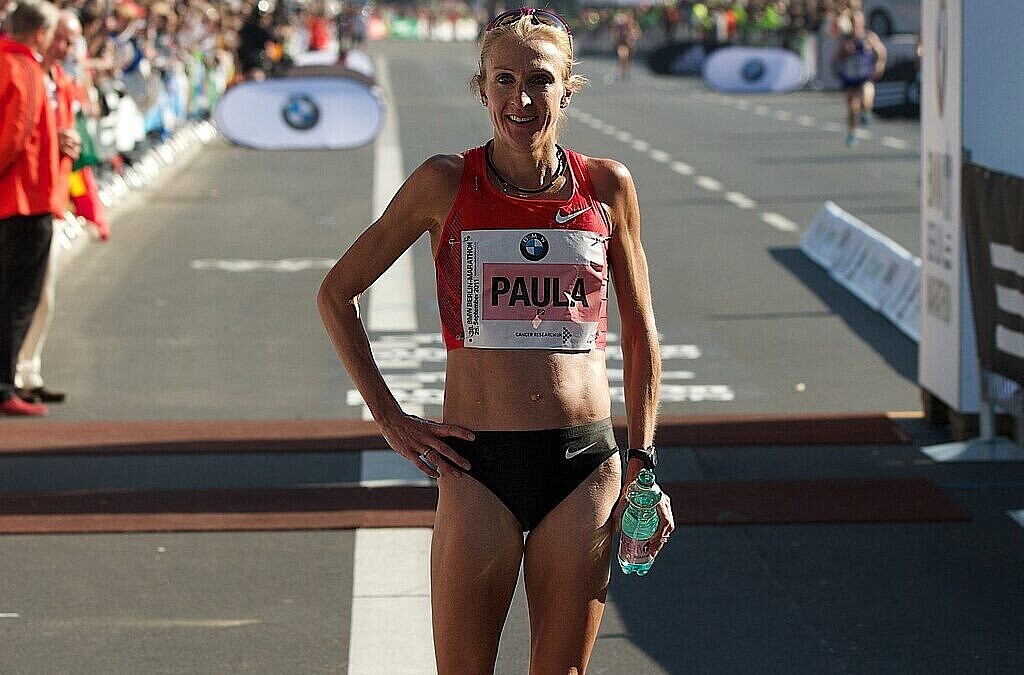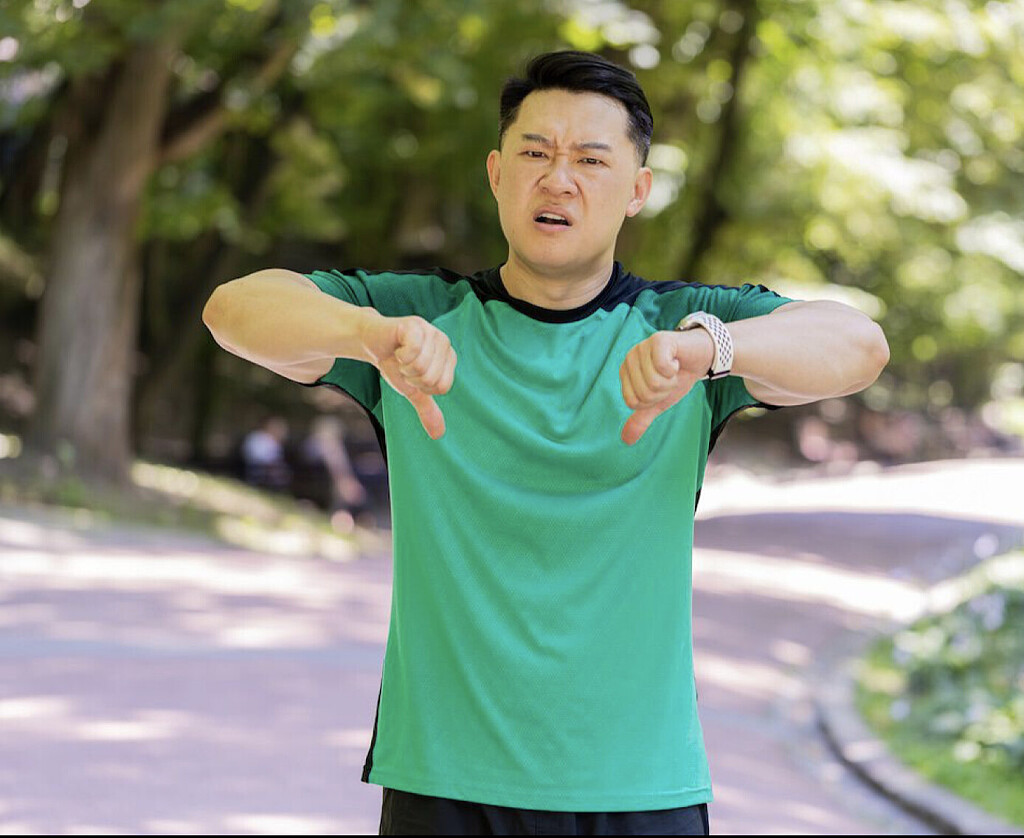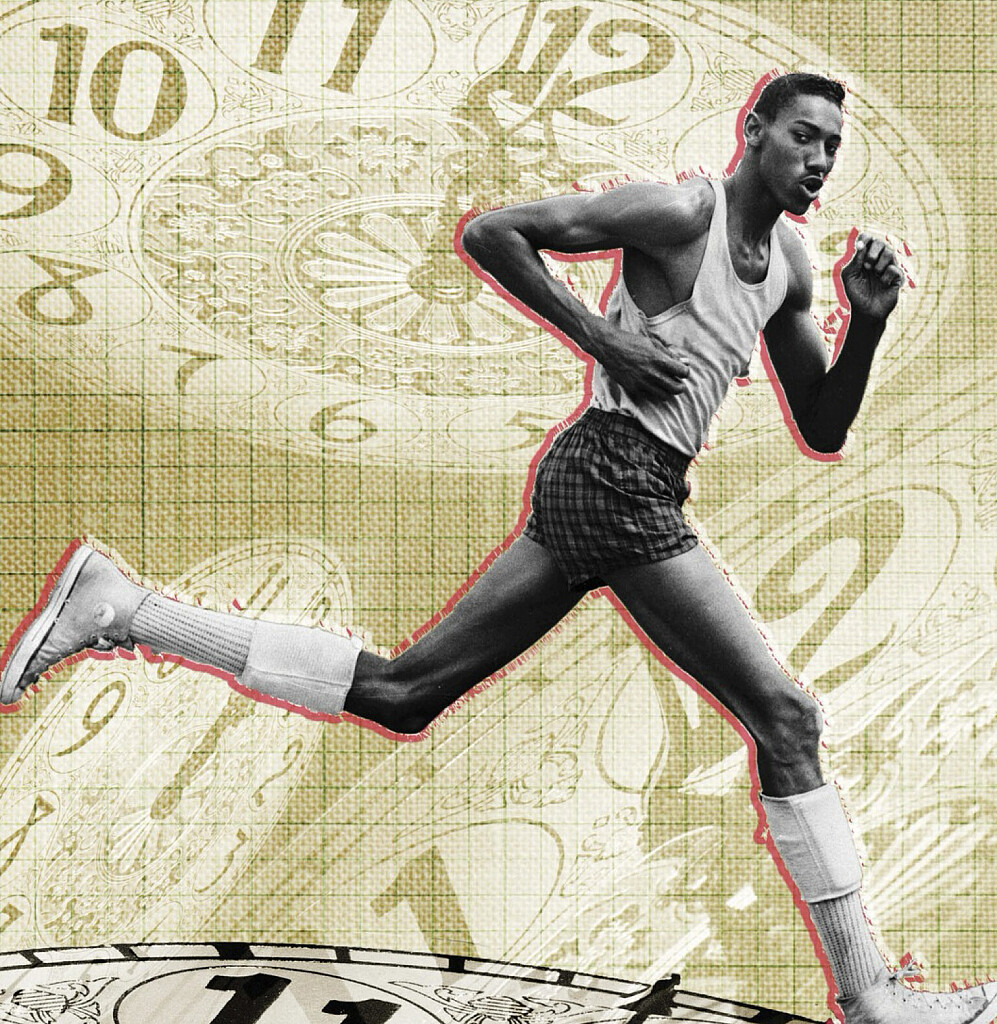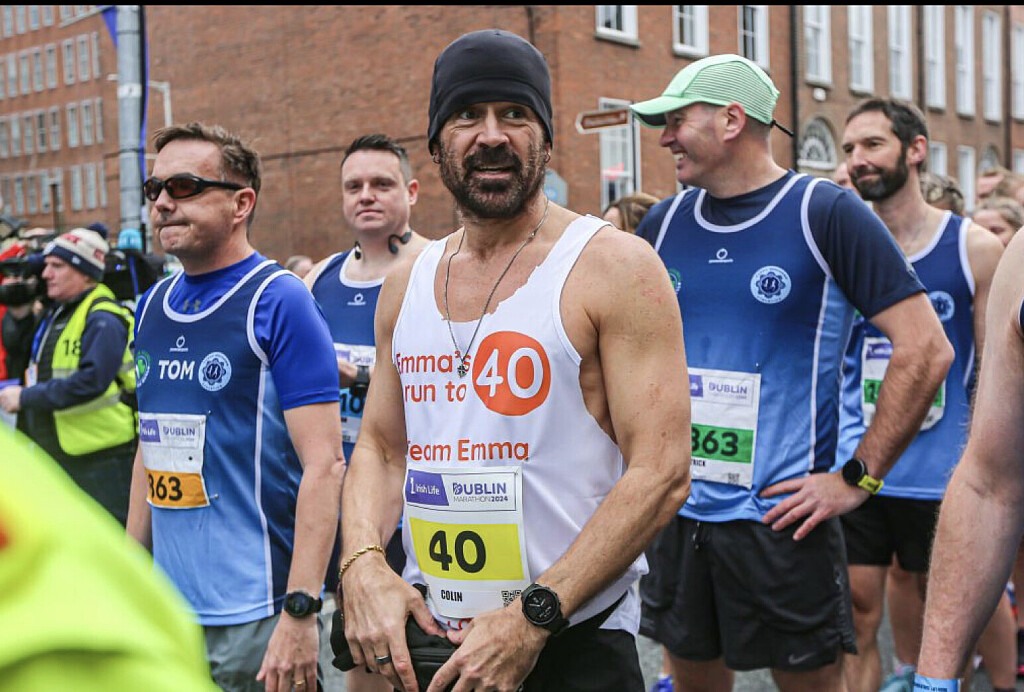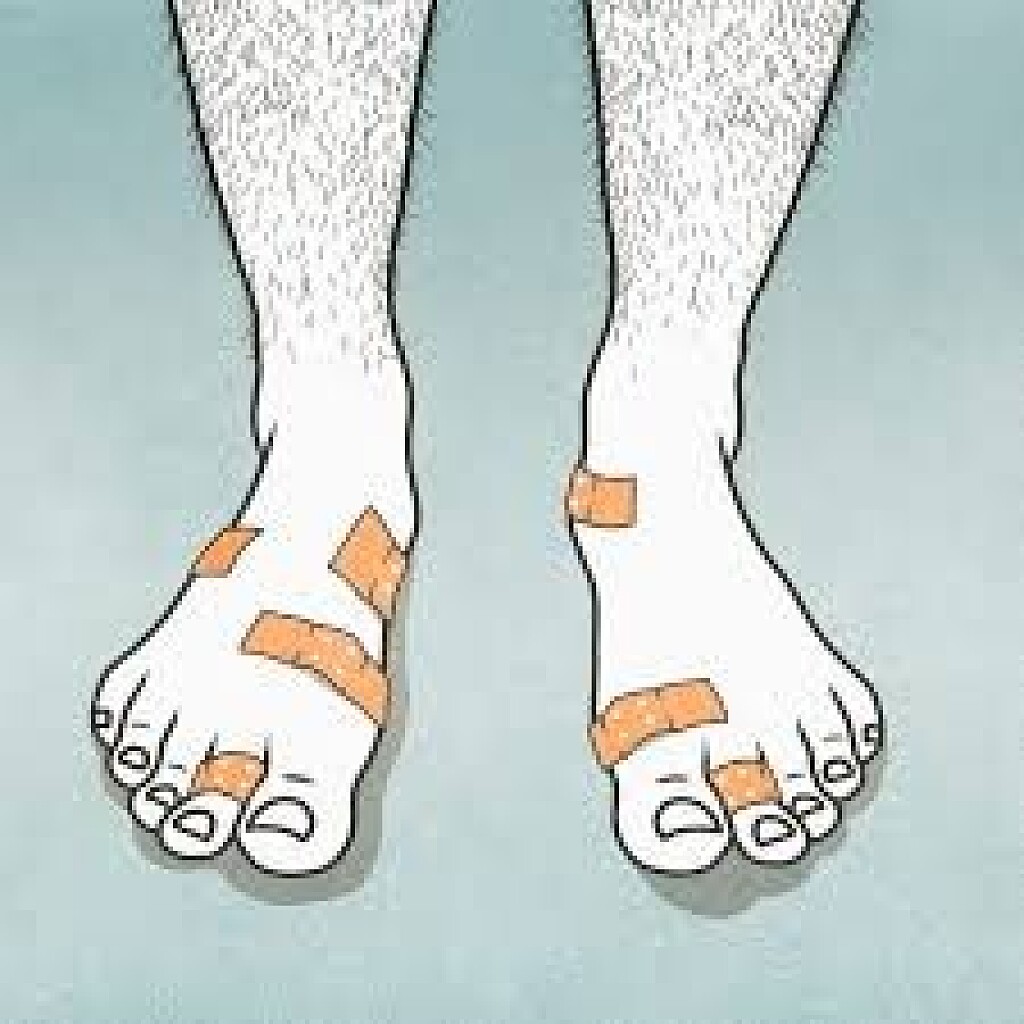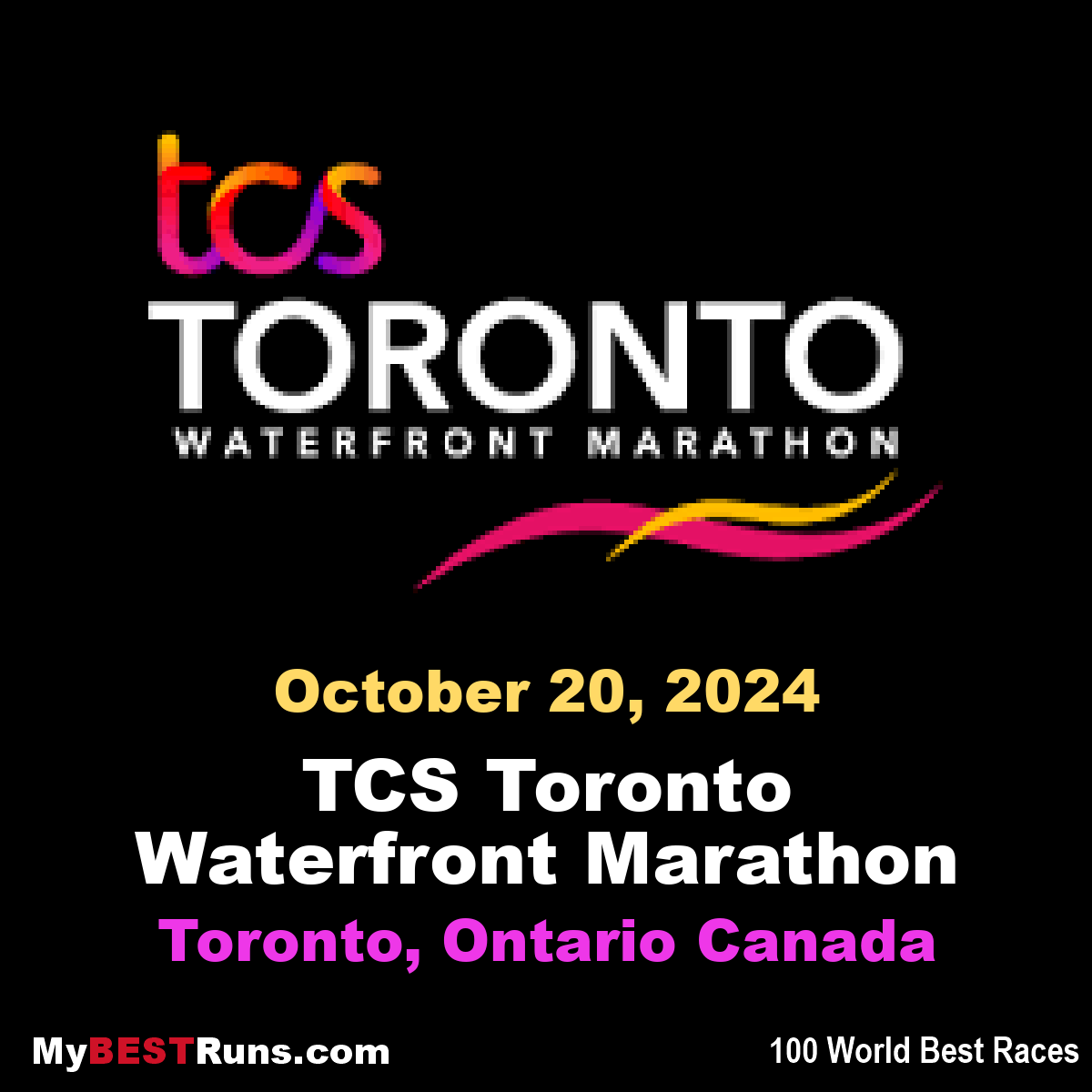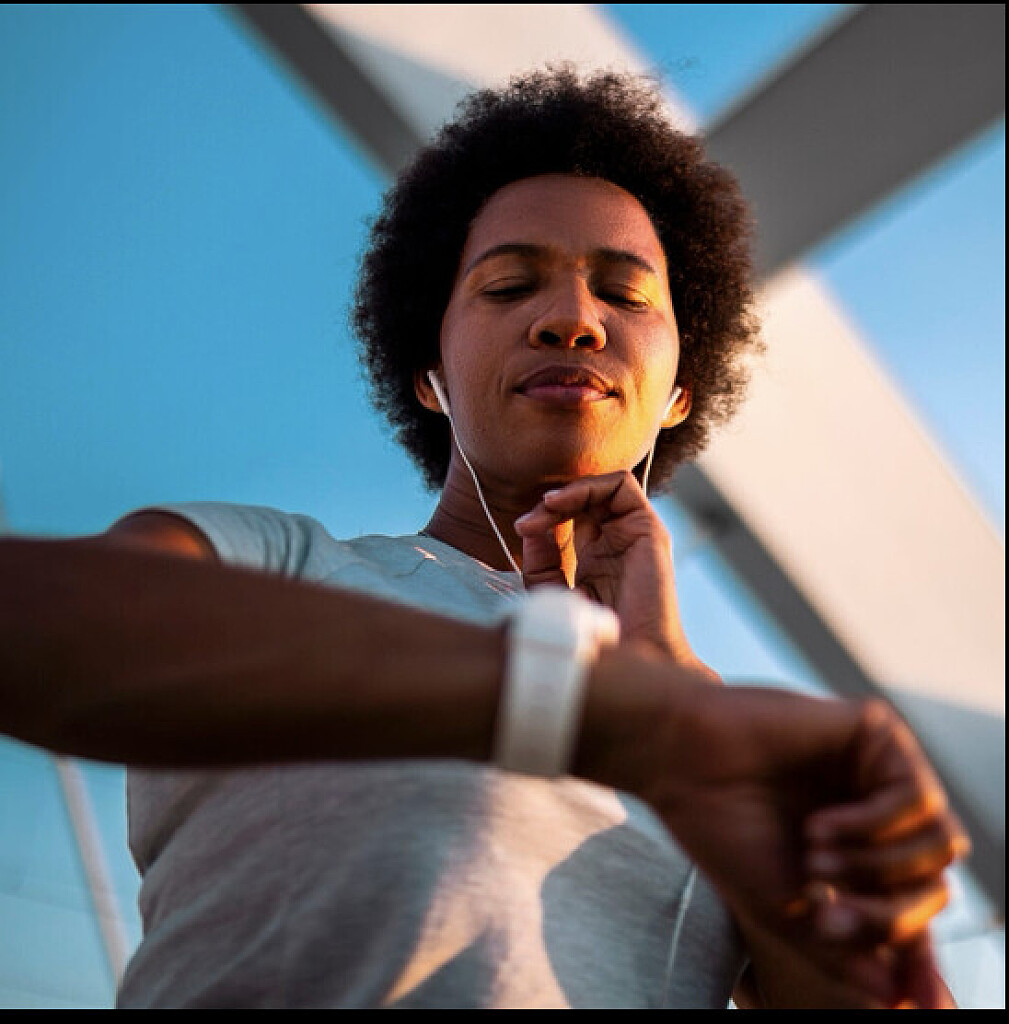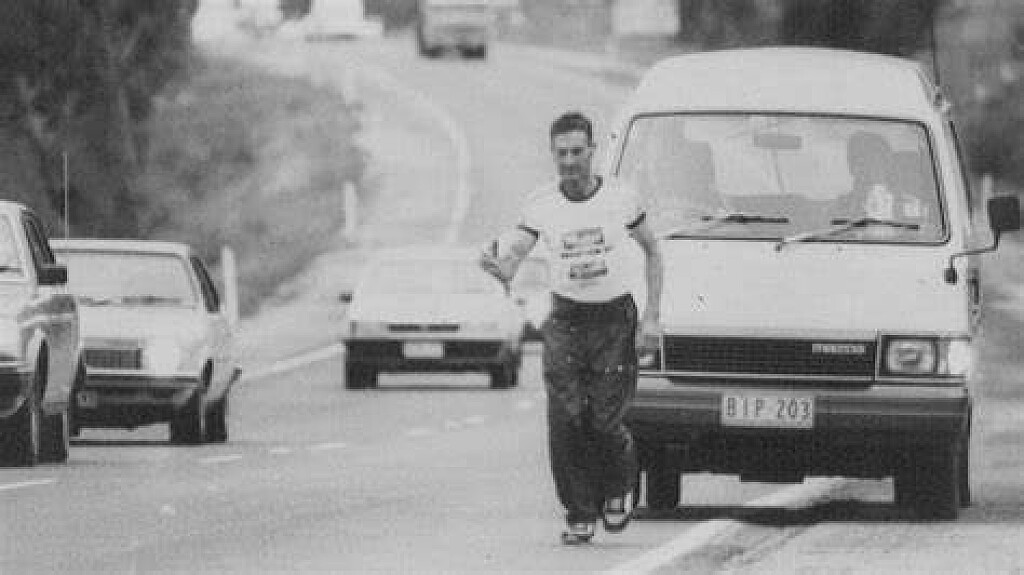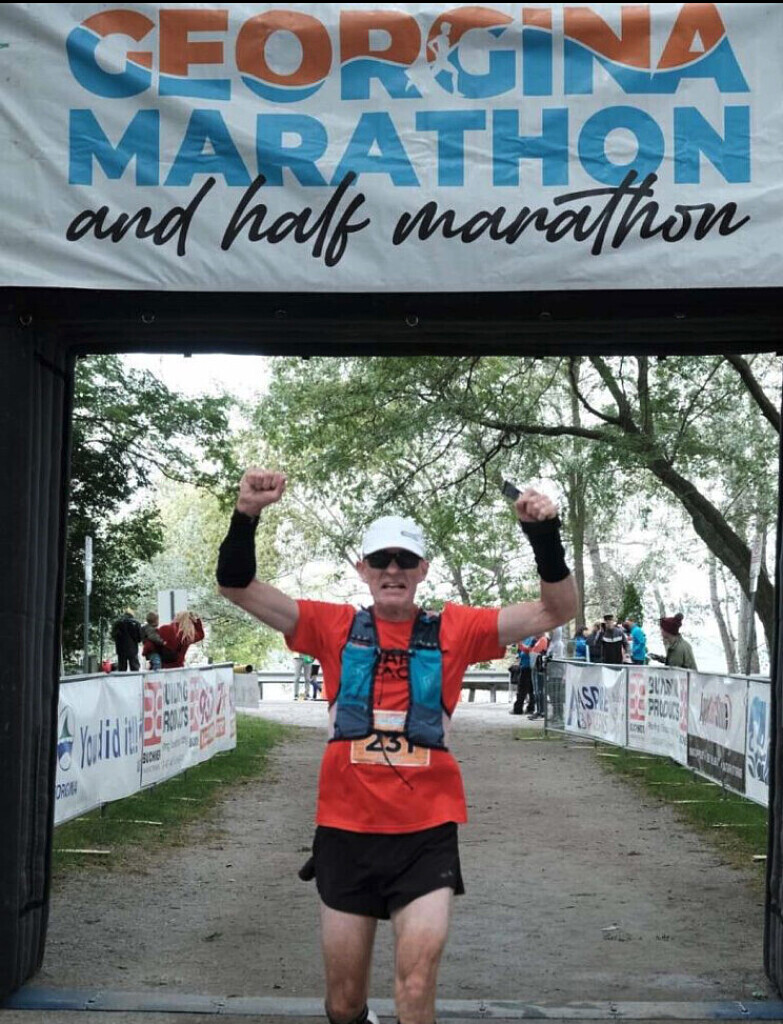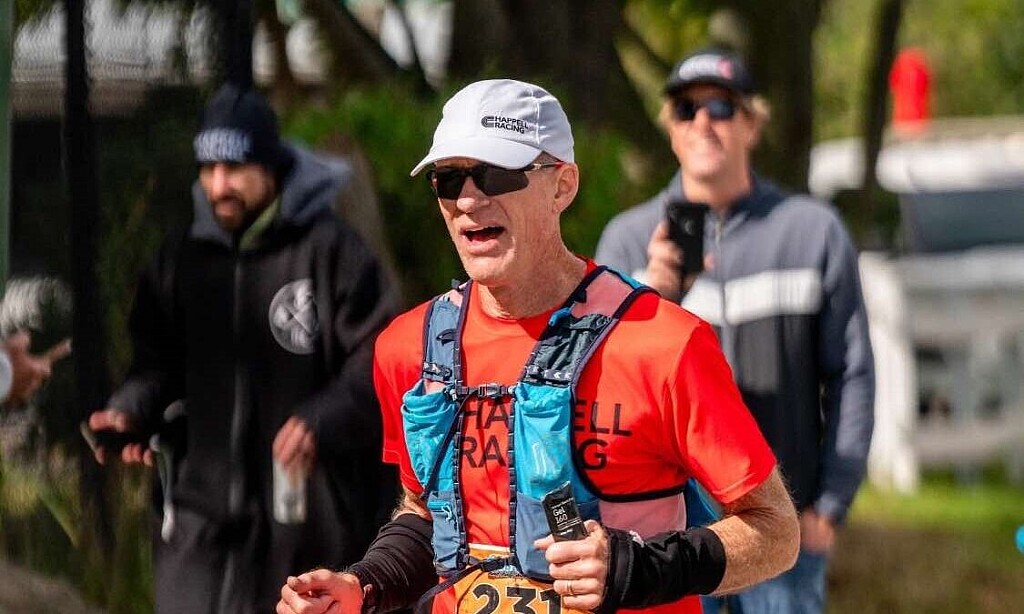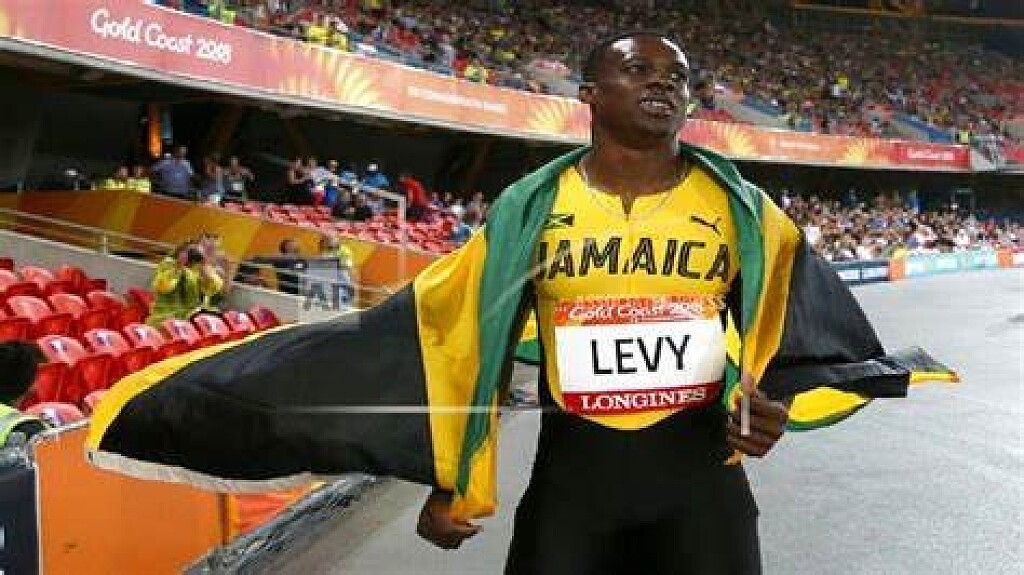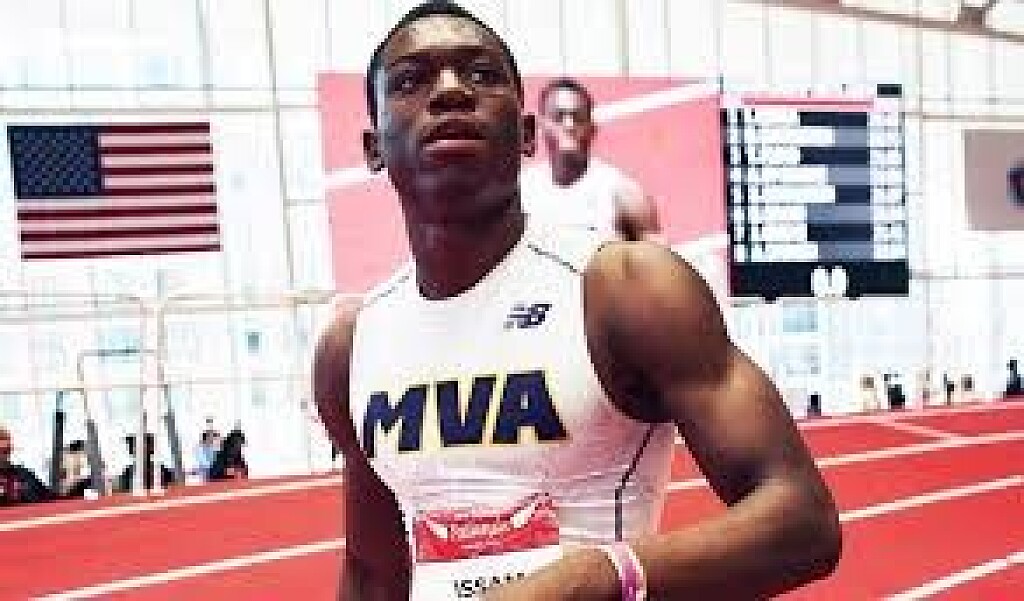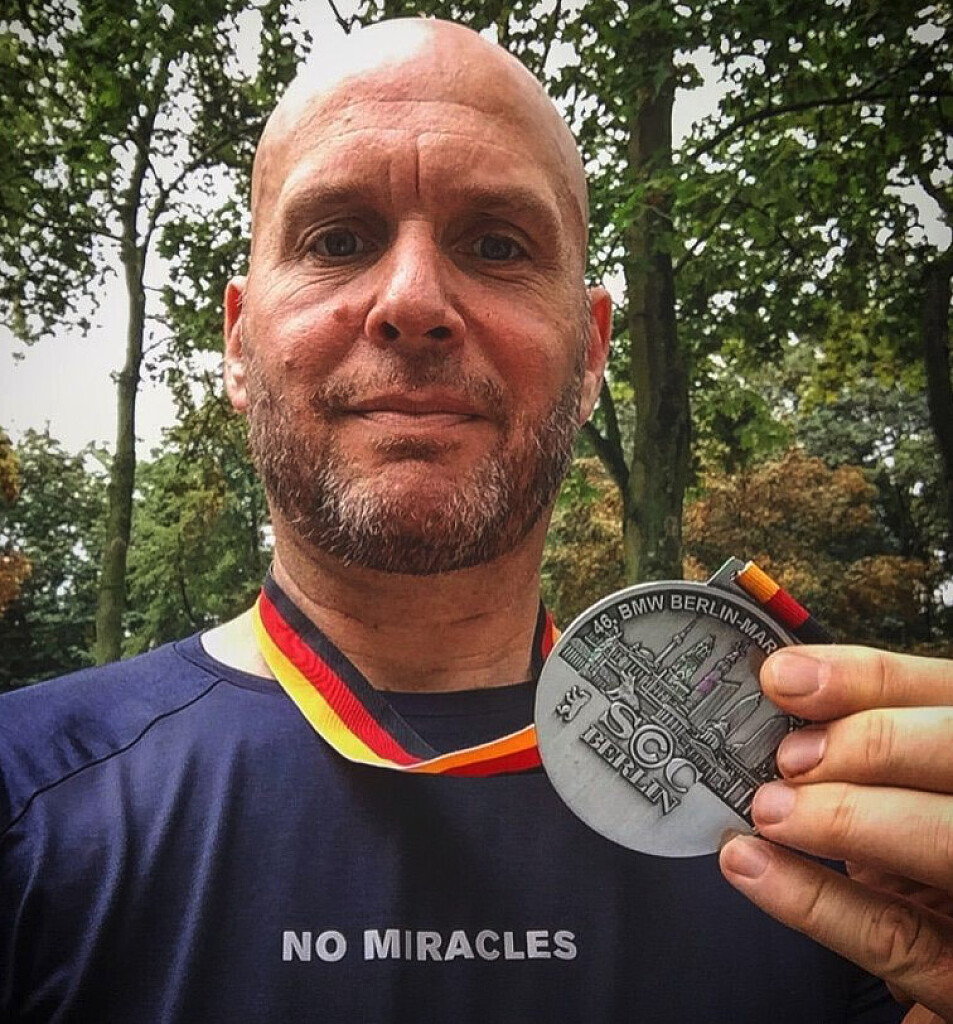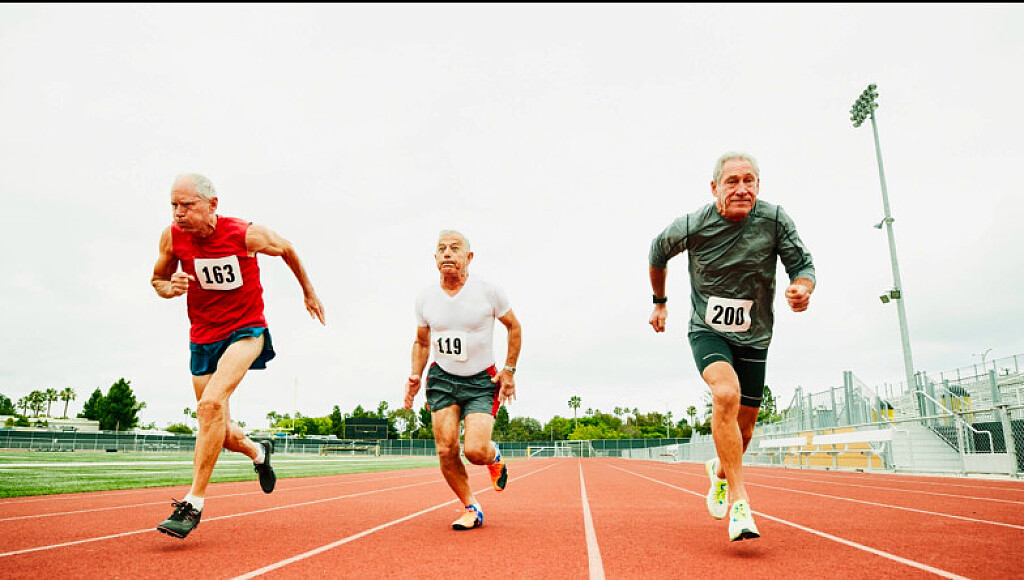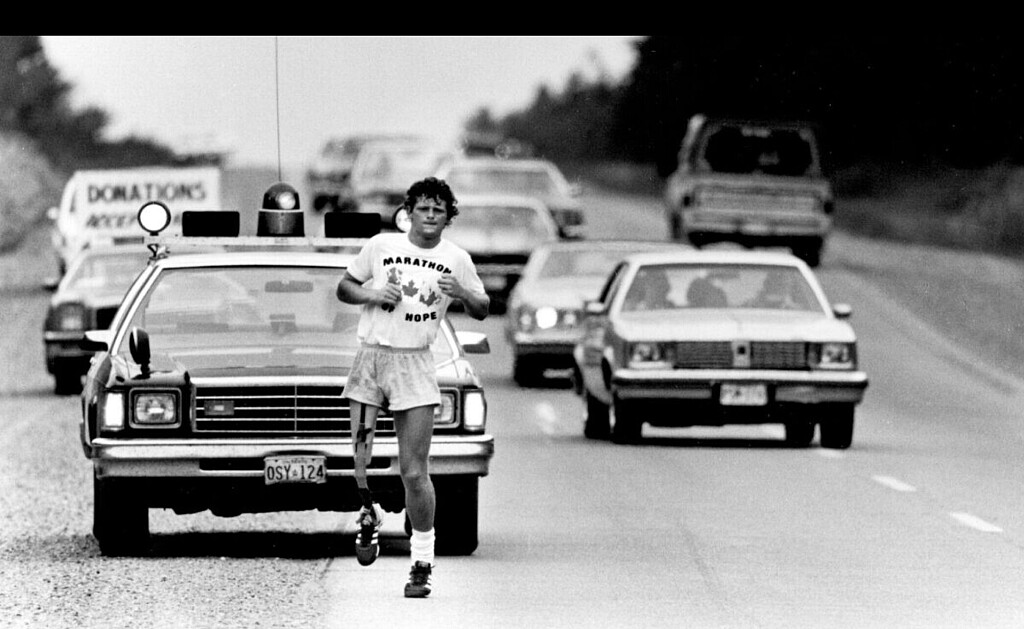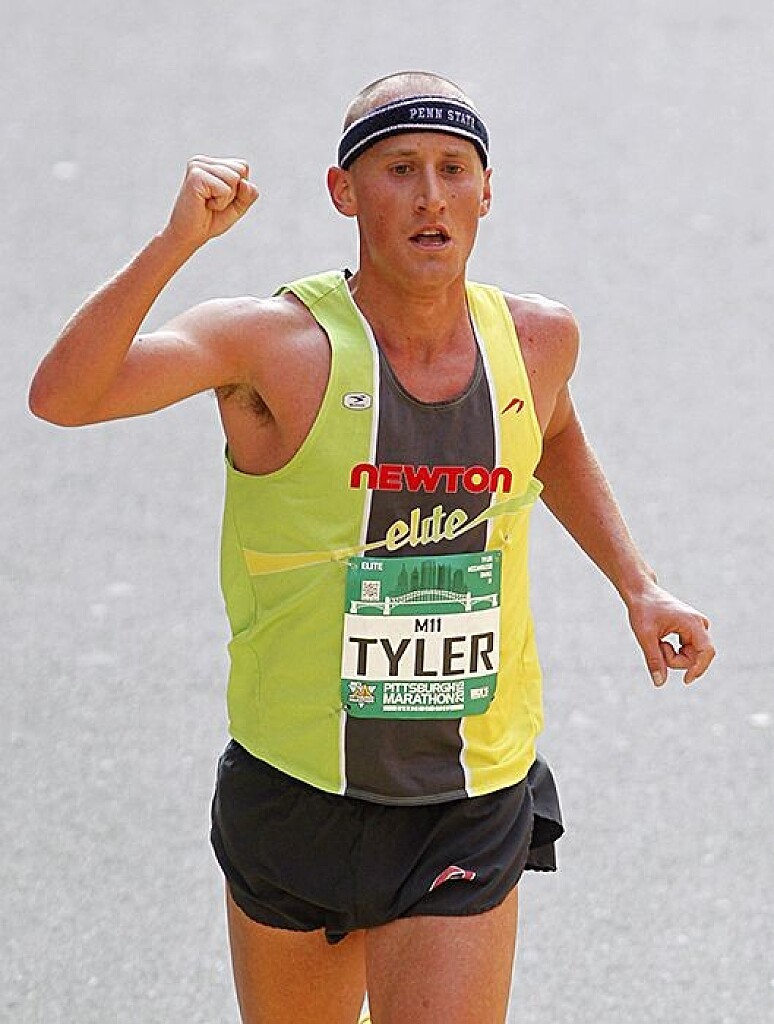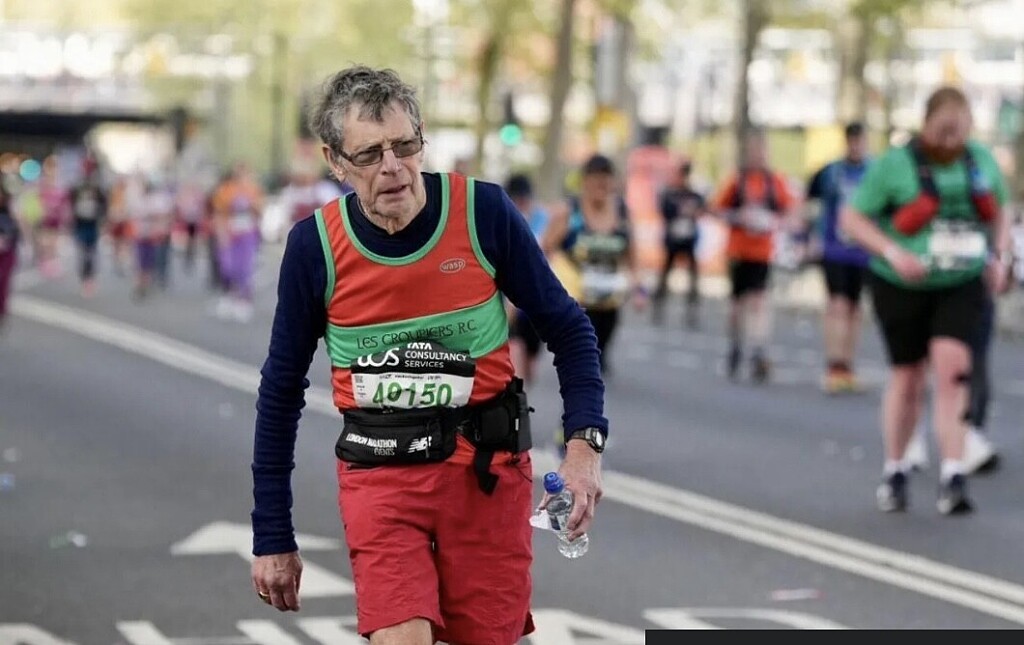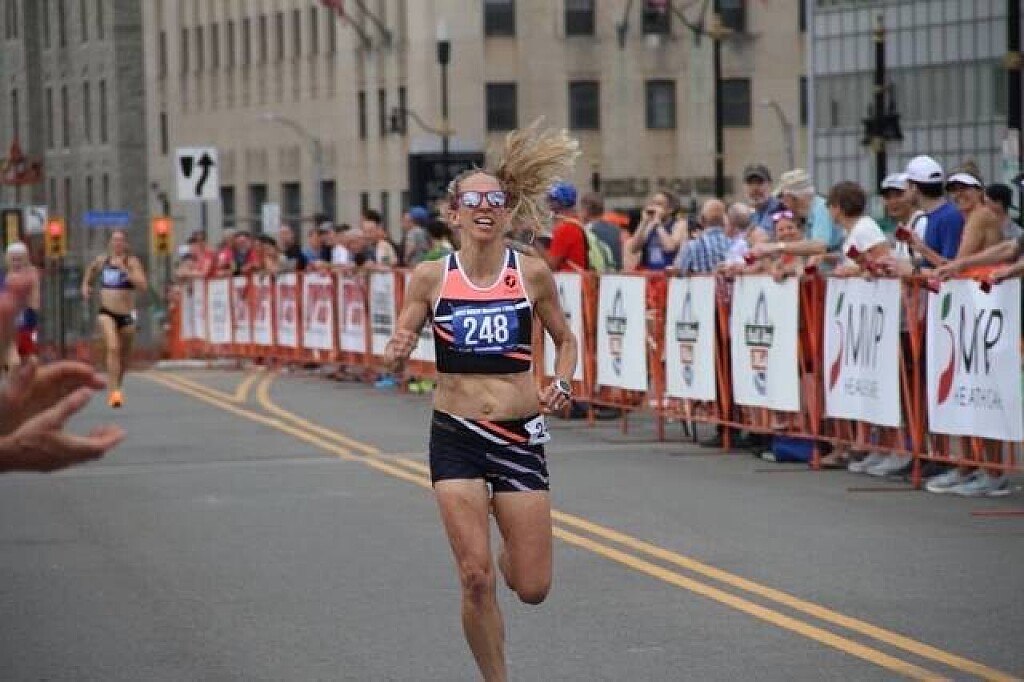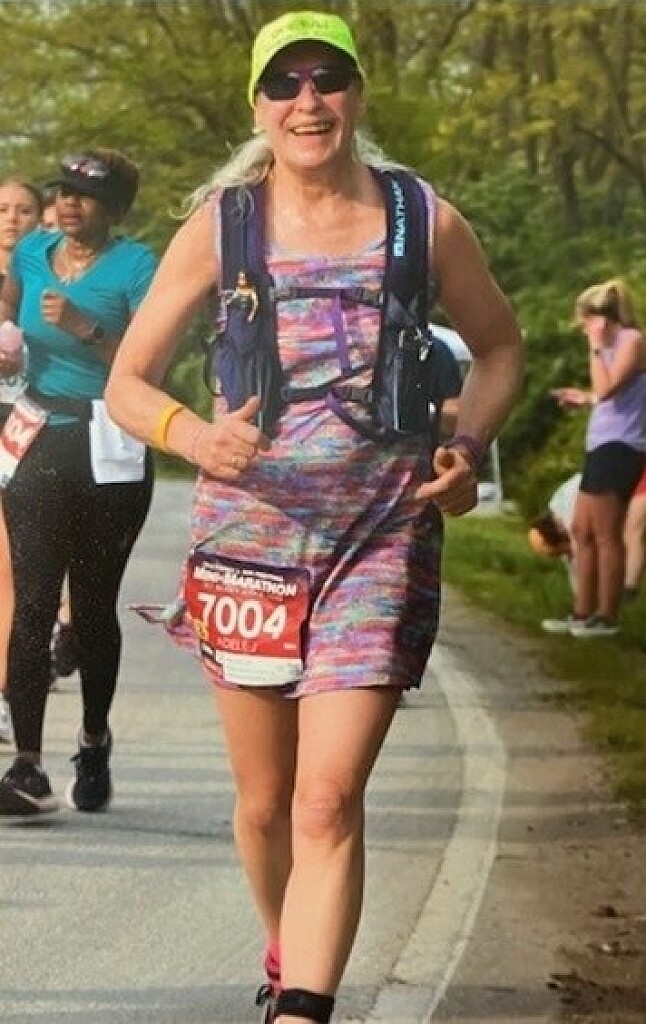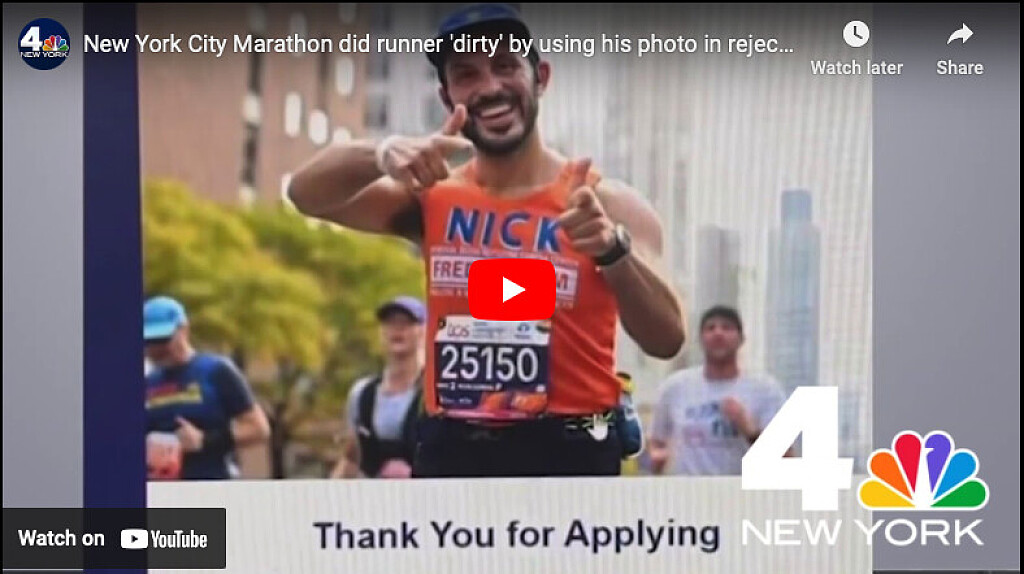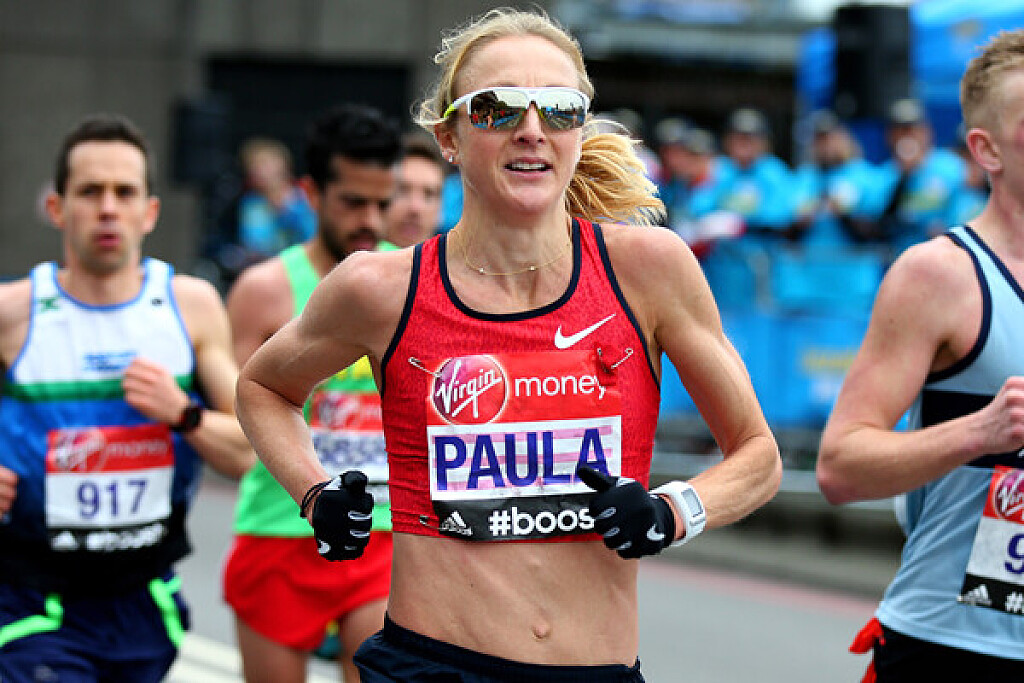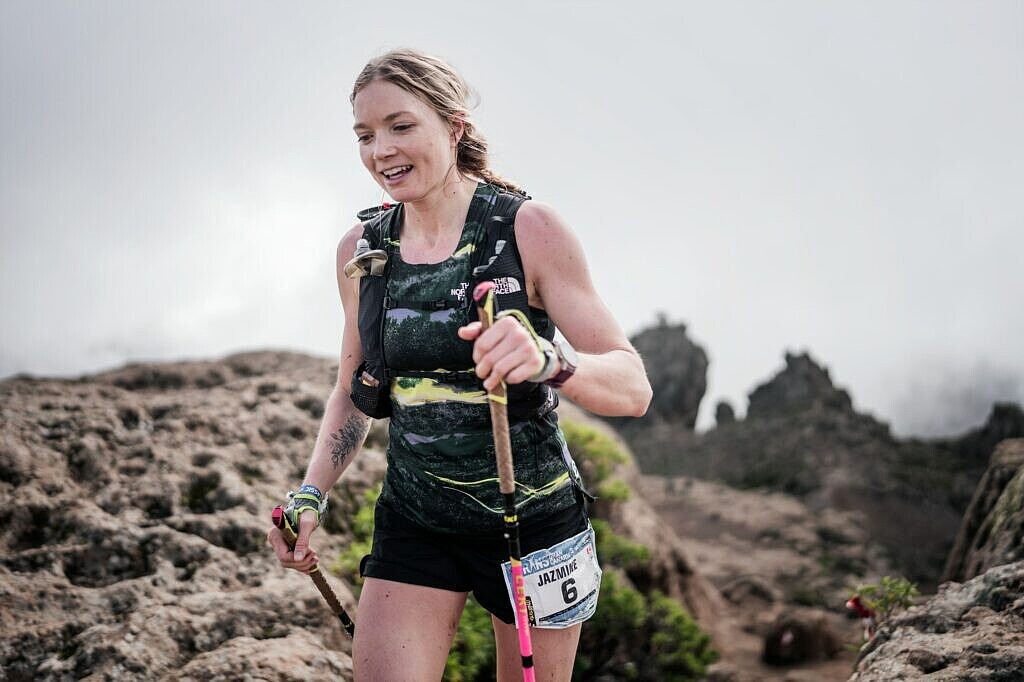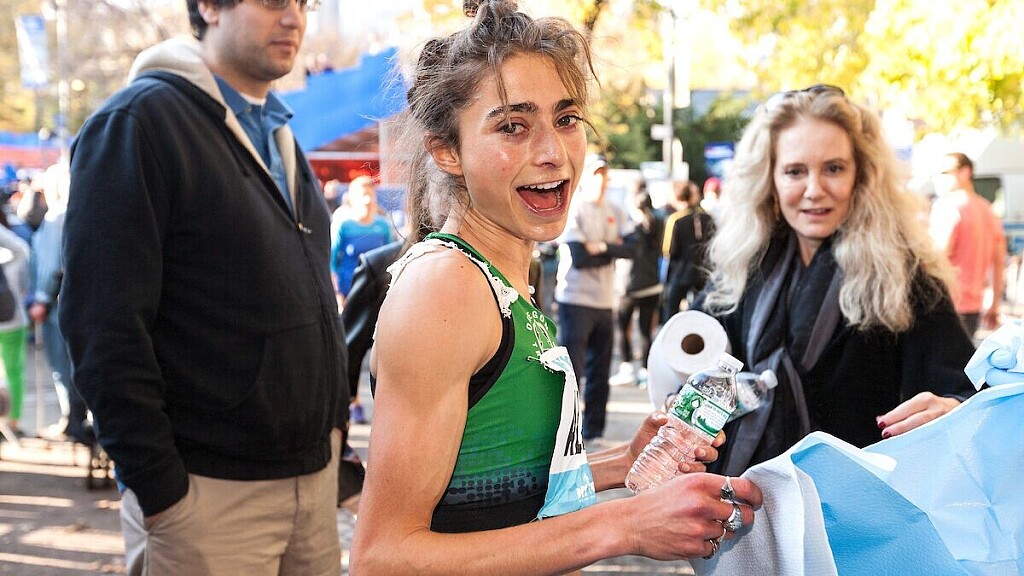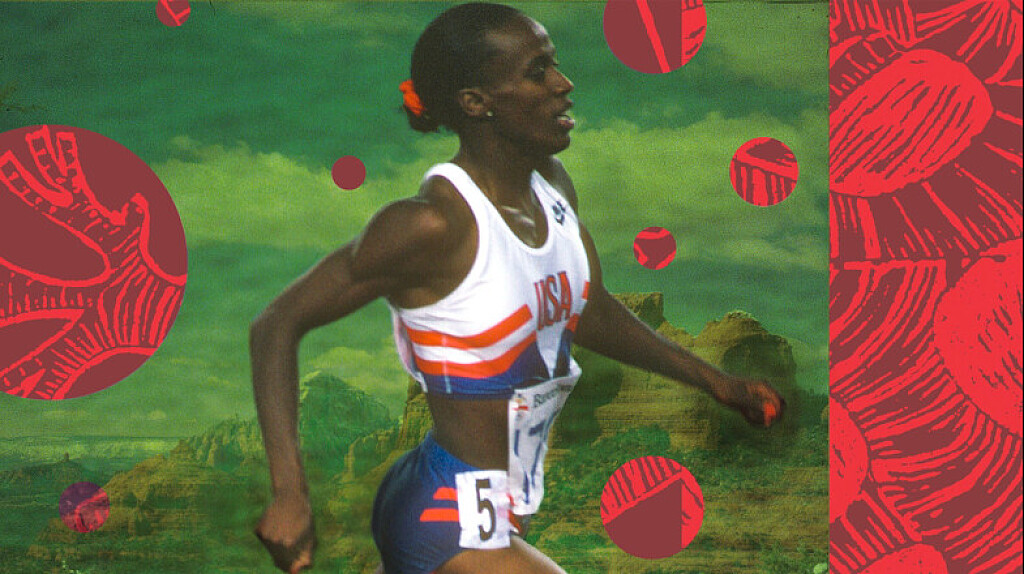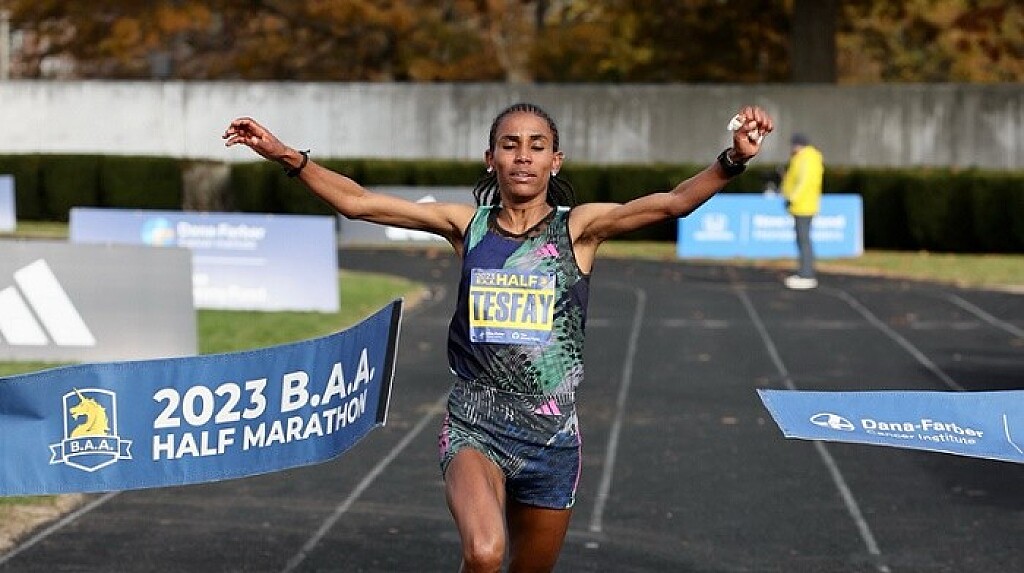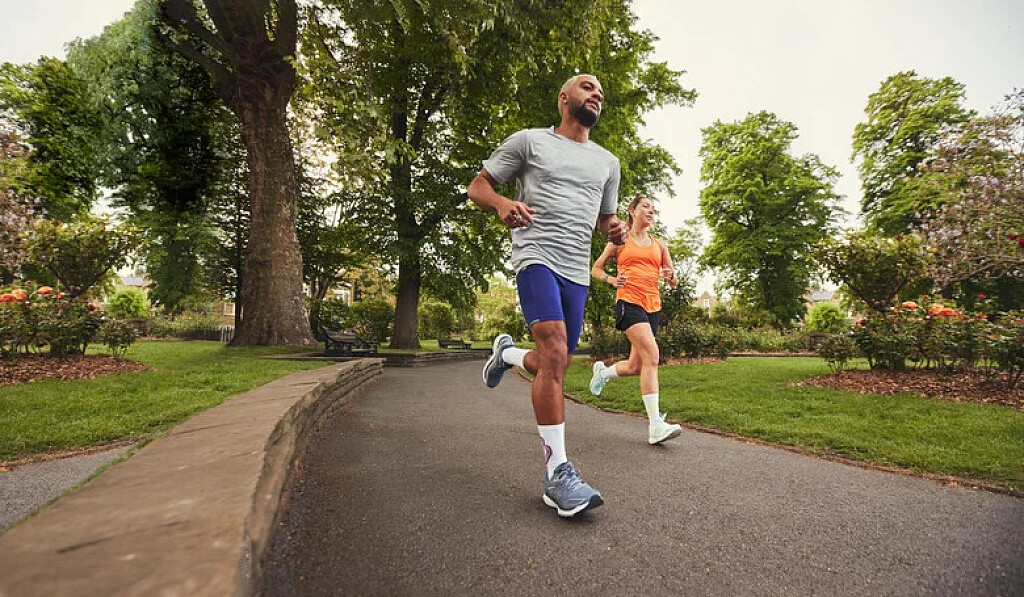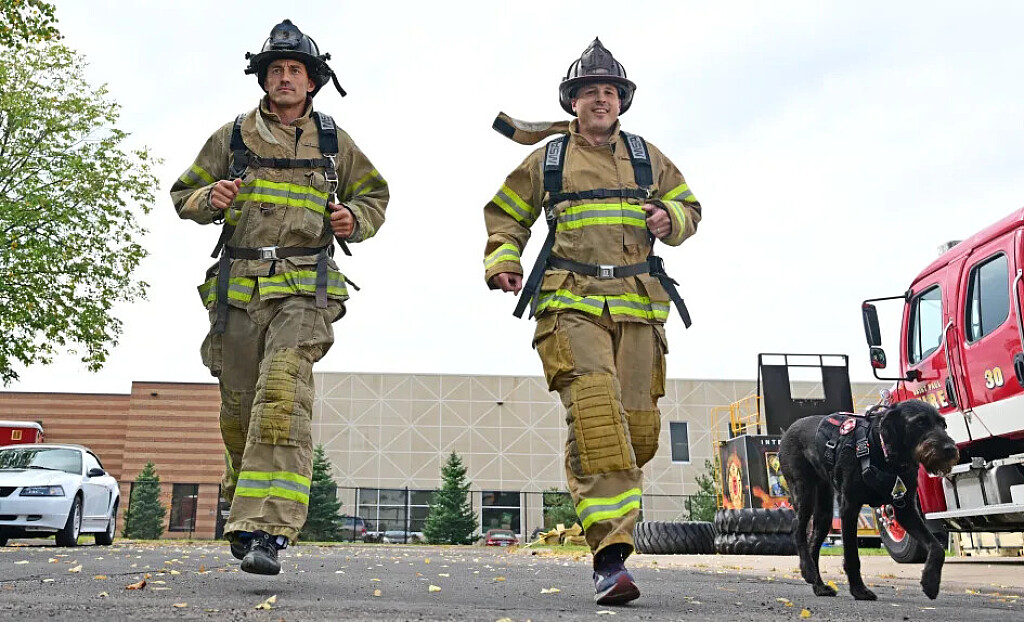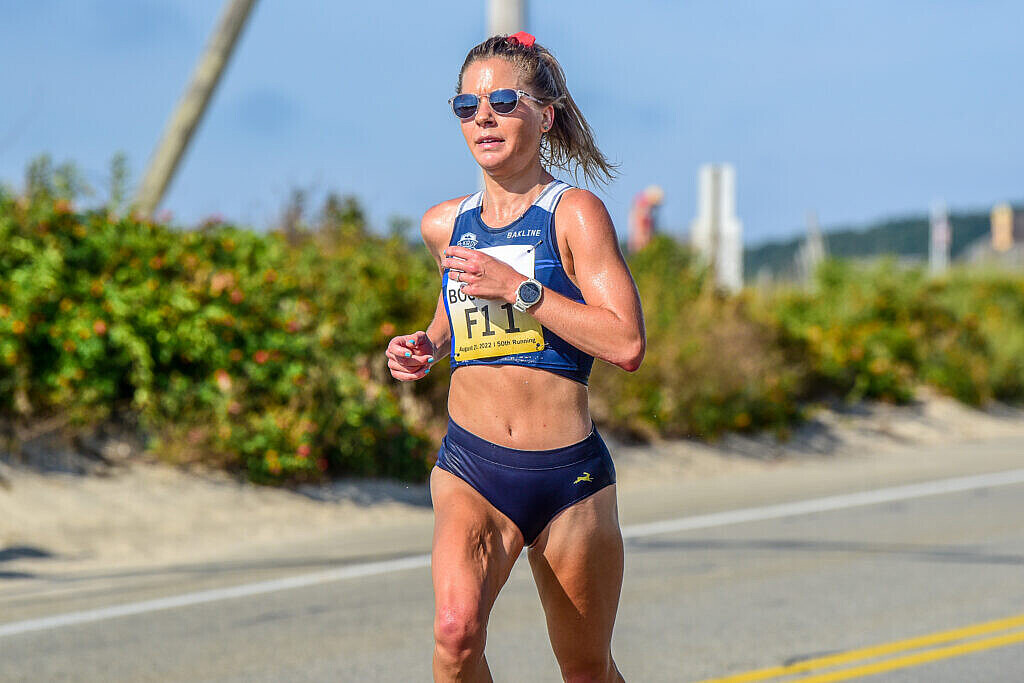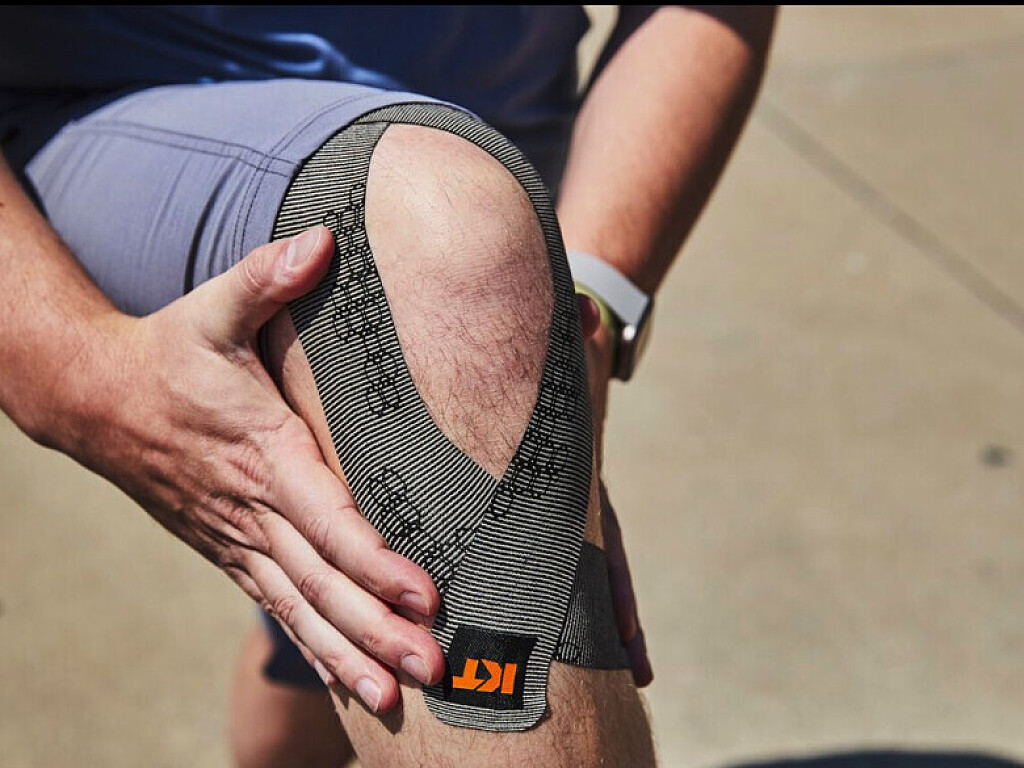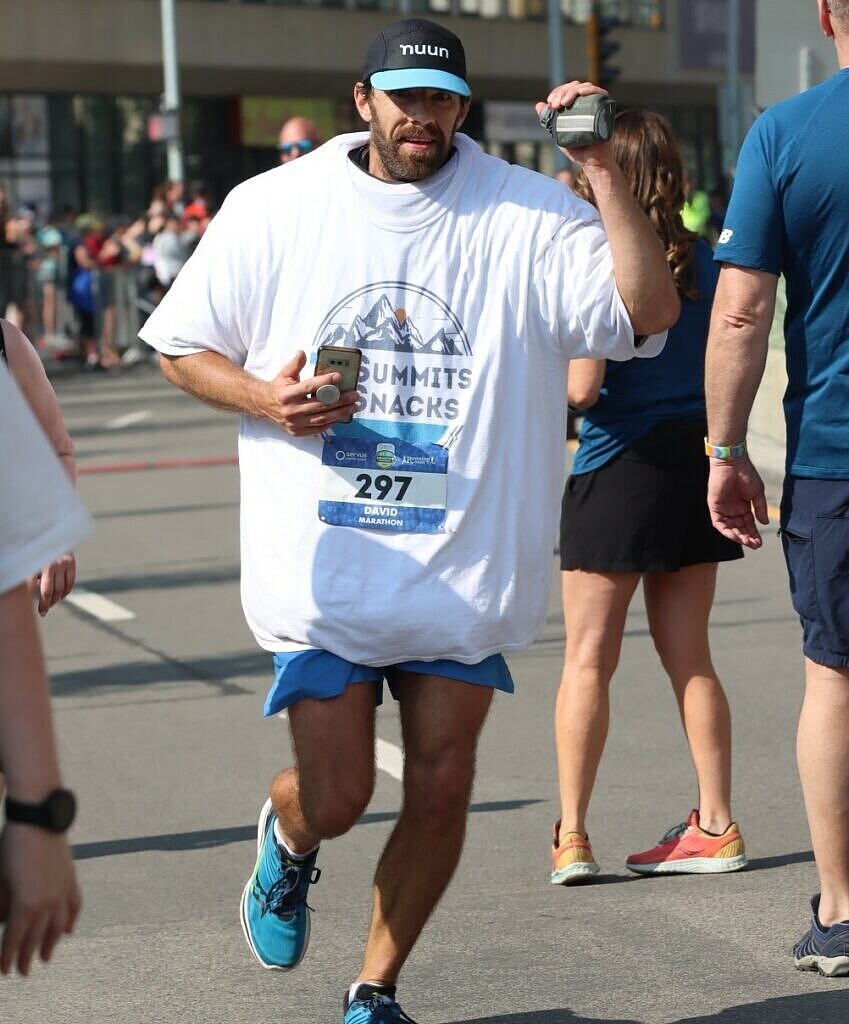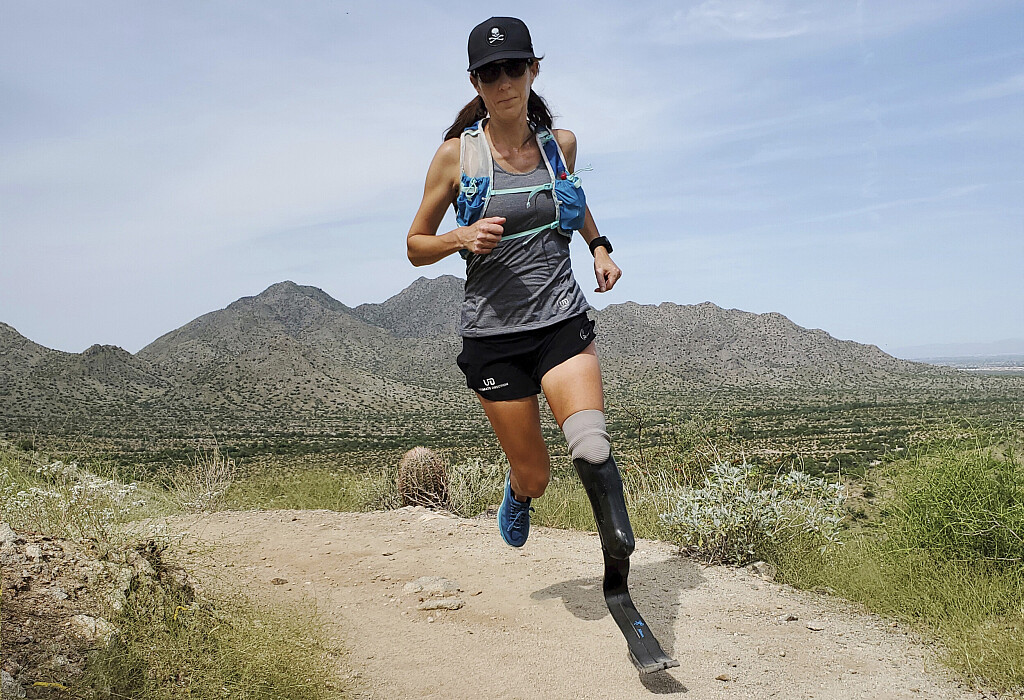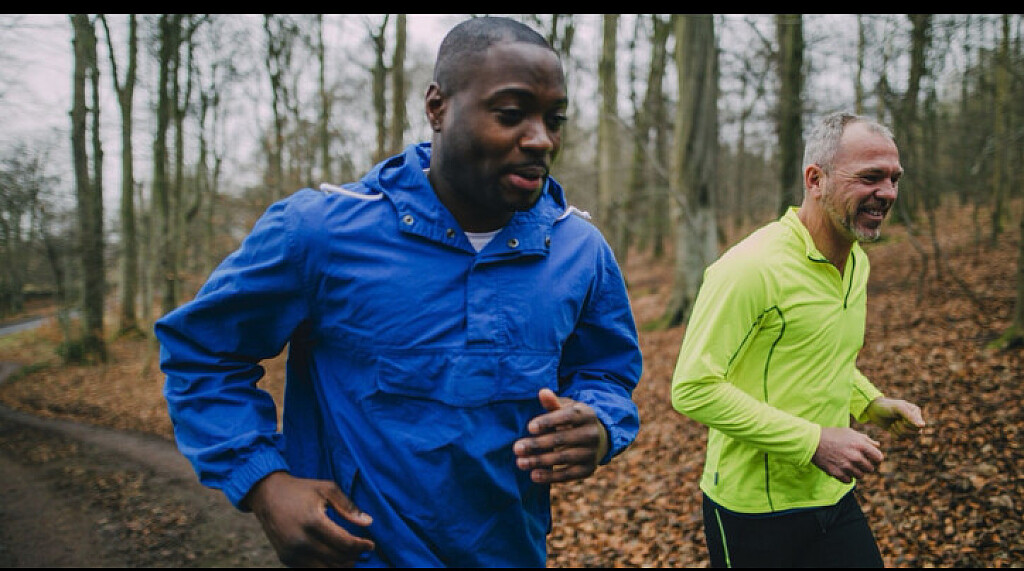Running News Daily
Running News Daily is edited by Bob Anderson. Send your news items to bob@mybestruns.com Advertising opportunities available. Train the Kenyan Way at KATA Kenya and Portugal owned and operated by Bob Anderson. Be sure to catch our movie A Long Run the movie KATA Running Camps and KATA Potato Farms - 31 now open in Kenya! https://kata.ke/
Index to Daily Posts · Sign Up For Updates · Run The World Feed
Articles tagged #Cancer
Today's Running News
Sebastian Sawe Leads the Way With Bold Anti-Doping Initiative Ahead of Berlin Marathon
Sebastian Sawe, the 2025 London Marathon champion and currently the fastest marathoner in the world, is preparing for his third career marathon on September 21 in Berlin. Determined to ensure his performances are beyond question, Sawe has taken an unprecedented step: partnering with the Athletics Integrity Unit (AIU) to undergo one of the strictest anti-doping programs ever seen in the sport.
In collaboration with his management team and adidas, Sawe’s program includes:
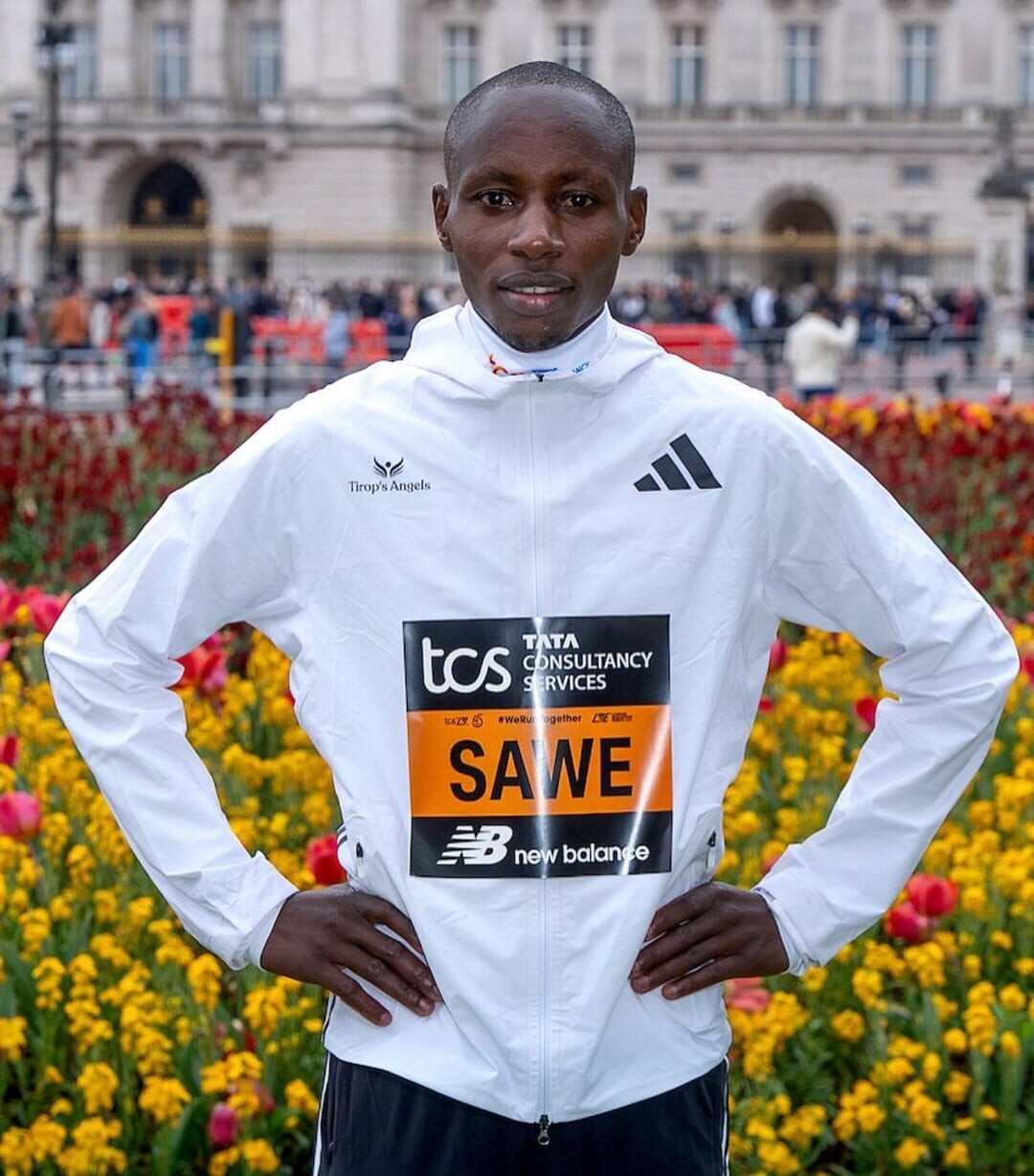
• A minimum of 25 anti-doping tests in the two months leading up to Berlin.
• Surprise, out-of-competition testing under the most advanced laboratory protocols.
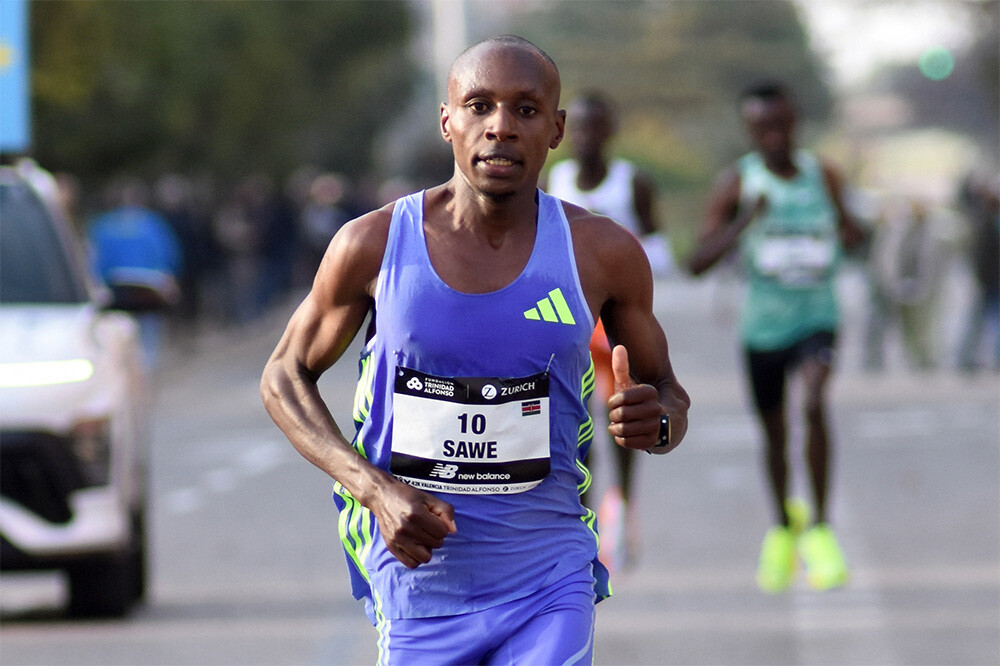
• Complete independence in testing, with no prior notice given to Sawe or his team.
• Full financial support from adidas, his primary sponsor.
Explaining his decision, Sawe said:
“I am tired of reading constant doubts and accusations whenever a Kenyan athlete performs well. I acknowledge that doping is a real issue in our country, and ignoring it would be a mistake. We must face it, work with organizations like AIU and World Athletics, and fight this problem that feels like a cancer for Kenyan athletes. My hope is to set an example, encourage others to act, and show that clean performances are possible. Above all, I want people to know that when I line up in Berlin, I am clean, and my results should not be questioned just because I am Kenyan.”
The testing officially began on July 25.
Sawe’s initiative comes at a crucial moment, as Kenya’s Anti-Doping Agency was recently declared non-compliant with WADA’s code. While the agency has 21 days to contest the ruling and implement corrective measures, Sawe’s leadership highlights a proactive and athlete-driven path forward.
As he builds toward Berlin, Sawe is not only racing for victory but also for the integrity of Kenyan athletics, proving that world-class performances can and must be achieved clean.
by Boris Baron
Login to leave a comment
From Perth to Bondi on Foot: Goodge Sets New Trans-Australia Record
William Goodge Runs Across Australia in 35 Days
British endurance runner William Goodge has made history by becoming the fastest person to run across Australia, completing the grueling 3,800-kilometer (2,361-mile) journey in just 35 days. His run began at Cottesloe Beach in Perth on April 15, 2025, and ended on May 19, 2025, when he touched the waves of Bondi Beach in Sydney.
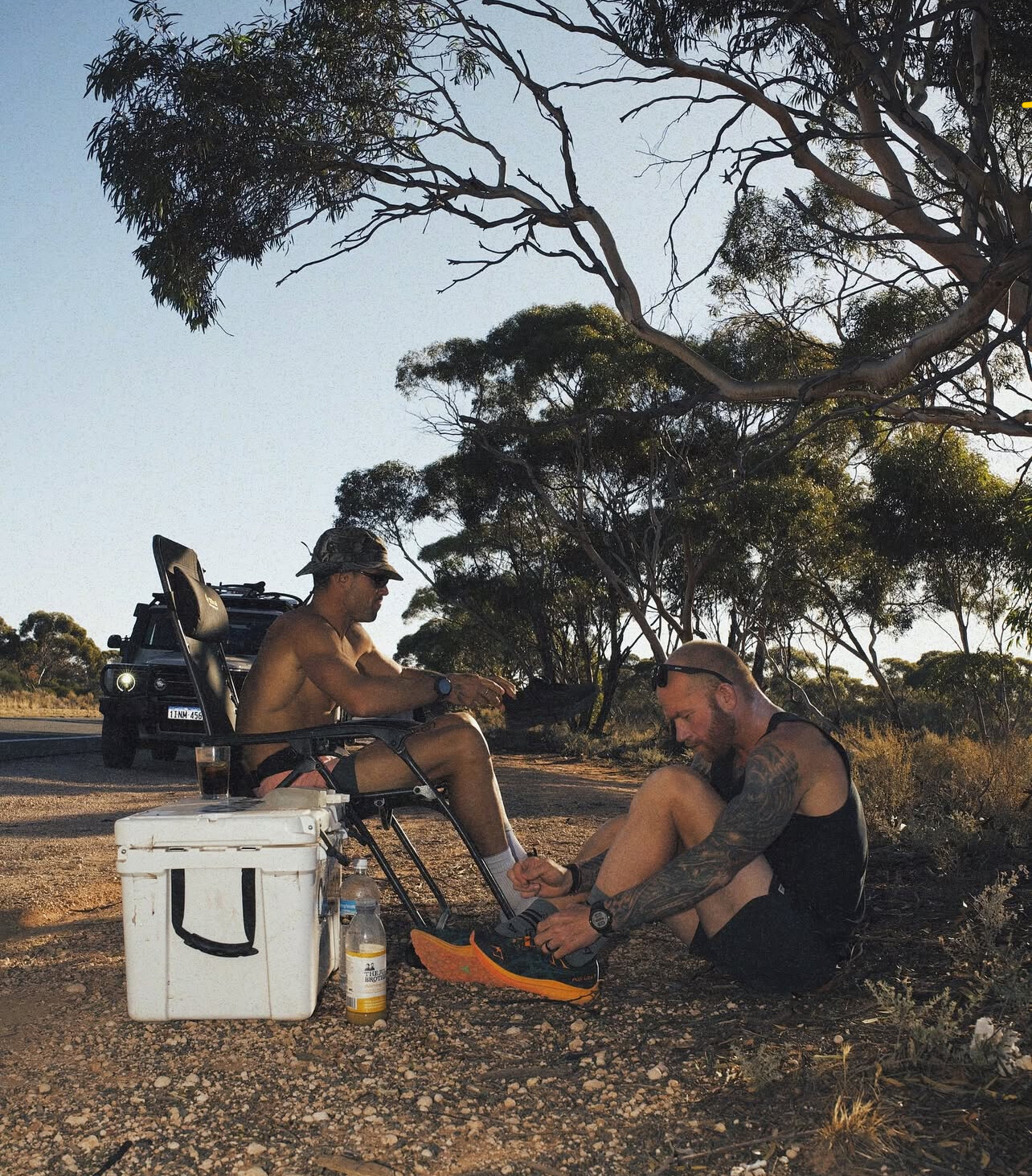
Goodge averaged more than 100 kilometers per day—the equivalent of two and a half marathons daily—facing scorching heat, strong headwinds, road hazards, sleep deprivation, and the relentless physical toll of ultra-distance running.

“I wanted to do something extraordinary to honor my mother,” Goodge said at the finish line, where he placed a bouquet of lilies into the ocean in memory of Amanda Goodge, who passed away from cancer in 2018.
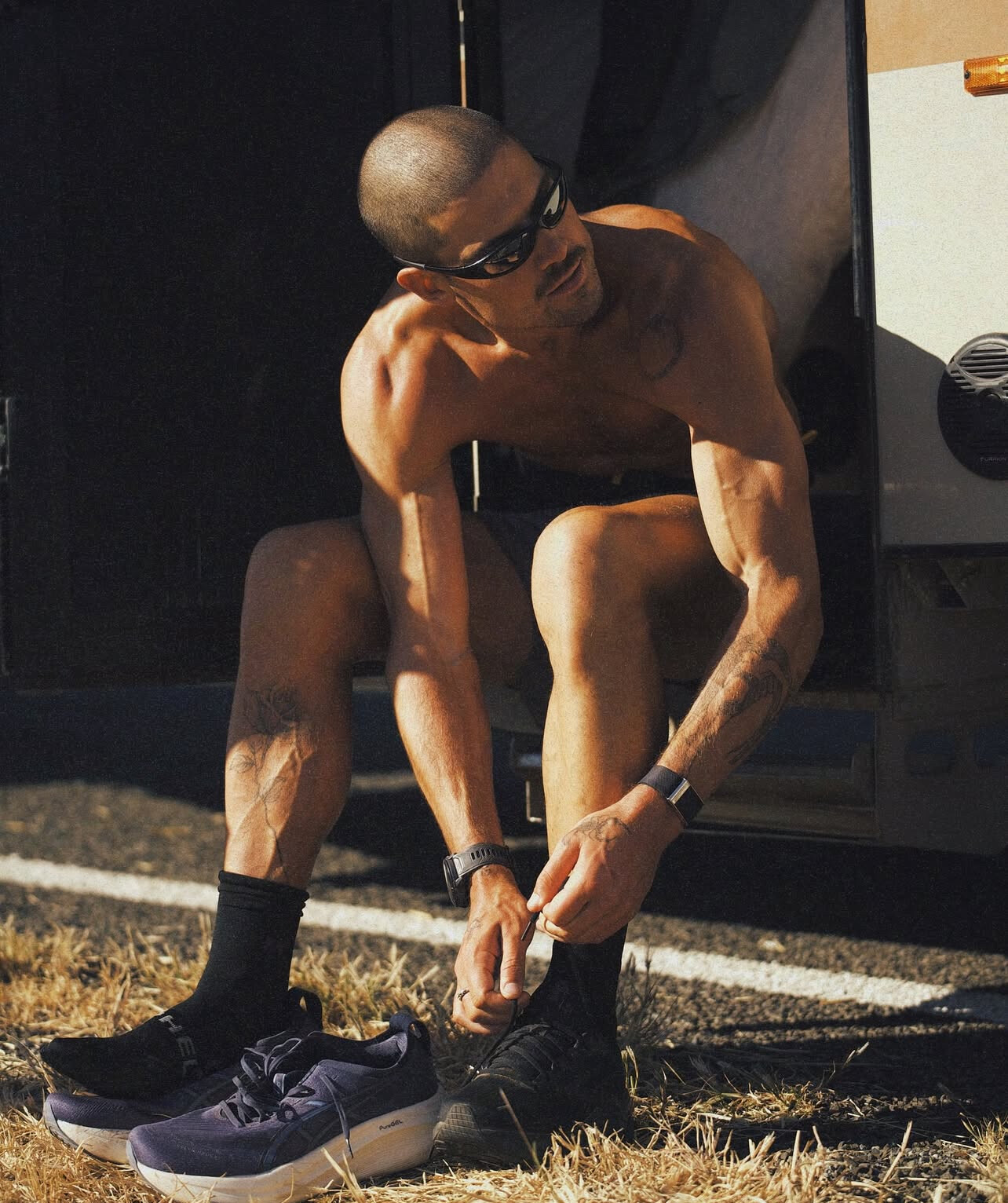
Pending official verification by Guinness World Records, Goodge’s performance would surpass the previous record of 39 days, set by Australian runner Chris Turnbull in 2023.
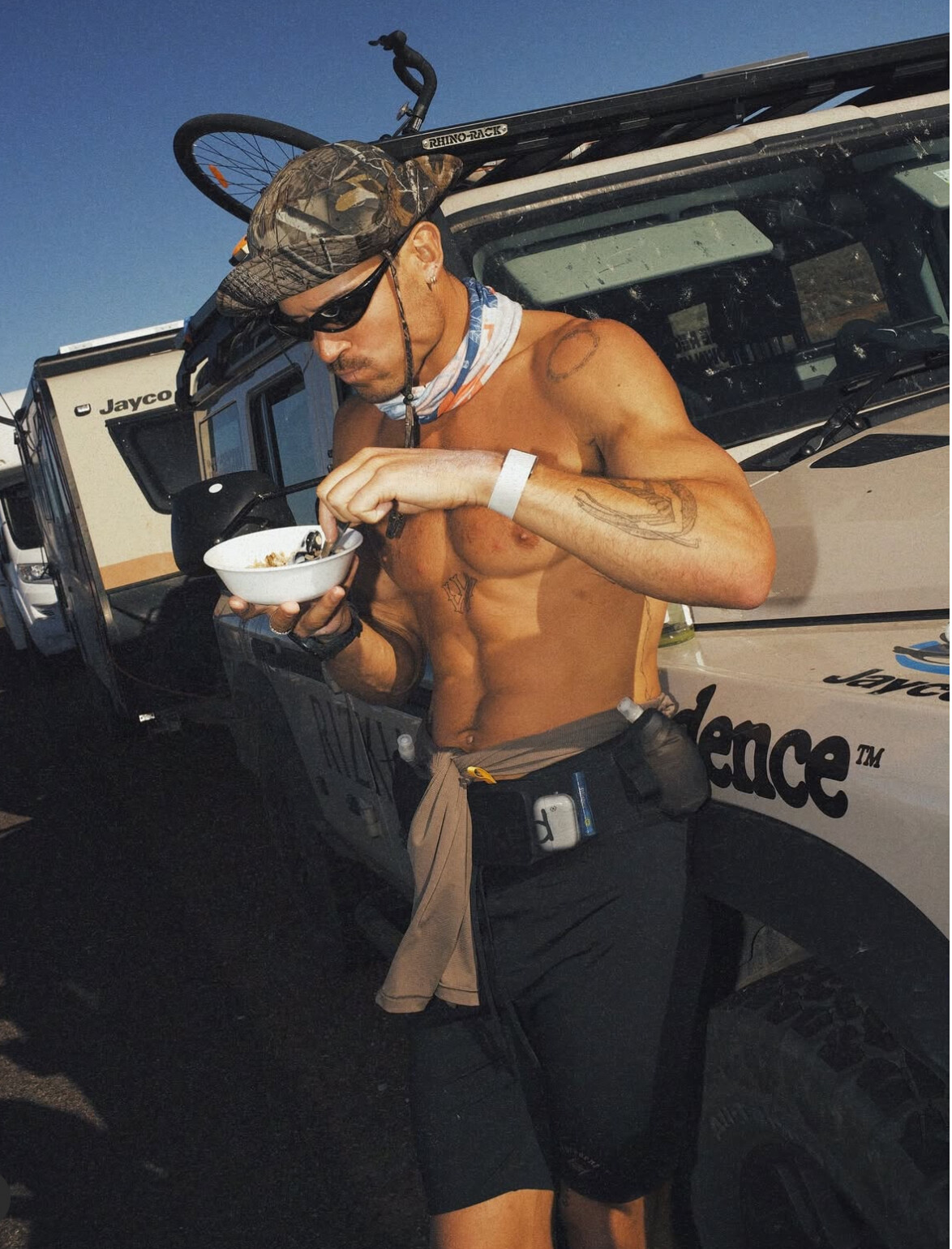
Unlike supported ultra challenges that take place in organized formats, Goodge’s effort was largely self-structured, involving a mobile support team and an immense logistical operation to sustain his food, hydration, sleep, and safety needs on the road.
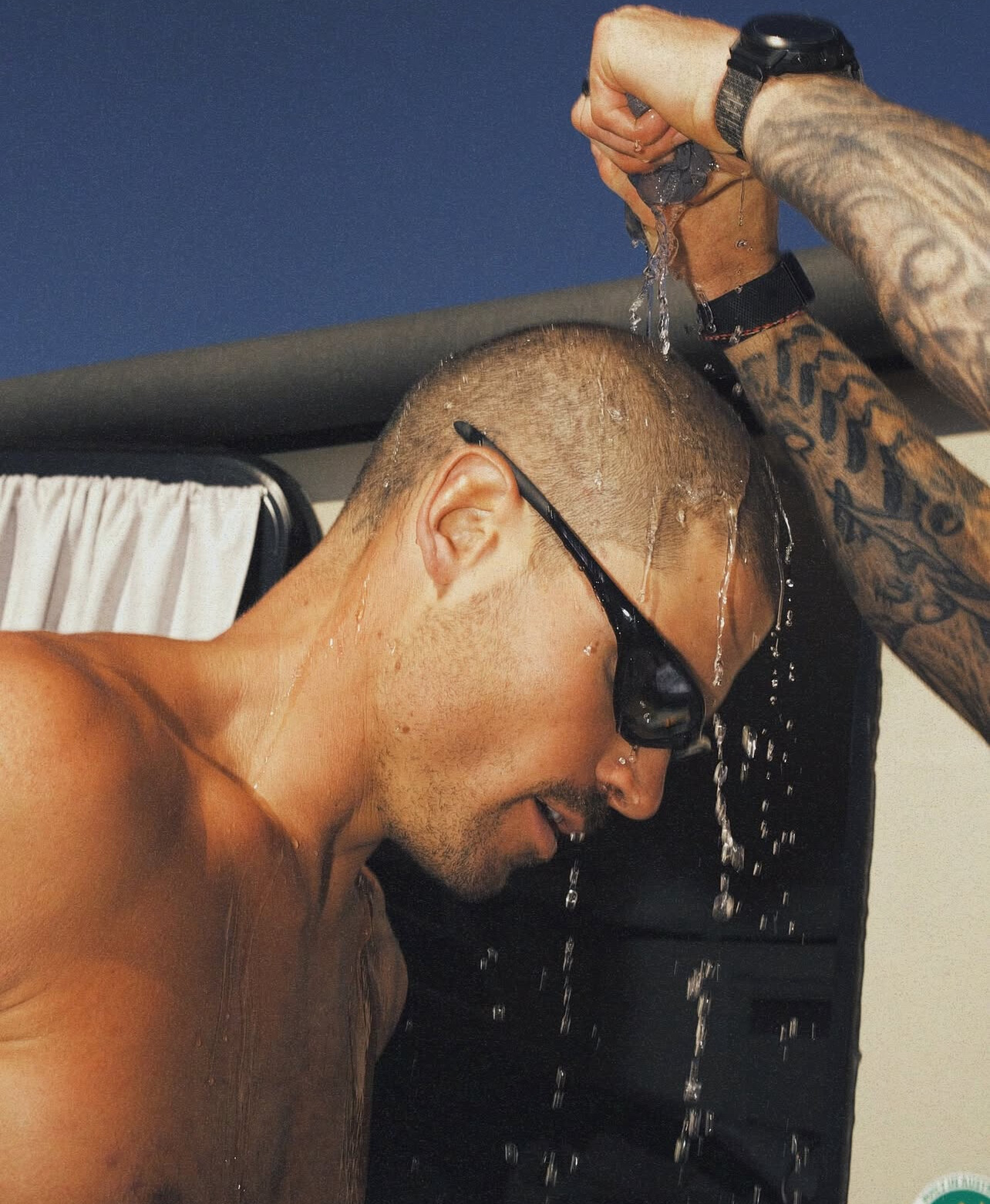
He battled through remote desert stretches, road trains, and a daily regimen that pushed his body and mind to the limit. Along the way, he kept his followers updated through video diaries and social media clips, providing rare insight into the daily grind of a true endurance athlete.

Running With Purpose
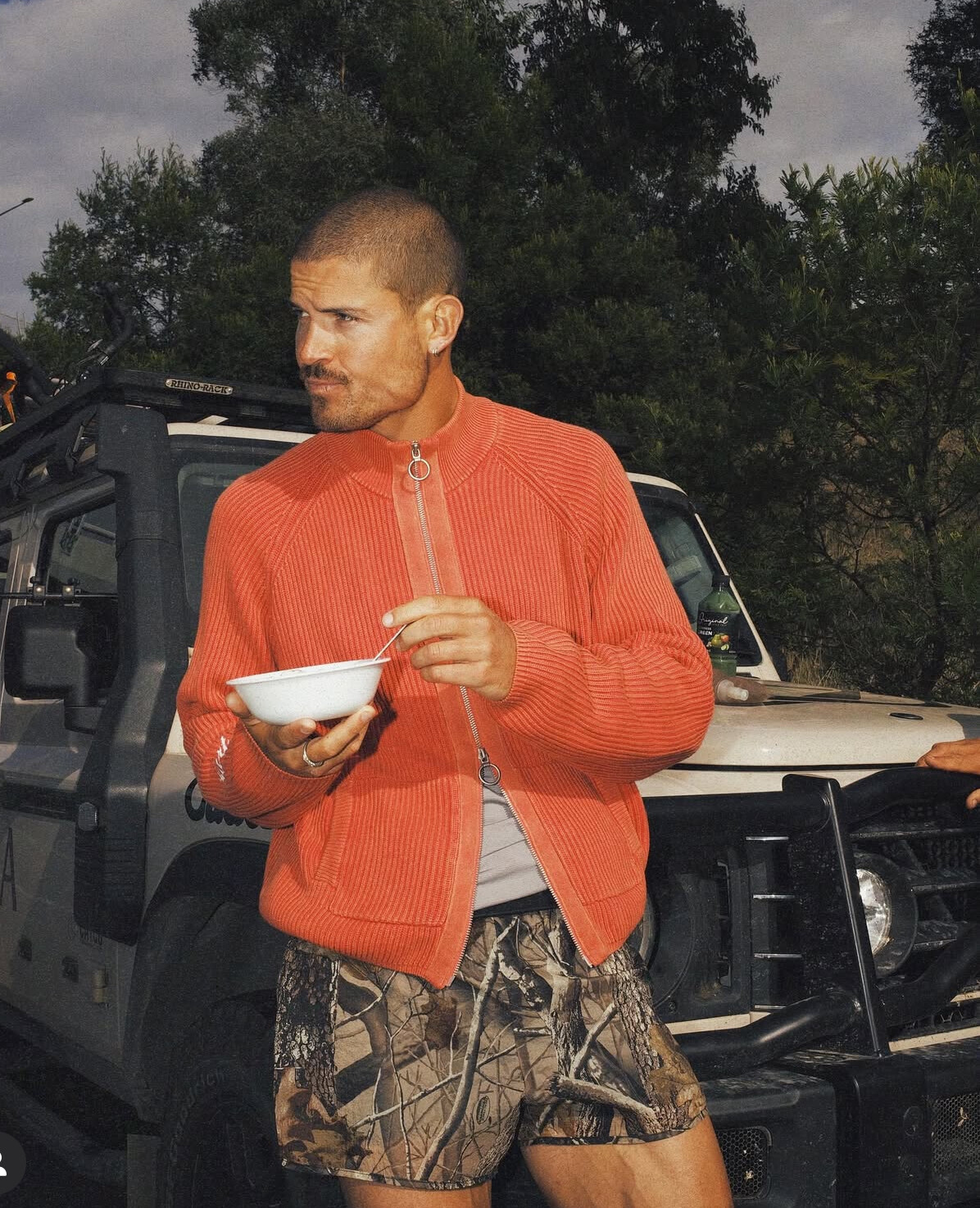
More than a personal challenge, the run served as a major fundraiser for cancer research and a tribute to his late mother. Goodge raised both awareness and donations for Macmillan Cancer Support, the organization that assisted his family during their time of need.
“This wasn’t just about breaking a record,” he said. “It was about showing what the human body and spirit can endure when love is the motivation.”
What’s Next?
With his record-setting run across Australia behind him, Goodge joins a short list of global ultra-endurance icons who have taken on transcontinental efforts. His journey may inspire future attempts—not only across Australia but in other parts of the world where such feats are yet to be fully explored.
by Boris Baron
Login to leave a comment
Why So Many People Are Running Marathons Now
April 27, 2025, is shaping up to be one of the biggest marathon days in history. Across the globe, tens of thousands of runners are lining up to test themselves over the classic 26.2-mile distance. The surge in marathon participation reflects a larger movement: more people than ever before are choosing to challenge themselves, honor loved ones, improve their health, and be part of something bigger than themselves.
At the London Marathon alone, more than 56,000 runners are expected to take part, potentially setting a new world record for the largest official marathon field. Each runner will bring their own story to the streets of London — whether it’s running for a charity, celebrating recovery, or simply achieving a personal goal. Since the event’s founding, the London Marathon has raised over £1.3 billion ($1.7 billion) for charity, reinforcing how marathons have become deeply tied to causes and community.

Meanwhile, thousands more will take to the start line at the Haspa Hamburg Marathon in Germany, the Madrid Marathon in Spain, and the Uniper Düsseldorf Marathon, which is returning after a six-year hiatus. In the United States, marathons like the Big Sur International Marathon in California, the Oklahoma City Memorial Marathon, and the Glass City Marathon in Toledo are also drawing strong fields.
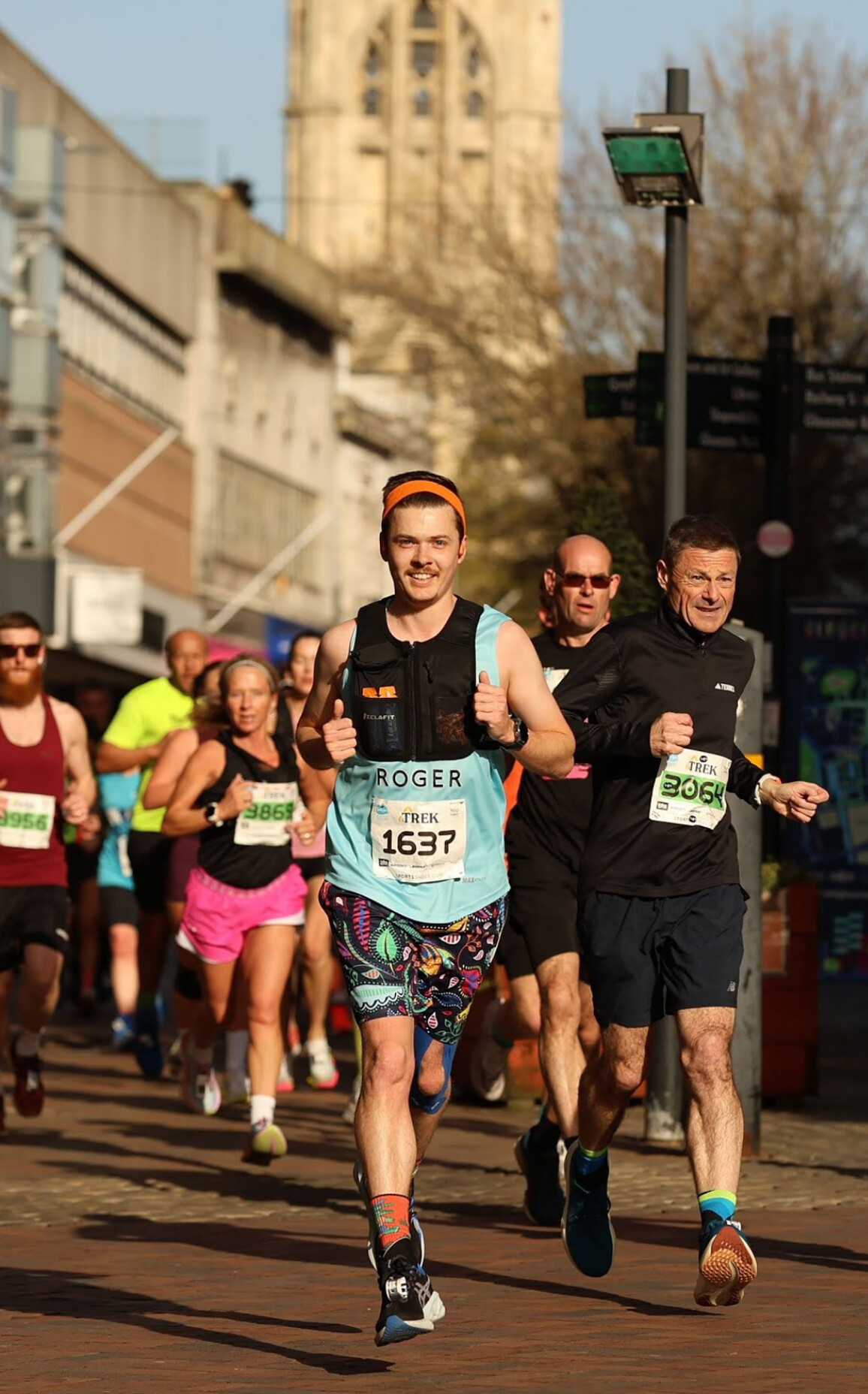
One of the biggest reasons for the boom in marathon running is the personal connection runners feel to the challenge. For some, like Julie Wright, who is running London in memory of her daughter who passed away from breast cancer, marathon training became a way to heal and to move forward. For others, the marathon offers a tangible milestone at a time when traditional life achievements like homeownership or career stability can feel increasingly out of reach. Completing 26.2 miles offers a powerful sense of accomplishment.
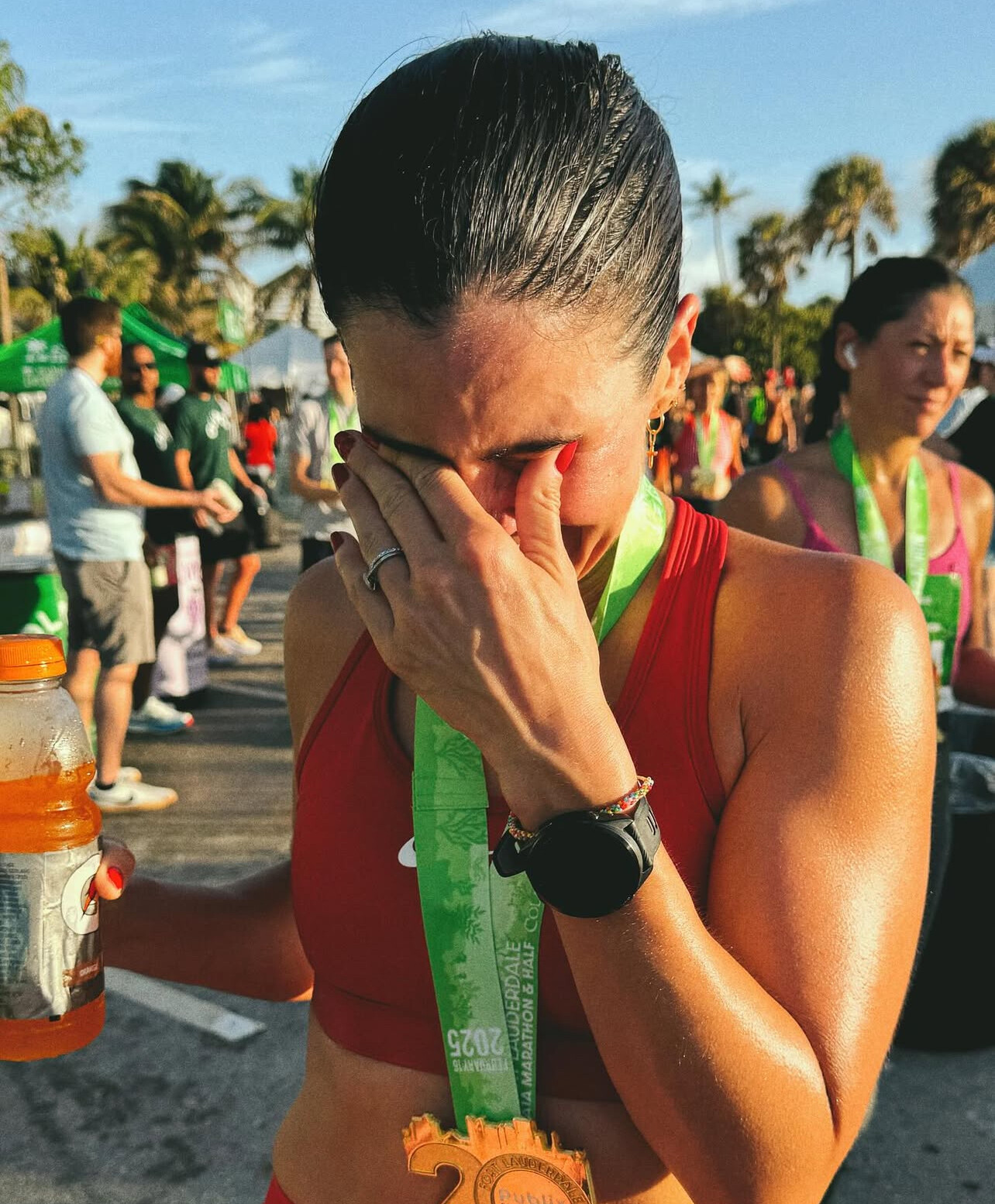
Advances in running technology have also helped fuel the rise. New shoes with carbon-fiber plates, better cushioning, and smart training apps make it easier for newcomers to successfully prepare. Social media has helped too, creating vibrant global communities where runners can share training tips, encouragement, and race day celebrations.
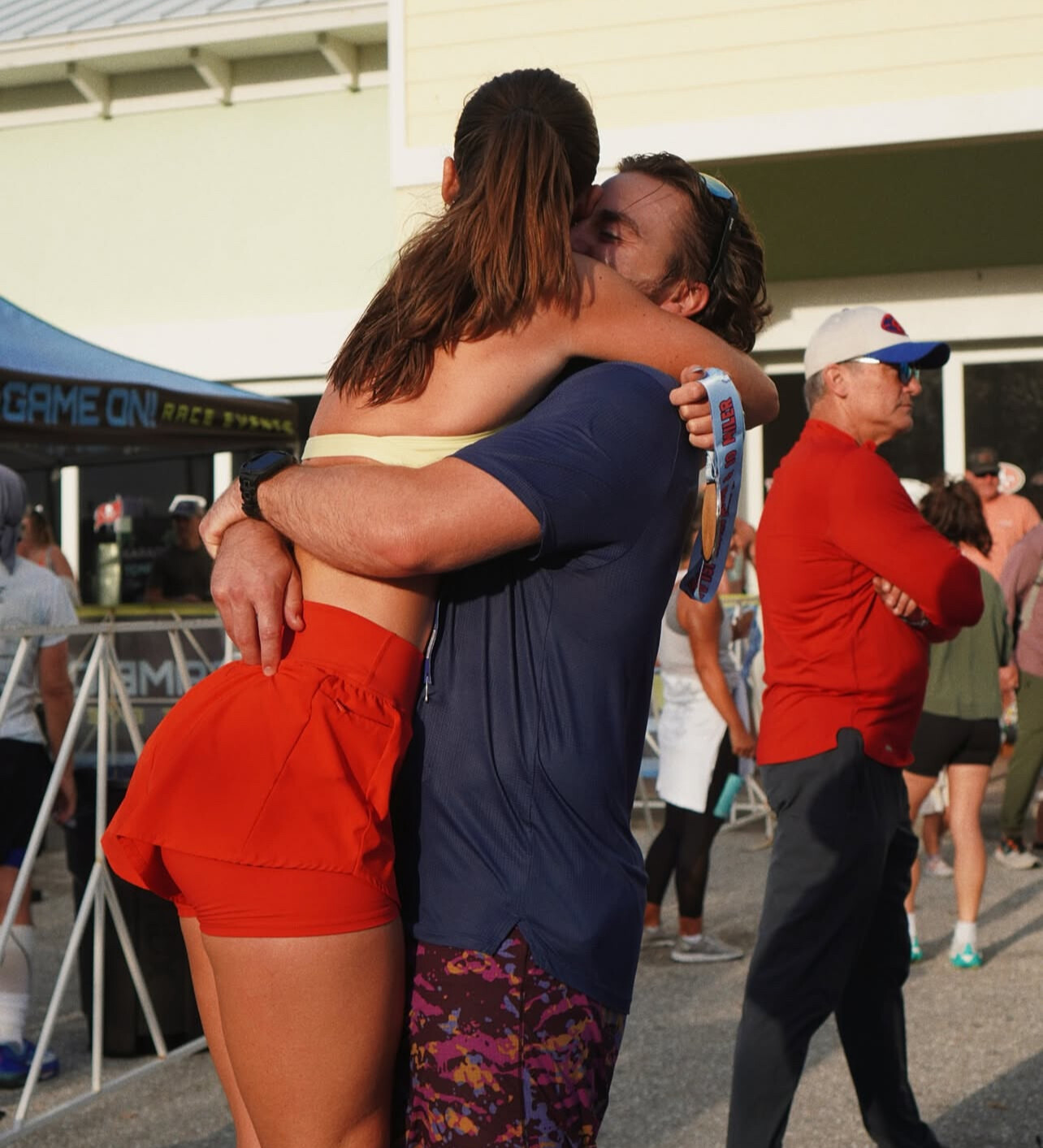
Finally, marathons today are more inclusive than ever before. Age, experience, and speed are no longer barriers. At the London Marathon, runners from 18 to over 80 years old will be lining up together. It’s this spirit — community, personal challenge, and shared experience — that continues to draw more people to marathons every year.
Today, April 27, 2025, the marathon stands stronger than ever, a symbol of resilience, passion, and the enduring human spirit.
My Best Runs is your source for running news, race coverage, features, training insights, and inspiring stories from the world of distance running.
by Boris Baron
Login to leave a comment
Paula Radcliffe’s Daughter to Run London Marathon After Beating Cancer
This year’s TCS London Marathon will be especially poignant for British running legend Paula Radcliffe—not because she’s racing, but because her daughter is.
Now 51, Radcliffe will be on the sidelines as her 18-year-old daughter Isla runs her first marathon, raising money and awareness for Children with Cancer UK, the charity that supported her through one of the most difficult times in her life.
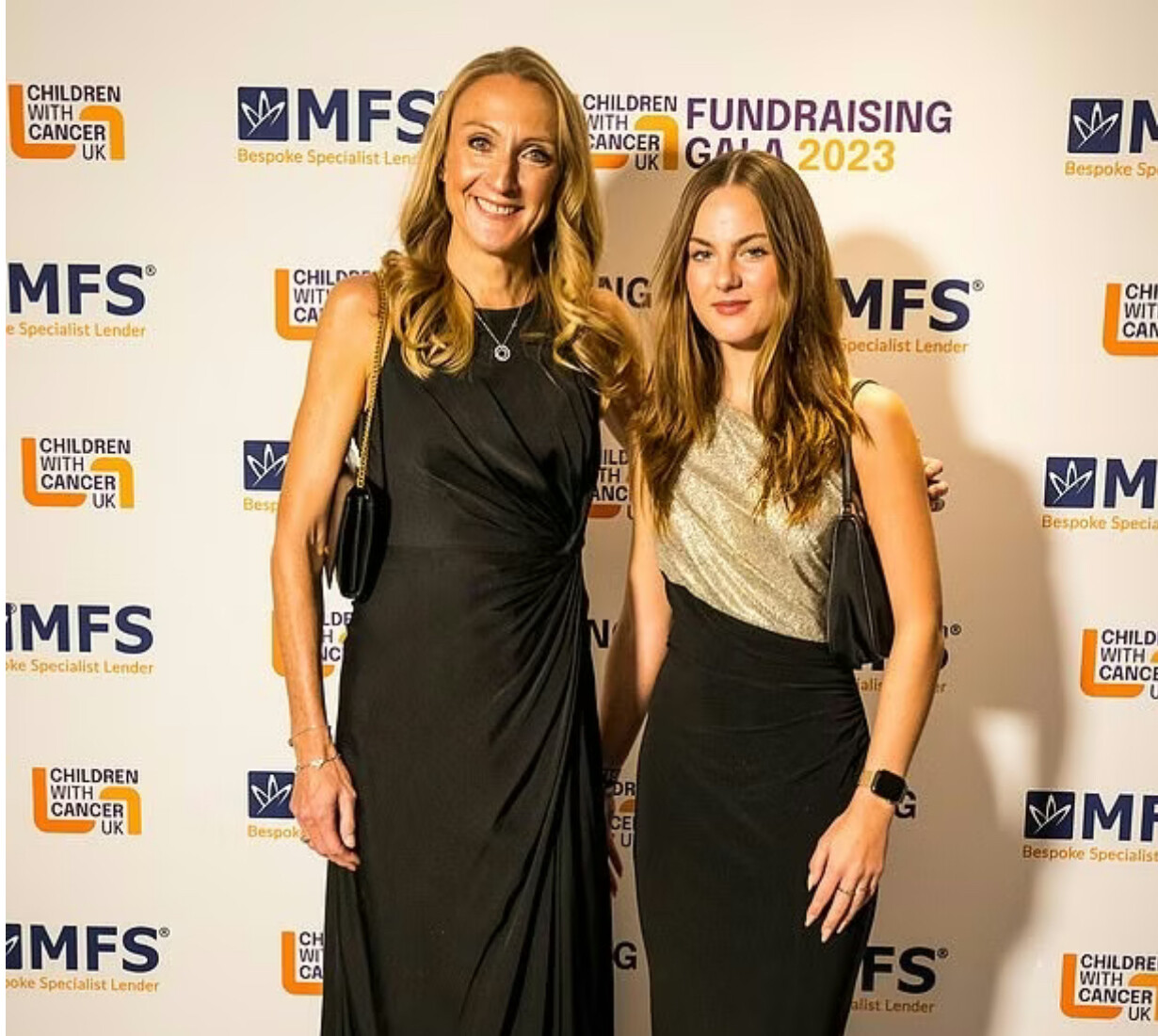
Isla was diagnosed with a rare form of ovarian cancer at just 13 years old. “I knew something was wrong when she started getting chronic stomach aches and was bleeding,” Radcliffe told Radio Times. The diagnosis was a shock for the entire family and began a long and challenging journey.
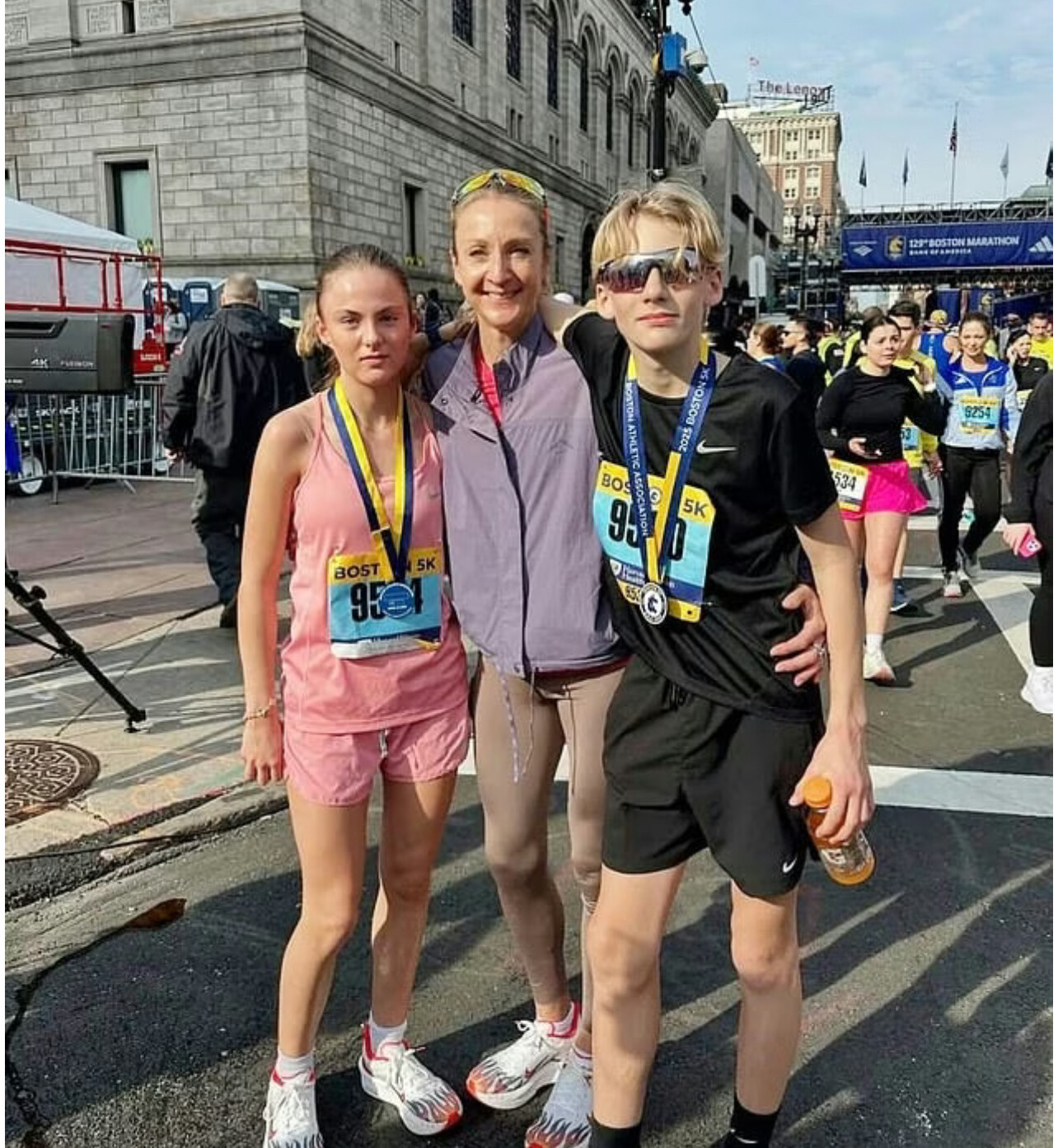
Having now fully recovered, Isla is not only healthy but strong—and ready to take on the 26.2 miles through London on April 27. She’ll be running in support of the very cause that helped her through treatment.
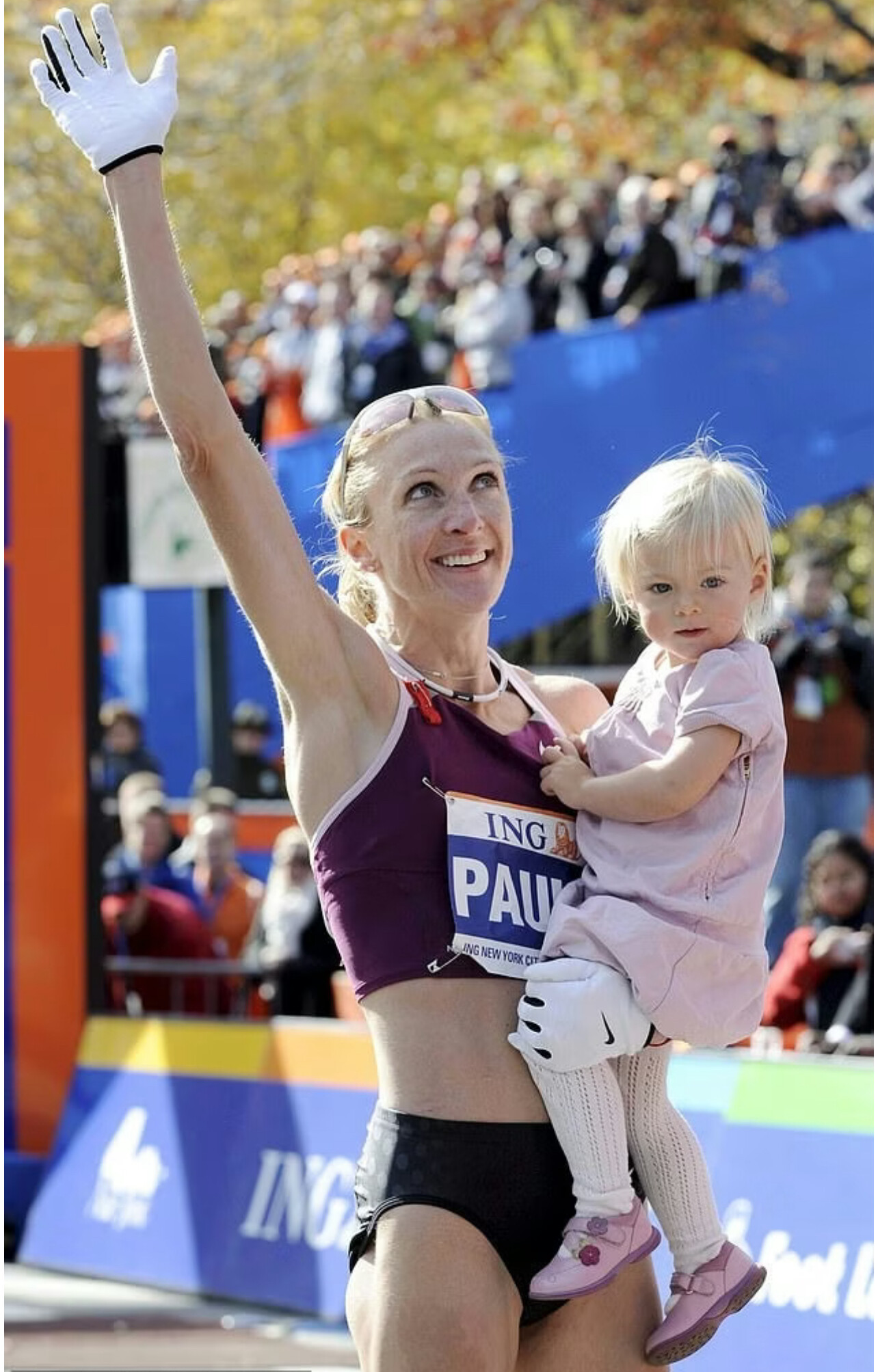
Radcliffe, who broke the marathon world record in 2003 with her iconic 2:15:25 in London, has returned to marathoning herself. She’s also been chronicling her journey—and helping others train—through her new podcast series Paula’s Marathon Run Club, also sponsored by Children with Cancer UK.
“This is going to be a really emotional year,” Radcliffe said. “To see Isla cross the finish line will mean more than any time I’ve crossed it myself.”
More than a race, the moment will represent survival, strength, and the bond between a mother and daughter who have endured—and overcome—a terrifying ordeal.
by Boris Baron
Login to leave a comment
Grete Waitz The Runner Who Changed Marathoning Forever
On a crisp October morning in 1978, an unassuming schoolteacher from Norway stepped up to the starting line of the New York City Marathon. Grete Waitz, a world-class middle-distance runner, had never raced beyond 3,000 meters. That day, she would not only cover 26.2 miles for the first time but also redefine women’s marathoning in a way no one could have predicted.
An Accidental Marathoner

At the time, Waitz was a highly accomplished track athlete, having competed in the 1972 and 1976 Olympics in the 1,500 meters. Her husband and coach, Jack Waitz, believed she had the endurance for the marathon and convinced her to give it a try. The New York City Marathon, then in its third year of running through all five boroughs, was growing in popularity, with nearly 10,000 entrants that year—including 1,240 women, a significant number in an era when women’s distance running was still fighting for recognition.
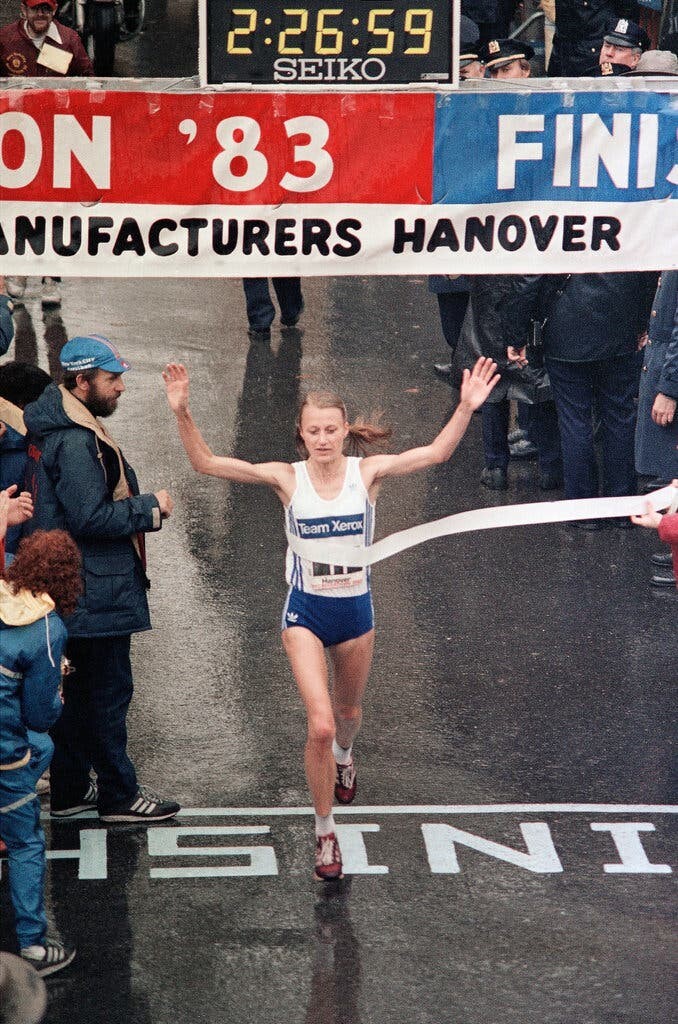
Waitz arrived in New York with no expectations, mostly treating the experience as an experiment. She was given bib “F1,” but that number did not signify any previous success in the marathon—it was merely assigned based on her status as a female elite athlete.
A Race for the Ages
Unlike today’s marathons, where elite runners typically start separately, in 1978, all competitors—professional, amateur, and first-timers alike—began together. The masses surged forward, and Waitz, running with a mix of excitement and nerves, settled into a steady pace.
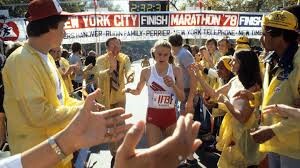
She was strong early on, but by mile 18, she was frustrated. She had no idea what she was doing, she later recalled, and even threw a cup of water at her husband in irritation when he shouted encouragement. Yet, despite her doubts, she was running at a record-setting pace.
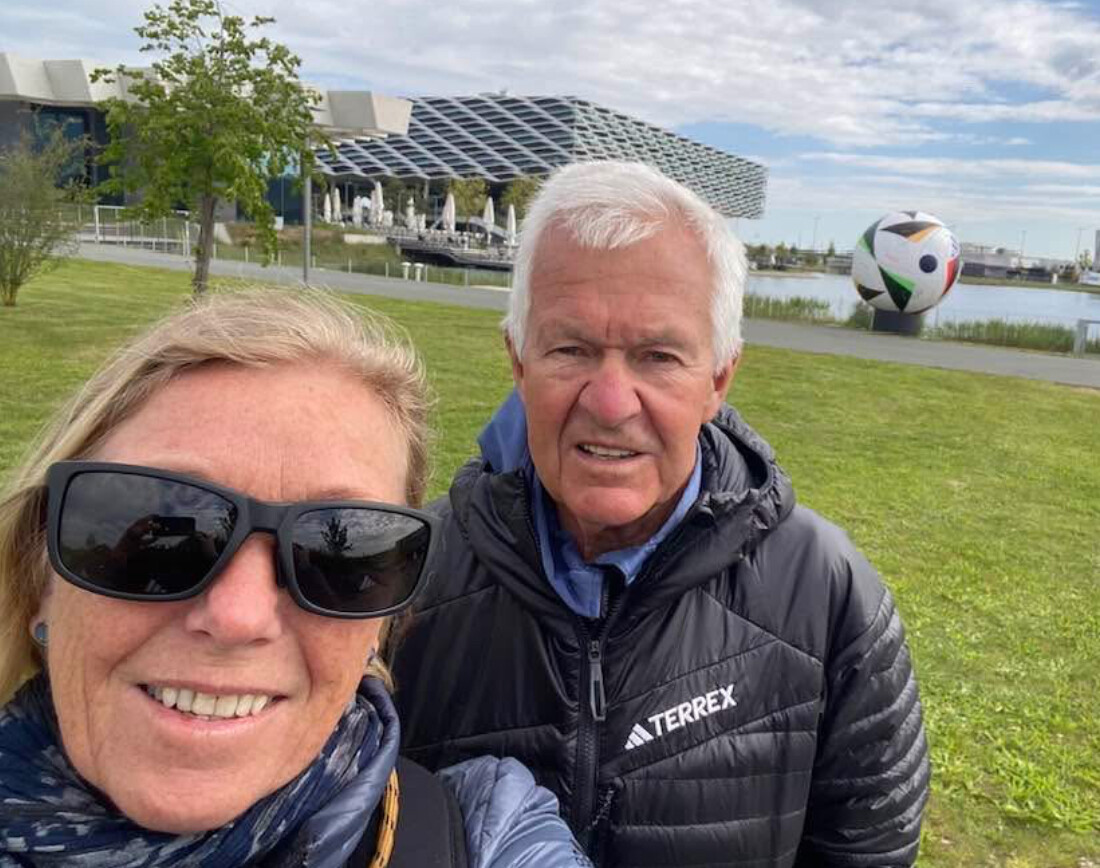
As she entered Central Park, fatigue set in, but she powered through, breaking the tape in 2 hours, 32 minutes, and 30 seconds—a world record at the time. When race director Fred Lebow greeted her at the finish line, she collapsed into his arms, exhausted and overwhelmed.
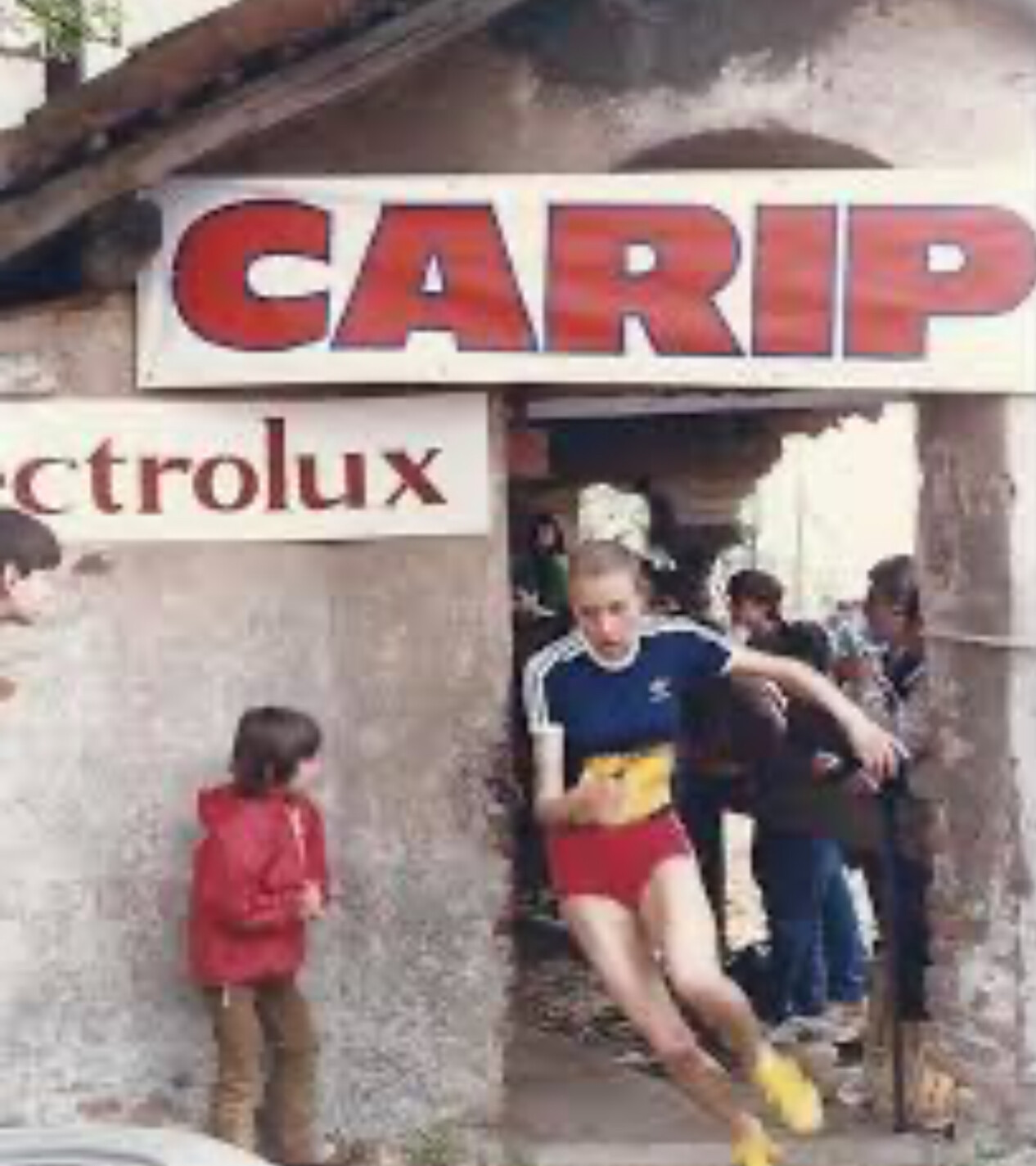
“I’ll never do another one of these,” she famously said. That promise, of course, didn’t last.
A Legacy of Dominance
That win in 1978 was just the beginning. Waitz would return to New York eight more times, winning a record nine titles between 1978 and 1988. She became the face of women’s marathoning, inspiring countless runners and proving that women not only belonged in the sport but could dominate it.
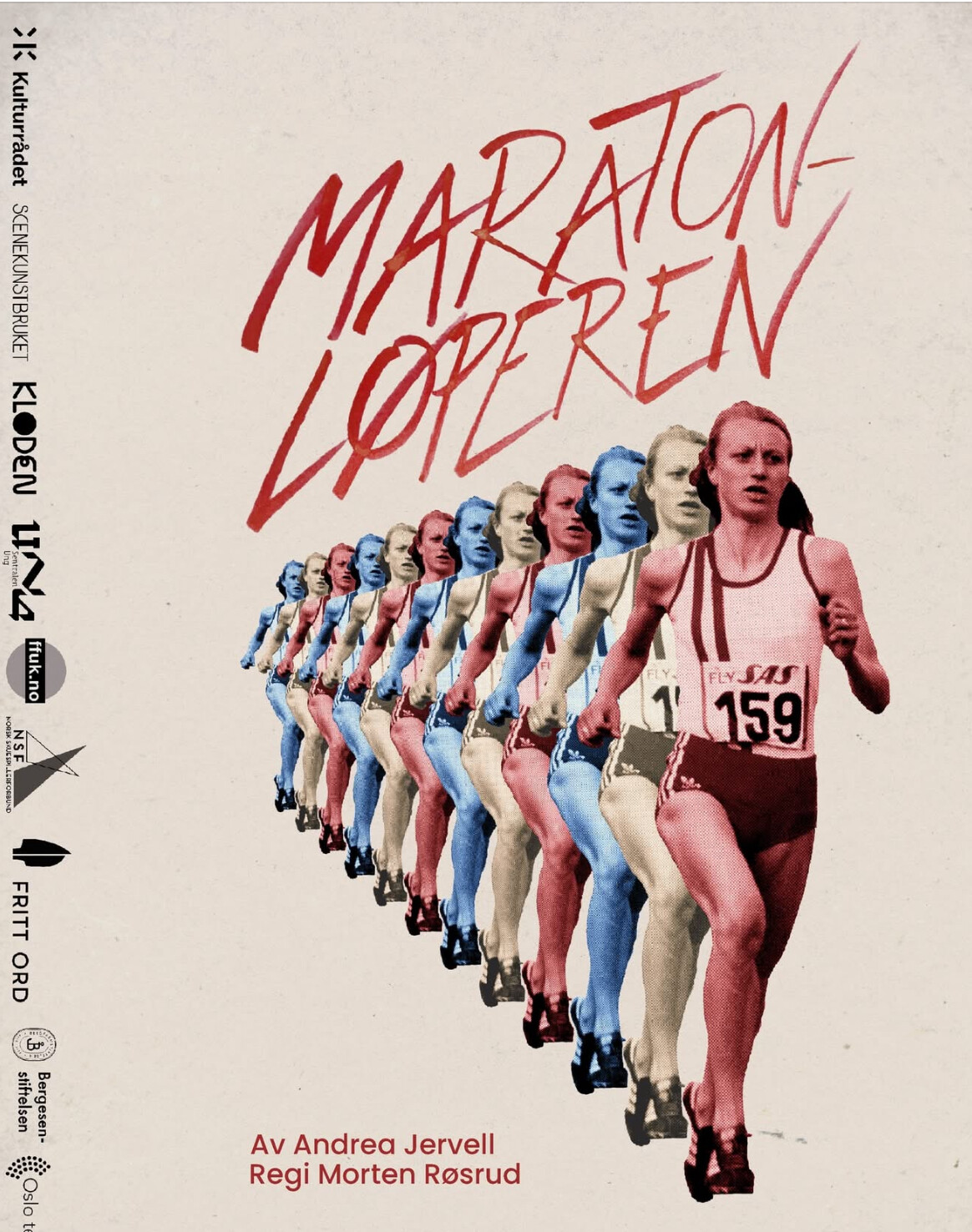
Her influence stretched beyond New York. In 1983, she won the first-ever Women’s World Championship Marathon, and a year later, she took silver in the first Women’s Olympic Marathon at the 1984 Los Angeles Games, finishing behind Joan Benoit Samuelson.
More Than a Champion
While her records and wins made her a legend, Waitz’s true impact came from the doors she opened for female distance runners. Before her era, women’s marathoning was an afterthought. The Boston Marathon had only officially allowed women to compete in 1972, and many still believed that running long distances was dangerous for women. Waitz shattered those myths.
She continued to race into her 40s and later devoted much of her time to coaching and philanthropy. In 2005, she was diagnosed with cancer, but she faced it with the same resilience she showed on the race course.
Jack Waitz: Continuing the Legacy
Grete’s husband and coach, Jack Waitz, played an instrumental role in her career, guiding her training and race strategies. Following Grete’s passing in 2011, Jack has remained deeply involved in the running community. He continues to share his expertise, offering training advice and motivational tips to runners of all levels.
Jack’s ongoing commitment ensures that Grete’s legacy endures, inspiring new generations of runners to pursue their passion for the sport.
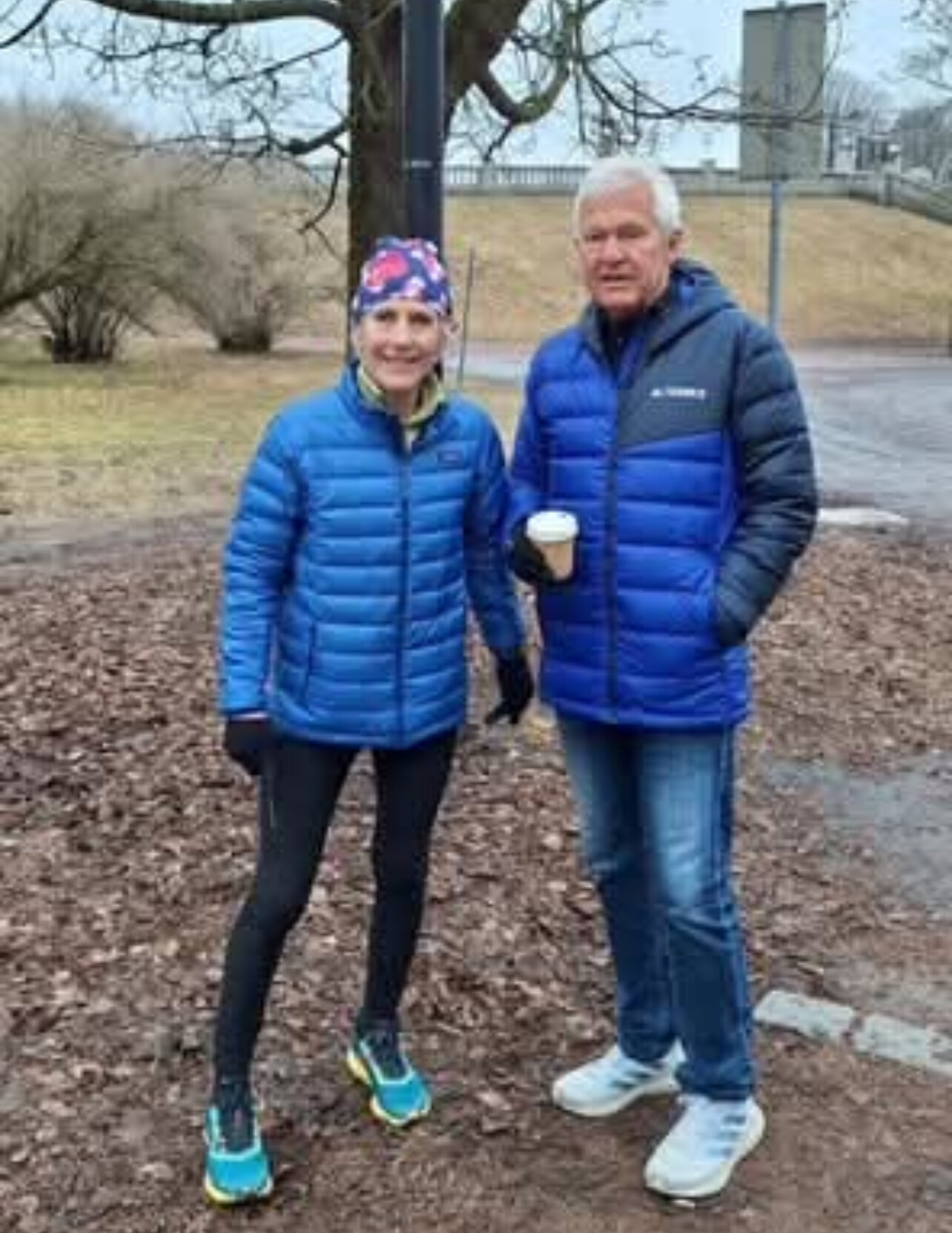
A Lasting Inspiration
Grete Waitz passed away in 2011 at the age of 57, but her influence is still deeply felt. She was not just a marathoner; she was a trailblazer who proved that women could race—and win—on the biggest stages.
Today, the New York City Marathon regularly features over 50,000 runners, nearly half of them women, a testament to how far the sport has come since 1978. The shoes are faster, the crowds are bigger, and the elites now start separately, but the legacy of Grete Waitz remains woven into the fabric of the event she helped define.
Her first marathon may have been accidental, but her impact on the sport was anything but.
by Boris Baron
Login to leave a comment
2025 City-Pier-City Half Marathon The Hague – Flat, Fast, and World-Class
The City-Pier-City (CPC) Half Marathon in The Hague is set for its 49th edition on March 9, 2025. Recognized as one of “My Best Runs: World’s BEST 100 Races,” this event offers a flat and fast course, ideal for personal bests.
Runners will start and finish at the Malieveld, traversing The Hague’s city center to the Scheveningen boulevard and back. The course is known for its speed; in 2023, Abdi Nageeye set the Dutch half marathon record here. The men’s course record is 58:33, set by Samuel Wanjiru (third photo) in 2007, and the women’s record is 1:06:56, set by Lornah Kiplagat in 2000.
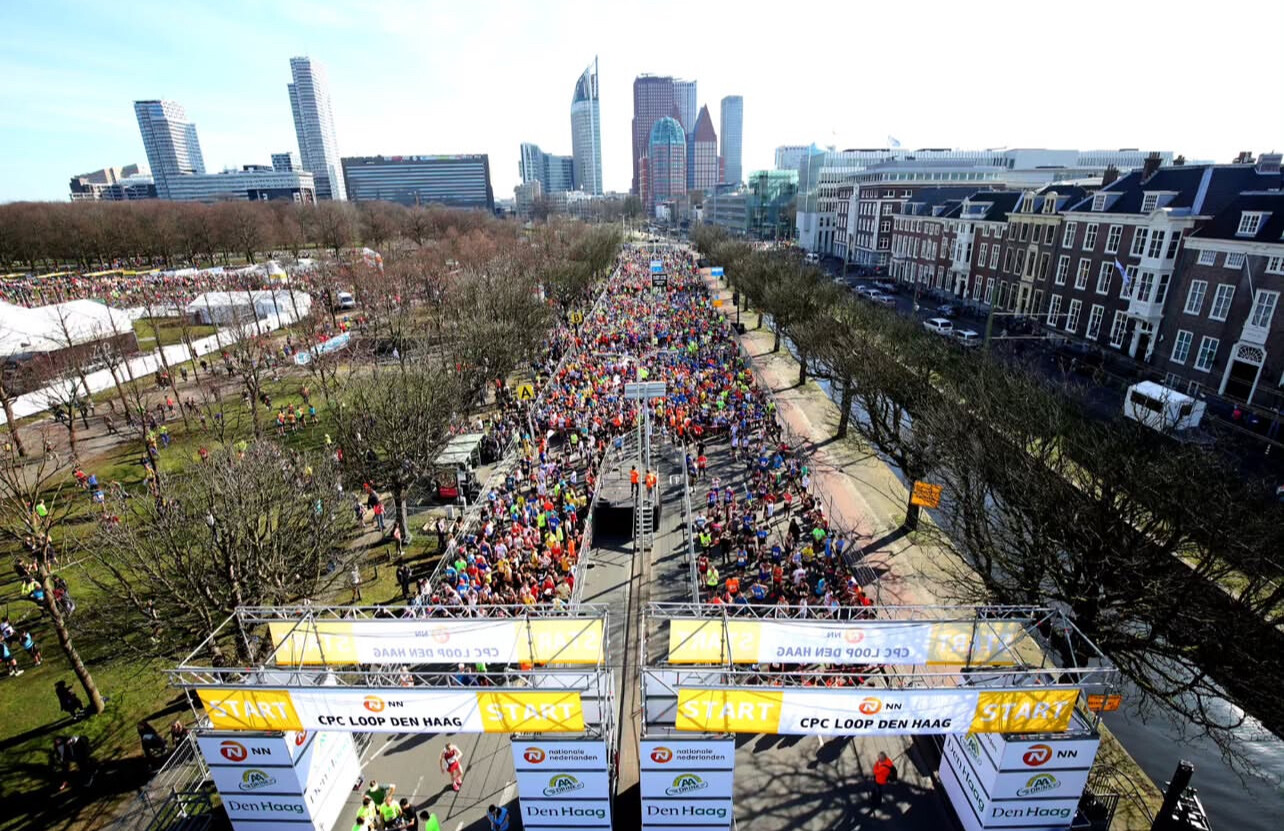
The NN Half Marathon is sold out for 2025, with approximately 30,000 participants expected across various events, including the 10 km Loop, 5 km Loop, and youth runs. The event also supports the Dutch Cancer Society (KWF), encouraging participants to fundraise for cancer research.
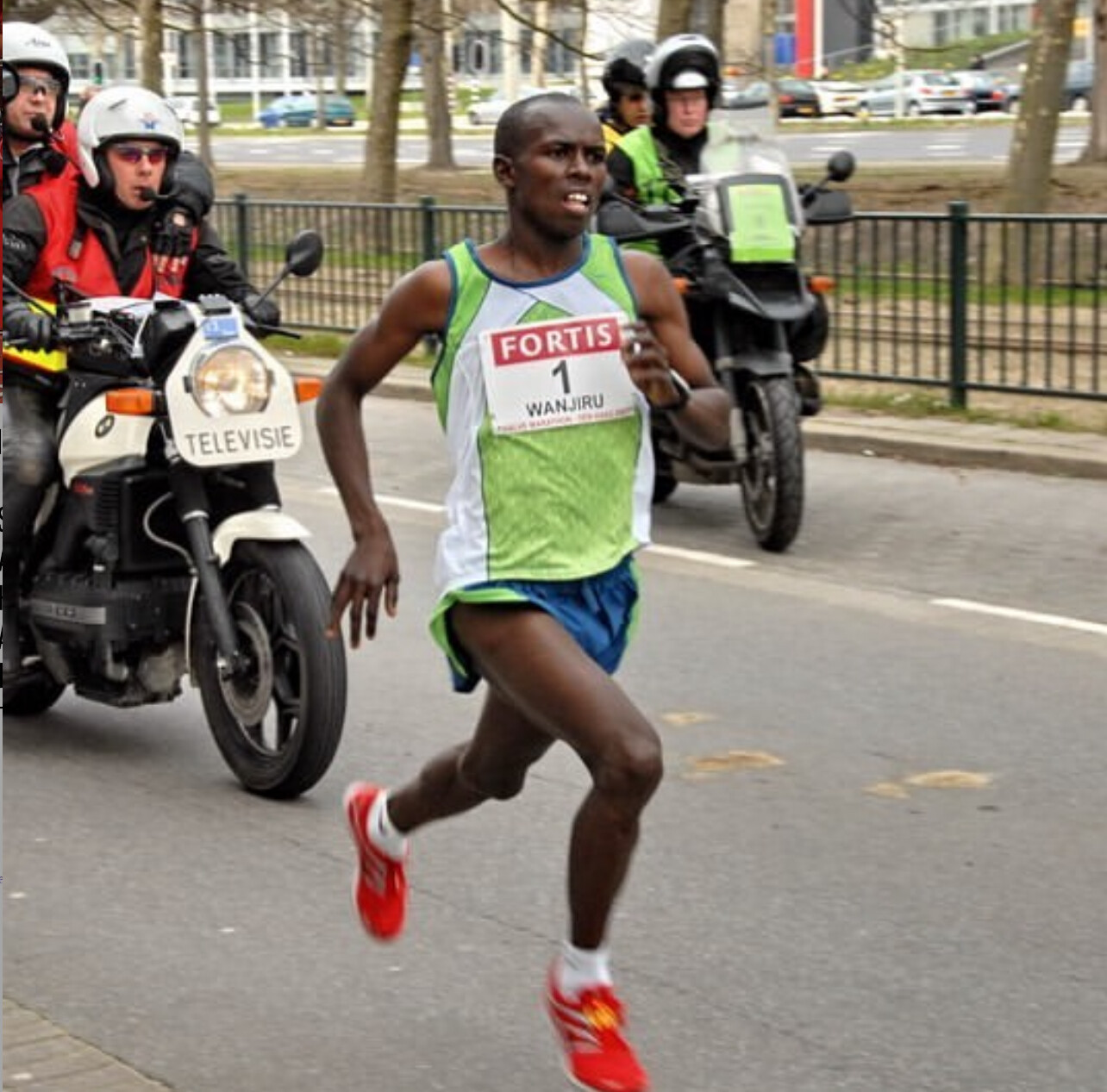
In the men’s race, Ethiopian runner Mustafa Kedir, who finished second in 2024 with a personal best of 1:00:48, returns aiming for victory. He will compete against Kenya’s Erick Sang, who has a personal best of 59:50, making him a strong contender for a sub-hour finish. Race director Marc Corstjens has indicated that the men’s field aims to break the one-hour barrier.

The women’s race features a matchup between Ethiopia’s Aberash Shilima and Kenya’s Emily Chebet, both targeting the longstanding course record. With personal bests in the 1:07 range, their competition could lead to one of the fastest half marathon times of the year.

Dutch athletes Jacelyn Gruppen, with a personal best of 1:10:35, and Olympians Anne Luijten and Jill Holterman are set to compete, adding local interest to the event.
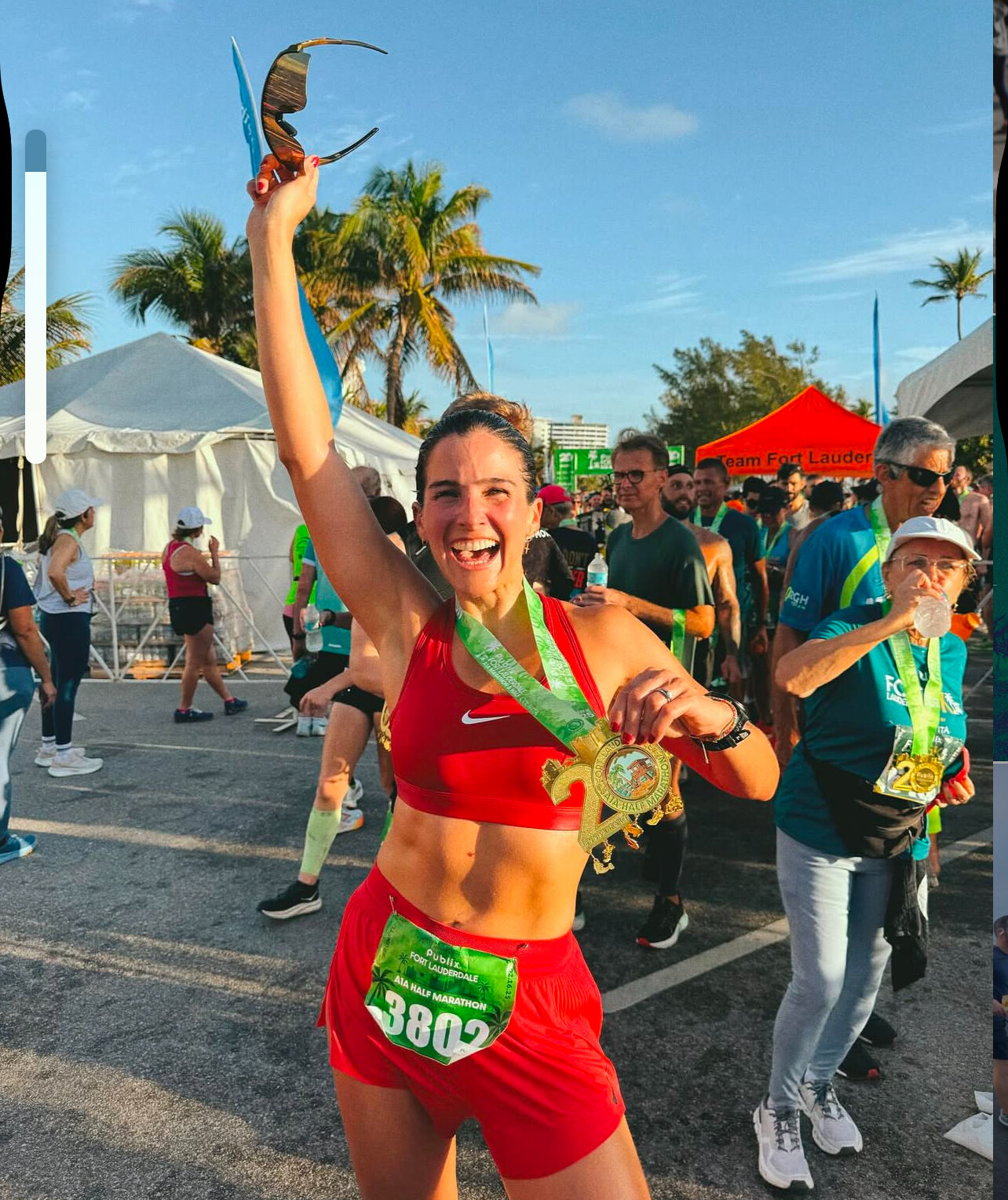
by Boris Baron
Login to leave a comment
NN CPC Loop Den Haag
The City-Pier-City Half Marathon (NN CPC Loop Den Haag) was first held in 1975 and featured a 14.5km course. This was extended to the half marathon distance the following year. The competition has been used as the Dutch half marathon championships on a number of occasions. The course is a relatively flat one, which lends itself to fast times for...
more...Former world record holder coming out of retirement to run Boston Marathon
It’s been over a decade since former women’s marathon world record holder Paula Radcliffe ran her last marathon, but the 51-year-old says she’s ready to make her awaited return. Radcliffe says she intends to run the 2025 Tokyo Marathon and the 2025 Boston Marathon seven weeks later.
On Monday, Radcliffe announced her comeback on her newest podcast, Paula’s Marathon Run Club, which she co-hosts with two-time British Olympic marathoner Chris Thompson.
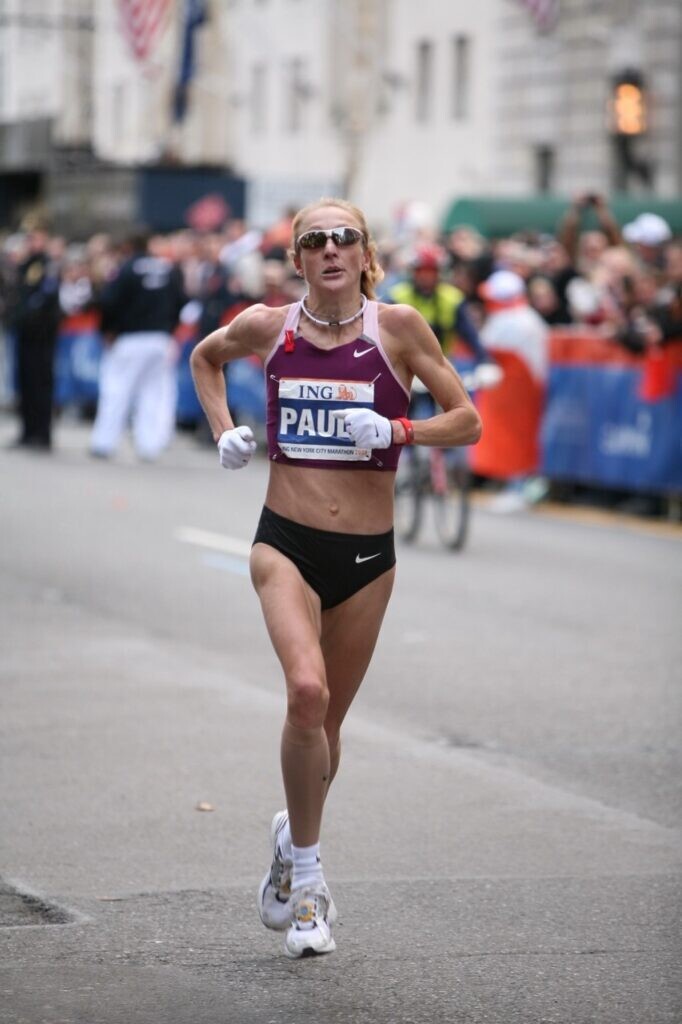
Radcliffe is the most decorated British female marathoner in history, having won both the London and New York marathons three times in her career. She is a seven-time Abbott World Marathon Major champion, and her 2:15:25 from the 2003 London Marathon still stands as the British marathon record. She held the world record for 16 years until Kenya’s Brigid Kosgei broke the mark in 2019.
The 51-year-old hasn’t announced her specific goals for either race yet, but it will be interesting to see if she still has the speed in her legs. Her last marathon came in 2015 in London, where she ran 2:36:55, winning her W40-44 age category and the masters division at the time. Despite it being 10 years ago, it will be intriguing to see if she can still run fast and challenge the British W50+ masters record of 2:47:44.
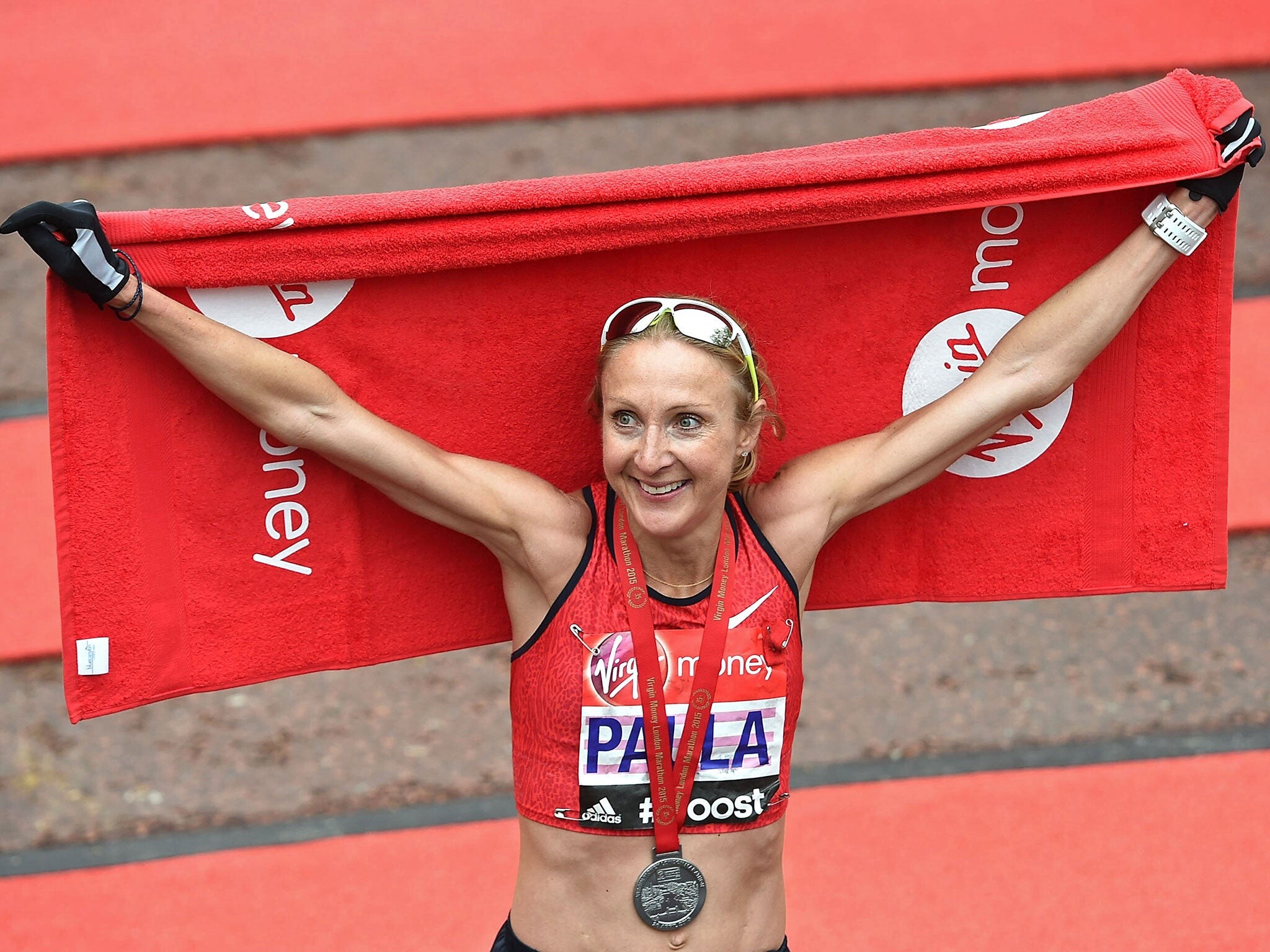
The 2025 Tokyo Marathon is scheduled for March 2, and the 2025 Boston Marathon is seven weeks later on Monday, April 21.
The weekend after Boston, Radcliffe revealed she will be heading to London to cheer on her daughter Isla as she makes her marathon debut. Isla will be running the race for charity, raising funds for Children with Cancer UK, which supported her family after she was diagnosed with cancer at age 13.
by Marley Dickinson
Login to leave a comment
Boston Marathon
Among the nation’s oldest athletic clubs, the B.A.A. was established in 1887, and, in 1896, more than half of the U.S. Olympic Team at the first modern games was composed of B.A.A. club members. The Olympic Games provided the inspiration for the first Boston Marathon, which culminated the B.A.A. Games on April 19, 1897. John J. McDermott emerged from a...
more...5 icky running habits to drop in 2025
The new year often comes with a wave of resolutions and the familiar chorus of “New year, new me.” Sure–sticking to these promises is much easier said than done, but it’s worth a try–especially when some running habits don’t deserve a spot in your 2025 plans. Here are five habits runners should ditch while striding into this fresh year of training.
1. Comparing your stats

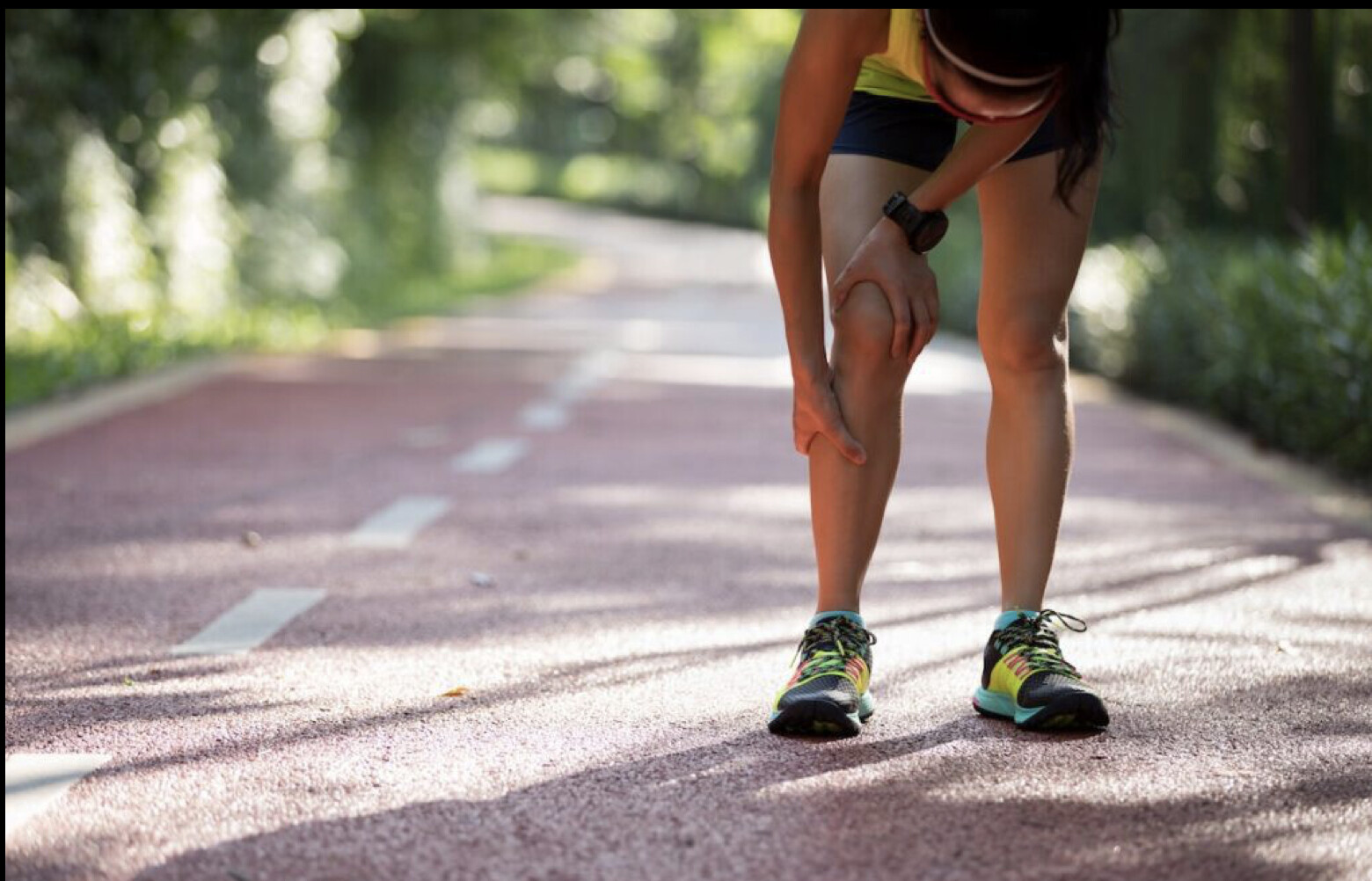
Whether you’re racing your training partners during intervals or getting lost in a Strava rabbit hole chasing kudos, it’s time to pump the brakes. Running isn’t always a competition, and continuously pushing the pace can sour relationships with your running buddies. No one enjoys being dipped at the finish line of a workout, especially when they’re expecting a chill session.
Remember, comparing stats–be it heart rate or paces–won’t always reveal who is the better athlete. Everyone’s body and running style is different; the workout warrior might not be as strong on race day. Moreover, constantly comparing yourself to your peers will take a toll on your mental health. Focusing on your own progress can allow running to continue being fun and fulfilling.
2. Running through pain
We’ve all done it–brushing off pain as mere stiffness or a minor tweak. But pushing through is a fast track to injury. Your running buddies don’t want to hear your complaints now, and they’ll want to hear them even less if that tweak turns into a major setback.
Taking a day or two off, or even swapping out running for a bike ride or fast hike (i.e., cross-training) could save you from weeks on the sidelines. Listen to your body and leave running through pain in the past.
3. Not washing hats and headbands
Running hats and headbands, usually lost in the bottom of your bag, often get overlooked on laundry day, leaving you with a smelly accessory you’re too embarrassed to admit hasn’t been washed in weeks. It’s official: this is the year we show our headwear as much love as our shirts and shorts. You can even go as far as investing in a couple of extras to keep the rotation fresh; your scalp–and teammates–will thank you.
4. Forgetting sunscreen
Runners are notorious for skipping sun protection. Studies show that runners, especially marathoners, are at a higher risk for skin cancer, due to prolonged sun exposure. Make sunscreen as essential as your winter gloves and dry socks. Toss a bottle into your running bag so you’re always prepared–2025 isn’t the year for excuses.
5. Skipping strength
Complaining about injuries but skipping the weight room? That’s so last year. While strength isn’t as critical to performance for endurance athletes as it is for sprinters, it’s still a key ingredient for injury prevention–for all runners.
Building muscles that support and stabilize joints will help your body handle the repetitive impact of running. Strength isn’t a huge commitment, either; two to three brief sessions per week is the perfect way to invest in your longevity as a runner.
Login to leave a comment
Move or Die: SCIENTISTS CRUNCHED THE NUMBERS TO COME UP WITH THE SINGLE BEST PREDICTOR OF HOW LONG YOU’LL LIVE—AND CAME UP WITH A SURPRISINGLY LOW-TECH ANSWER
TO PREDICT your longevity, you have two main options. You can rely on the routine tests and measurements your doctor likes to order for you, such as blood pressure, cholesterol levels, weight, and so on. Or you can go down a biohacking rabbit hole the way tech millionaire turned longevity guru Bryan Johnson did. Johnson’s obsessive self-measurement protocol involves tracking more than a hundred biomarkers, ranging from the telomere length in blood cells to the speed of his urine stream (which, at 25 milliliters per second, he reports, is in the 90th percentile of 40-year-olds).
Or perhaps there is a simpler option. The goal of self-measurement is to scrutinize which factors truly predict longevity, so that you can try to change them before it’s too late. A new study from biostatisticians at the University of Colorado, Johns Hopkins University, and several other institutions crunched data from the long-running National Health and Nutrition Examination Survey (NHANES), comparing the predictive power of 15 potential longevity markers. The winner—a better predictor than having diabetes or heart disease, receiving a cancer diagnosis, or even how old you are—was the amount of physical activity you perform in a typical day, as measured by a wrist tracker. Forget pee speed. The message to remember is: move or die.

It’s hardly revolutionary to suggest that exercise is good for you, of course. But the fact that people continue to latch on to ever more esoteric minutiae suggests that we continue to undersell its benefits. That might be a data problem, at least in part. It’s famously hard to quantify how much you move in a given day, and early epidemiological studies tended to rely on surveys in which people were asked to estimate how much they exercised. Later studies used cumbersome hip-mounted accelerometers that were seldom worn around the clock. The new study, published in Medicine and Science in Sports and Exercise, draws on NHANES data from subjects recruited between 2011 and 2014, the first wave of the study to employ convenient wrist-worn accelerometers that stay on all day and night.
Sure enough, it turns out that better data yields better predictions. The study zeroed in on 3,600 subjects between the ages of 50 and 80, and tracked them to see who died in the years following their baseline measurements. In addition to physical activity, the subjects were assessed for 14 of the best-known traditional risk factors for mortality: basic demographic information (age, gender, body mass index, race or ethnicity, educational level), lifestyle habits (alcohol consumption, smoking), preexisting medical conditions (diabetes, heart disease, congestive heart failure, stroke, cancer, mobility problems), and self-reported overall health.
Take a moment to let that sink in: how much and how vigorously you move are more important than how old you are as a predictor of how many years you’ve got left.
The best predictors? Physical activity, followed by age, mobility problems, self-assessed health, diabetes, and smoking. Take a moment to let that sink in: how much and how vigorously you move are more important than how old you are as a predictor of the years you’ve got left.
These results don’t arrive out of nowhere. Back in 2016, the American Heart Association issued a scientific statement calling for cardiorespiratory fitness, which is what VO2 max tests measure, to be considered a vital sign that doctors assess during routine checkups. The accumulated evidence, according to the AHA, indicates that low VO2 max is a potentially stronger predictor of mortality than usual suspects like smoking, cholesterol, and high blood pressure. But there’s a key difference between the two data points: VO2 max is about 50 percent determined by your genes, whereas how much you move is more or less up to you.
All this suggests that the hype about wearable fitness trackers over the past decade or so might be justified. Wrist-worn accelerometers like Apple Watches, Fitbits, and Whoop bands, according to the new data, are tracking the single most powerful predictor of your future health. There’s a caveat, though, according to Erjia Cui, a University of Minnesota biostatistics professor and the joint lead author of the study. Consumer wearables generally spit out some sort of proprietary activity score instead of providing raw data, so it isn’t clear whether those activity scores have the same predictive value as Cui’s analysis. Still, the results suggest that tracking your total movement throughout the day, rather than just formal workouts, might be a powerful health check.
The inevitable question, then, is how much movement, and of what type, we need in order to live as long as possible. What’s the target we should be aiming for? Cui and his colleagues track the raw acceleration data in increments of a hundredth of a second, which doesn’t translate very well to the screen of your smartwatch. The challenge remains about how to translate that flood of data into simple advice regarding how many minutes of daily exercise you need, how hard that exercise needs to be, and how much you should move around when not exercising.
To be honest, though, I’m not sure the quest to determine an exact formula for how much we should move is all that different from the belief that measuring your urine speed will give you actionable insights about your rate of aging. Metrics do matter, and keeping tabs on biomarkers backed by actual science, like blood pressure, makes sense. But it’s worth remembering that the measurement is not the object; the map is not the road. What’s exciting about Cui’s data is how it reshuffles our priorities, shifting the focus from all the little things our wearable tech now tracks to the one big thing that really works—and which is also a worthwhile goal for its own sake. Want to live forever? Open the door, step outside, and get moving.
Login to leave a comment
Colin Farrell Ran the Most Memorable Celebrity Marathon of 2024—but Not the Fastest
See which stars ran 26.2 miles and set PRs this year.
After a dip in participation levels due to the COVID-19 pandemic, marathons are finally seeing an upswing in popularity. This year, you had a better chance of getting into Yale University (5 percent) than having your name selected in the New York City Marathon lottery (4 percent).


While certain big shots prefer to stick to 5Ks or half marathons—or just like running to blow off some steam, like Kendrick Lamar—we’ve spotted stars in the crowds of some of the world’s largest races. The NYC Marathon, especially, is a popular destination for VIPs, with many celebrities choosing to raise money for charities.
Here are some of the top marathon times—and most inspiring stories—from celebs in 2024.
Colin Farrell, 4:06:45
This wasn’t Farrell’s first marathon—he ran 3:53:14 at the 2021 Brisbane Marathon—but it sure was the most memorable. At October’s Dublin Marathon, the Irish actor finished in 4:06:45. But the time wasn’t important. Farrell, during the last 2.5 miles of the race, pushed his friend, Emma Fogarty, in a wheelchair. Fogarty has epidermolysis bullosa, a rare genetic skin condition, which can cause painful skin blistering. The pair raised nearly $1 million for Debra Ireland, a charity that helps fund research for the disorder.
Jennifer Connelly, 3:45:47
The actress, who won an Academy Award for portraying Alicia Nash in A Beautiful Mind, took on her first marathon on the streets of New York City in November. While she admitted she was nervous before the race, the Top Gun: Maverick alum looked like she had a blast, posing with other celebrity runners and thanking the famously boisterous New York crowd in a post-race Instagram post. She raised money for the cancer research organization Fred’s Team MSK.
Chelsea Clinton, 3:45:51
Just behind Connelly in New York was the former first daughter. Clinton was low-key about running the five boroughs. She didn’t publicly announce her participation; instead, she told the world after the race, posting a photo with her mother, Hillary, who met her at the finish line. Clinton ran with her friend, Jen, in support of the nonprofit Every Mother Counts.
Casey Neistat, 2:57:48
One of the most moving videos of the year was Neistat’s 12-minute documentary, “Sisyphus and the Impossible Dream.” In the video, Neistat, who has grown a massive following on YouTube since joining in 2010, chronicles his quest to break 3:00 in the marathon—ultimately a 17-year journey. He finally achieved his goal in December 2023 at the Tucson Marathon, where he ran 2:57:34. Before this year’s NYC Marathon, Neistat semi-jokingly asked his fans to refrain from waving to save him some precious seconds. It apparently worked; he nearly PR’d, running 2:57:48.
Matt James, 3:00:41
Matt James has worn a lot of hats: Wake Forest football player, Bachelor star, and now chronic marathoner. The 33-year-old is a regular at the World Majors. This year, he nabbed a personal best of 3:00:41 at April’s London Marathon and followed it up with a 3:29:26 at the New York City Marathon. He told Runner’s World his dream marathon partner would be Gordon Ramsay, who owns an impressive 3:30:37 PR himself. “After the marathon, you’re guaranteed a fire meal,” James said.
Phoebe Robinson, 5:53:19
The comedian and writer started running in March 2023 and bookended her 2024 with the Boston Marathon (5:53:19) and NYC Marathon (6:06:52). After Boston, Robinson posted on Instagram a thought that most people have after completing their first 26.2:
“I CAN. F***ING. DO. ANYTHING.”
Nev Schulman, untimed
Like Matt James, Schulman is a regular on the marathon circuit. He owns a PR of 2:58:54 from 2018, but lately, the host of MTV’s Catfish has focused on giving back to the running community.
At Boston in the spring, Schulman was a guide for blind para-athlete Francesco Magisano, who finished in 4:29:43. But in August, Schulman broke his neck after a truck hit him while he was biking. Incredibly, Schulman recovered in time to guide Magisano at the New York City Marathon, where Magisano crossed the finish in 4:02:31. (Since Schulman was a guide, he’s not listed in the official results.)
Login to leave a comment
'Now it is your turn' - Olympic champion Letsile Tebogo reveals how mother's last message prepared him mentally
Letsile Tebogo faced one of the most difficult moment in his life after the loss of his mother Seratiwa who was his biggest fan.
Paris Olympic 200m champion Letsile Tebogo has revealed how her mother's last message before she died made him accept the outcome.

Seratiwa passed away from breast cancer in May 2024, two months before the Paris Games. Her death interrupted Tebogo's season and led him to consider quitting the sport.
The 2021 world U-20 100m champion said it was one of the toughest moments in his life to accept that his mother was no more and that meant added responsibility for the then 20-year-old.

"I’m glad that when my mother saw that it was coming to an end, she told me: ‘I have tried to be strong my son, now it is your turn.’ So I think she was preparing me for what was going to happen," Tebogo told World Athletics.
Seratiwa was a huge influence on Tebogo's life and career. She advised him to switch from football to track and field, which was a move that paid off. Tebogo said that his mother was his greatest fan and that he carries her with him in every step he takes.
The 2022 200m African champion observed that he was left to take care of his little sister who is passionate about swimming. “It was not an easy journey and it was not an easy thing for me to overcome. I had to also be there for my little sister, be there for myself.
"My sister is 12. I don’t think she is going to follow in my footsteps because she is more into swimming, but she is proud of me,” he added.
In 2021, Tebogo became the first Botswana athlete to claim the 100m title at any World Championships level. He broke the 300m world record, running a time of 30.69 seconds on February 17, at altitude in Pretoria, South Africa.
by Evans Ousuru
Login to leave a comment
Terry Fox to become the new face of Canada's five-dollar bill
On Monday, the Canadian government announced in its fall economic statement that a new face will be coming to the country’s $5 bill: the late Canadian icon Terry Fox.
Fox became a national hero in the 1980s with his cross-Canada run to raise money for cancer research, titled the Marathon of Hope. Fox ran nearly 4,000 km of daily marathons for four and a half months, until he reached Thunder Bay, Ont., when his bone cancer returned. Fox died at the age of 22, but his legacy continues.
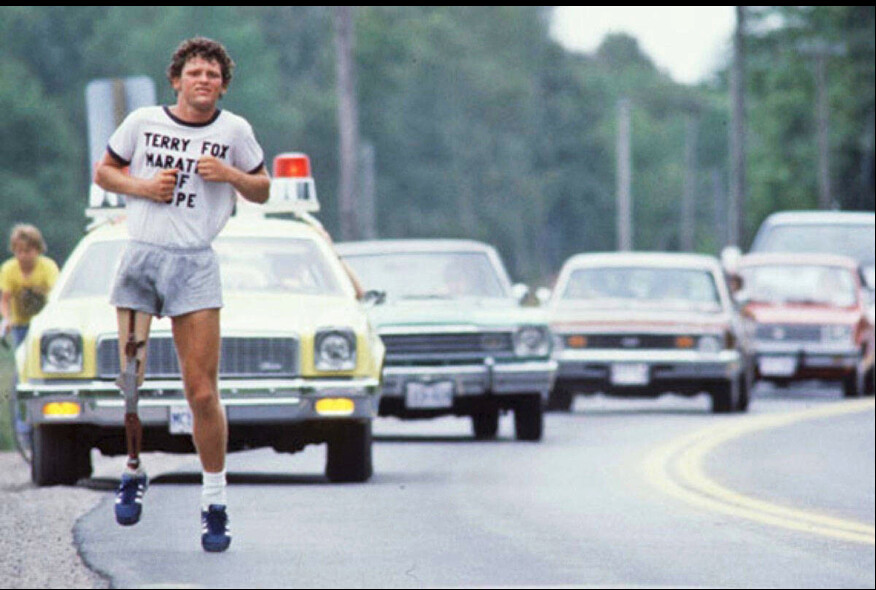
April 12, 2025, will mark 45 years since Fox set out on his Marathon of Hope. Now, the federal government will honour his journey with a picture of Fox on the new five-dollar bill.
The Marathon of Hope raised $24.7 million, which, at the time, was a dollar for every Canadian. Fox’s efforts showed Canadians the difference that an ordinary person could make, no matter their circumstances.
The current face on the five-dollar bill, that of former prime minister Sir Wilfrid Laurier, will reportedly be moved to the next version of Canada’s fifty-dollar bill. Laurier has been on the Canadian $5 bill since 2013.
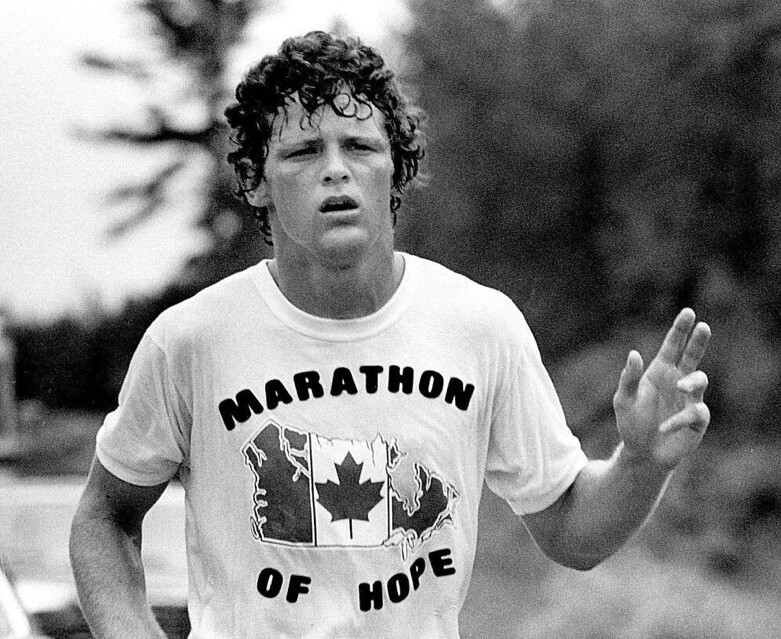
Login to leave a comment
How to Get Rid of Blisters, According to Doctors-And how to prevent them in the future.
BLISTERS MIGHT NOT seem like a big deal—until you get one and remember how debilitating they can be.
These painful skin lesions are caused by friction when your skin rubs against your shoes, says Purvisha Patel, M.D., a dermatologist and founder of Advanced Dermatology and Skin Cancer Associates in Memphis, Tennessee. They may be caused by ill-fitting shoes, not wearing socks, or sporting new shoes before breaking them in.

Blisters commonly happen on your heels, toes, or other parts of your feet, but they can really happen anywhere that body parts rub together or where your skin rubs against clothing, shoes, or other objects, according to the American Academy of Dermatology.
Usually, blisters get better on their own. But there are a few things you can do to speed things up and minimize the pain. Here’s what you should know about treating and preventing blisters.
What causes blisters?
BLISTERS FORM UNDER the epidermis (the skin’s top layer) as a sac filled with clear liquid or blood, according to the Cleveland Clinic.
There are a few types of blisters. • Friction blisters—the kind you get from wearing shoes that don’t fit well or repeatedly using a shovel or another tool—form when your skin rubs against something and clear fluid builds up in the skin layers.
• Blood blisters happen when your skin gets pinched. Blood vessels break, the lower layers of the skin get damaged, and blood pools, forming a blister.
• Heat blisters can form after a burn or sunburn, Dr. Patel says, and blisters can occur when you get frostbite in the extreme cold. You might also get blisters from allergic reactions or medical conditions, like shingles or chickenpox.
How to Get Rid of a Blister
FRICTION BLISTERS ARE the most common type, and they’ll usually heal on their own in a few days. But there are a few things that
You can also use padding, such as cotton pads or gauze, on blisters in high-pressure areas, like on your feet, the AAD says. Place the padding over the blister and cover with a bandage. Be sure to change the bandage and padding at least once a day.
Use a Blister Pad
BLISTER PAD PRODUCTS like 2nd Skin and Compeed can offer a protective barrier while the blister heals. These hydrocolloid patches absorb moisture and create a moist environment that allows the wound to heal quickly. You can also use these pads on blister-prone areas to prevent them from forming.
Signs Your Blister Is Infected
It’s rare for blisters to get infected, Dr. Lizarzaburu says. But it can happen, so it’s important to recognize the signs.
Swelling, redness, pus or yellow drainage, increased pain, and warmth around the blister are signs it could be infected, Dr. Patel says. You may also get a fever.
You should see a doctor if you suspect the blister is infected.
How to Prevent Blisters
The best way to deal with a blister is to avoid getting one in the first place. Fortunately, there are several things you can do to prevent a blister
Login to leave a comment
Toronto runner Virginia Lee, 51, prepares for 25th consecutive Waterfront Marathon
For Virginia Lee, the TCS Toronto Waterfront Marathon on Oct. 20, is more than just another race—it’s a journey that has spanned a quarter-century. The 51-year-old Toronto native is a legacy runner at the Toronto Waterfront Marathon, having finished every edition since the marathon distance was introduced in 2000.
This year, she’s gearing up for her 25th consecutive Waterfront Marathon, with a deeper purpose: fundraising for the Princess Margaret Cancer Foundation through the TCS Charity Challenge in memory of her late father.

Lee and her father were incredibly close, and she credits her love for fitness to him as it was something he loved to do. Lee says she was a mathlete in her younger years and her passion for fitness began in her 20s. After a while, she got tired of the 45-minute commute to her local gym.
Lee decided to skip the gym and hit the local track instead—where she fell in love with running. A colleague at Browns Shoes, Manny, eventually helped her gain enough confidence to register for her first race. “He was a big mentor for me,” Lee says. “I remember being in awe of all the marathons he’s done, and now I’ve done more—he can’t believe how far I’ve come.”
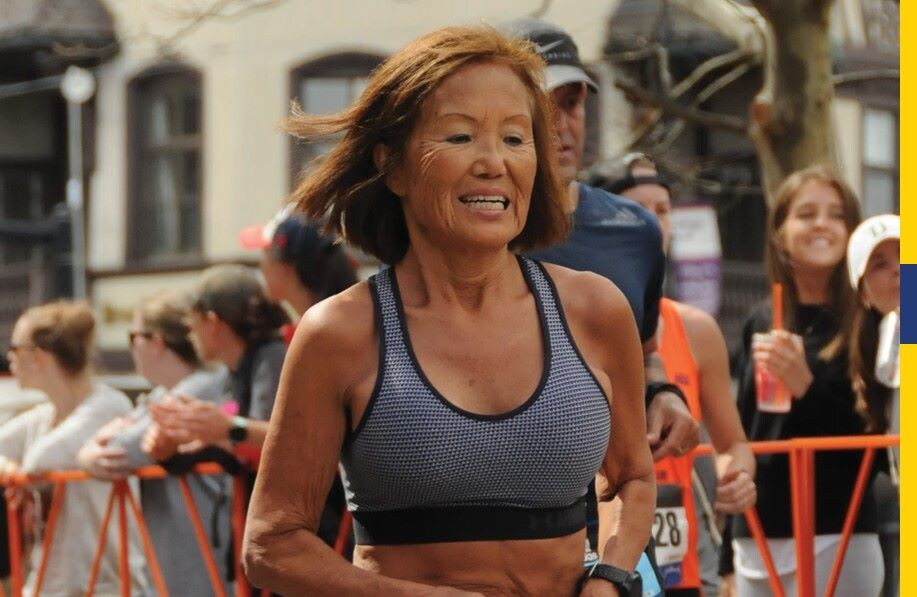
She first ran the Toronto Waterfront Marathon in 2000, and it quickly became an annual tradition. “I started doing the Toronto Waterfront Marathon every year because it was something I enjoyed,” Lee says. Her dedication to the race became even more apparent in 2013 when she faced a tough decision—run the Chicago Marathon, which she had qualified for, or maintain her streak in Toronto. Toronto organizers reached out, reminding her of her unbroken streak. She ended up doing both. “I had to be super conservative in Chicago because I wanted to run well in Toronto,” Lee recalls.
Over 24 years, Lee has seen the sport evolve, especially women’s participation. “There weren’t too many women at my first marathon in 2000, but last year there were nearly 1,500 female finishers,” she says. The growing community of older female runners in Canada has been an inspiration, along with U.S. masters running legend Jeannie Rice, who at 76, holds several masters marathoning world records. “She is such an idol for me,” says Lee. “Although I’ll never be as fast as her, her consistency and resilience are everything.”
One of Lee’s biggest motivations remains her desire to maintain her streak. “A lot of people did not believe I could do this,” she says, reflecting on the dedication that has driven her through two decades of training. Her commitment is impressive considering her career at the University Health Network (UHN) in Toronto, where she’s worked for the last 15 years.
Her training build for this year’s race has been the hardest yet, dealing with her father’s passing, plus a bad case of shingles. “I wasn’t well. I caught shingles and felt exhausted for the first two months,” she shares. “The loss of my father has given me a renewed purpose.”
At the TCS Toronto Waterfront Marathon expo on Friday, Lee will share her story to the start line and guide eager runners through what they can expect on the 2024 course. Despite 24 years of experience, Lee admits she still gets nervous. “I feel like I have imposter syndrome every year. But I’m grateful to be a part of it.”
by Marley Dickinson
Login to leave a comment
TCS Toronto Waterfront Marathon
The Scotiabank Toronto Waterfront Marathon, Half-Marathon & 5k Run / Walk is organized by Canada Running Series Inc., organizers of the Canada Running Series, "A selection of Canada's best runs!" Canada Running Series annually organizes eight events in Montreal, Toronto and Vancouver that vary in distance from the 5k to the marathon. The Scotiabank Toronto Waterfront Marathon and Half-Marathon are...
more...How Many Calories Do You Actually Burn While Running?
Most people overestimate how many calories they torch while running. Here’s how to figure out your numbers—and tips to boost the burn.
There are so many reasons to run, including spending time in nature, taking a break from scrolling social media, and hanging with like-minded people. One of the most common reasons people turn to the sport: to boost physical and mental health. In fact, three out of four runners say staying healthy and in shape is a primary motivation for lacing up, according to a survey from Running USA.
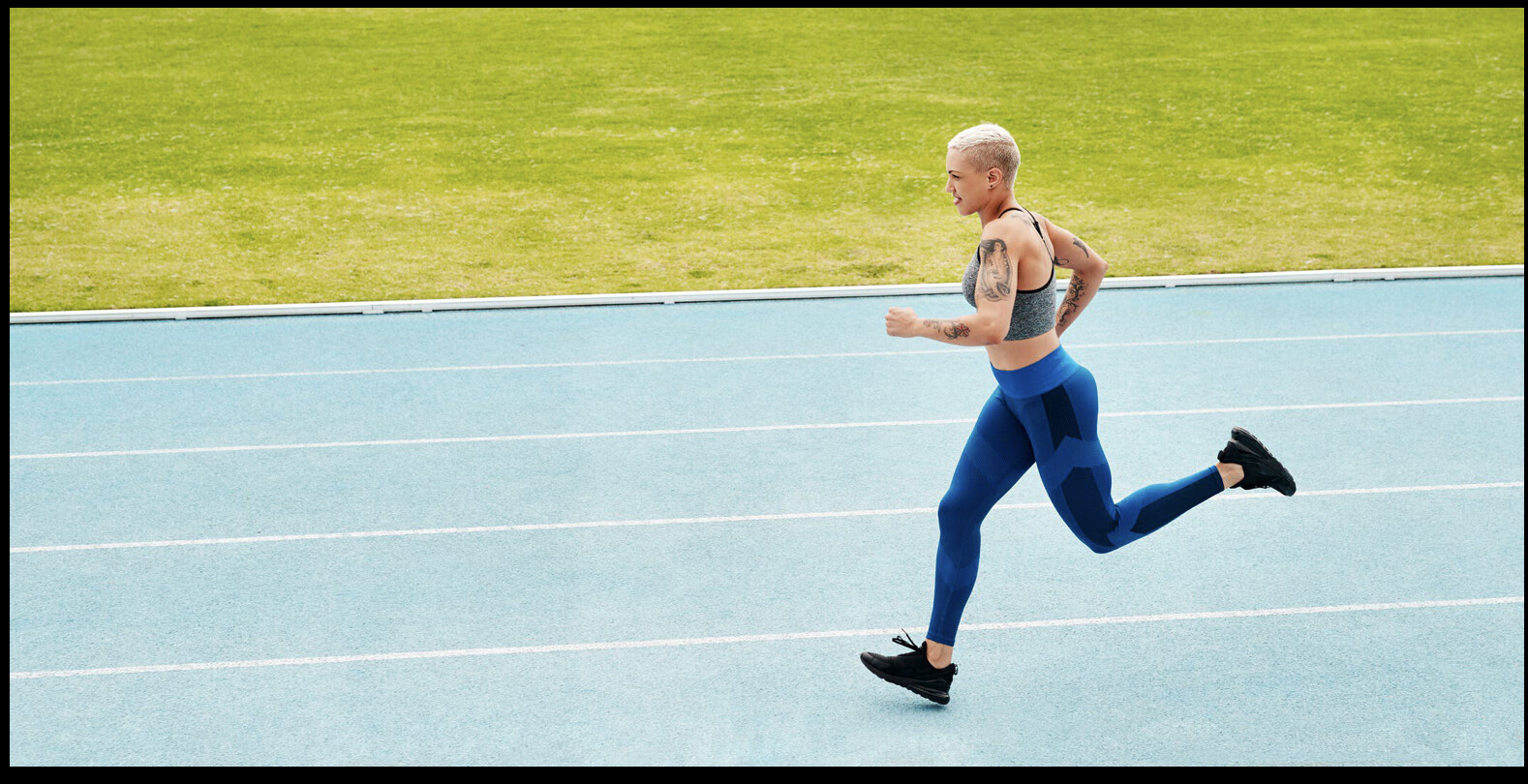
For many people, “staying healthy and in shape” translates to burning calories and keeping weight in check, and running is a top activity for revving your heart rate and blasting calories. But just how many calories do you burn running one mile?
Turns out most people don’t know the answer: When runners completed both moderate- and vigorous-intensity workouts on a treadmill, they greatly overestimated how many calories they burned—some by as much as 72 percent—in a 2016 study in Medicine and Science in Sports and Exercise.
So let’s break down approximately how many calories the average runner burns over the course of one mile and how to calculate your calorie-burn rate, plus expert tips to raise that number.
How many calories does the average runner burn running one mile?
It’s difficult to generalize how many calories everyone would burn running one mile, as many factors play into your energy expenditure. But the general baseline is that runners burn about 100 calories per mile, April Gatlin, certified personal trainer and senior master coach for STRIDE Fitness in Chicago tells Runner’s World.
Two important factors that change that number are the intensity of your run and your weight, according to the 2024 Adult Compendium of Physical Activity, which calculates the energy cost of physical activity based on metabolic equivalents (METs).
Based on the MET chart, running a 10-minute mile (6 mph) is equivalent to about 9.3 METs. That means a 150-pound person (68 kilograms), would burn about 11 calories per minute or about 110 calories in a mile when running at 6 mph.
To calculate calories burned per minute using METs, follow this formula: METs x 3.5 x (your bodyweight in kilograms) / 200
Intensity and weight aren’t the only variables that can alter how many calories you burn running a mile, though. “Running mechanics play a big role in caloric expenditure—different aspects such as ground contact time, vertical motion, and muscular strength have a significant effect on the amount of calories that are burned or energy that is expended in terms of oxygen consumption,” Grace Horan, exercise physiologist at Hospital for Special Surgery in New York City tells Runner’s World.
That oxygen consumption, along with fuel utilization—which is how our cells use carbs and fat for fuel—is what caloric expenditure is all about, she says. Because there’s more vertical motion (or bounce) in running compared with walking, that translates to higher calorie burn. “Your body is now not only using energy to travel horizontally but vertically as well,” Horan adds.
What factors affect your one-mile calorie burn?
1. Weight
“The heavier the runner, the higher the calorie burn as their body is working harder to move forward,” says Gatlin. In fact, a 185-pound person burns nearly 100 calories more per 30 minutes of running at 5 mph compared with a 125-pound person, according to estimates from Harvard Medical School.
2. Pace
Running a fast mile will burn a higher number of calories than a slow mile, says Gatlin, especially if you mix in speed intervals: “Intervals will burn more calories overall due to the varied high-to-low heart rate burst causing excess post-exercise oxygen consumption (EPOC), which is an after-burn effect,” she explains. “That causes the body to continue to burn at the higher metabolic rate after the training is complete.”
The same holds true about running versus walking: People who ran a mile showed increased energy expenditure (read: calorie burn) for 15 minutes postworkout while those who walked the same distance increased the after-burn effect for only 10 minutes, according to a study published in the Journal of Strength and Conditioning Research in 2012, involving 15 males and 15 females.
3. Sex
“There is also some evidence that gender plays a role in caloric expenditure, with females often burning less calories compared to their male counterparts when running at the same speed for the same distance,” says Horan.
However, she notes, the difference in overall body mass between men and women is generally thought to be the primary cause for this.
4. Fitness, biomechanics, and genes
While concrete stats, such as speed and weight, contribute to calorie burn, so do fluctuating variables that are more difficult to count. “Burning calories is directly related to oxygen consumption, which is determined largely by the ability of the lungs to take in large amount of oxygen and the heart to pump oxygenated and nutrient-filled blood to the working muscles, so cardiorespiratory fitness [level] has a major effect [on calorie burn],” notes Horan. While there’s no simple way to incorporate these details into your calorie estimates, know that they do have a bearing.
In other words, while you can get a rough estimate of how many calories you burn over a given distance or time, remember that these are just estimates.
How can you estimate your personal calorie burn?
In addition to the MET equation mentioned above, Runner’s World has a calories burned calculator to help. Pop in your weight, along with how far you ran and how long it took you, and it’ll pinpoint approximately how many calories you expended on that outing.
While this does take some variables into account (i.e., your weight and speed), it doesn’t factor in extras like your fitness level or what kind of terrain you covered. For example, if your course was totally flat, you likely torched slightly fewer calories than if you’d encountered tons of hills, according to Gatlin.
How can you increase the calorie burn of your one-mile run?
1. Add in speed
The higher your effort during a run, the more calories you’ll burn per minute, which also means you can expend more energy in less time the faster you run.
Research backs this up: A study published in 2019 found that high-intensity interval training (doing 10 reps of one-minute intervals at 100 percent of VO2 max with one minute of recovery) took less time to reach the same energy expenditure of a moderate-intensity workout (going for 35 minutes at 65 percent of VO2 max).
Another study, published in 2013, also found that sprint interval training can increase total daily energy expenditure after one session.
2. Tackle hills
Heading to a hilly course outside (or cranking up the incline on a treadmill) is great for torching calories, because it’s as if you’re adding resistance training to the workout, notes Gatlin. That’s because your lower-body muscles perform at a higher level of mechanical work to increase your potential energy on an incline, compared with level or downhill running, according to a 2016 article in Sports Medicine.
3. Break up your run
Planning to run three miles today? If you break them up into three one-mile runs throughout the day and run each of those at a faster pace than you’d run one steady-state run, you’ll boost the calorie burn, says Gatlin.
The reason: It goes back to that afterburn effect—you burn more calories when you’re done running—as well as the ability to turn those shorter runs into higher-intensity exercise.
What other benefits do you gain from running a mile?
All this being said, frying calories is hardly the only benefit of a running routine. Opt to run instead of walk a mile and you will also boost your aerobic capacity, muscular endurance, and metabolic rate, says Gatlin.
Additionally, running improves your overall health by warding off all kinds of medical issues. “It’s heavily supported that increasing aerobic capacity through running has been linked to decreases in incidence of many health conditions, including heart disease, diabetes, and some forms of cancer,” says Horan. Plus, “recreational running on a regular basis also creates favorable conditions for bone formation, which leads to increased bone mineral density and decreased risk of fractures.”
Even slow, short runs have fantastic health benefits. One study that followed more than 55,000 Americans over 15 years found that those who ran less than a 10-minute-per-mile pace for five to 10 minutes a day had significantly reduced risk for all causes of death.
So even if you come to running for the calorie burn, there are good reasons (lots of them!) to keep coming back for an all-over health boost.
Login to leave a comment
The Legend of Cliff Young: The potato farmer who miraculously won a 544-mile marathon at age 61
At the start of the 1983 Sydney to Melbourne Ultramarathon, Cliff Young quickly fell behind and seemed on track to finish last. But while the others stopped to sleep, Young kept running at his tortoise pace for five days straight — and won.
In 1983, a 61-year-old Australian potato farmer entered the first ultramarathon between Sydney and Melbourne. Few bet on the farmer winning the race.
Not only did Cliff Young have a strange, slow running stride resembling a shuffle, but he’s said to have shown up to the race wearing work boots and overalls. During the event itself, rather than wearing sleek running clothes like the other competitors, Young donned a cotton t-shirt and long trousers, explaining that it was important to reduce his risks of skin cancer.
But Young had a secret weapon.
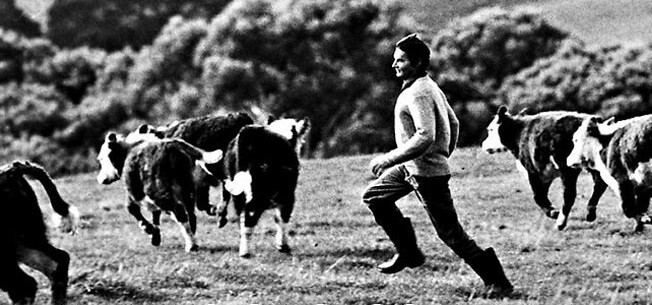
“I grew up on a farm where we couldn’t afford horses or tractors,” Young said in an interview, according to Adventure Journal. “And the whole time I was growing up, whenever the storms would roll in, I’d have to go out and round up the sheep. We had 2,000 sheep on 2,000 acres.”
Rounding up sheep gave Young a taste for long-distance running.
“Sometimes I would have to run those sheep for two or three days. It took a long time, but I’d always catch them. I believe I can run this race.”
In less than six days, Cliff Young ran 544 miles and won the ultramarathon — and broke the previous record by two whole days. His unorthodox style and surprising victory shocked the world. How did a 61-year-old farmer win one of the most challenging races in history?
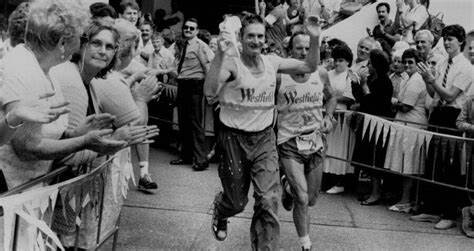
Cliff Young’s Real-Life Tortoise And The Hare Story
From the starting gun, it looked like Cliff Young would be at the back of the pack.
When the ultramarathoners left Sydney, Young quickly fell behind. With his slow signature shuffle, Young could barely match the pace of the other racers. But everything changed the first night of the race.
Although he’d fallen far behind the other runners at the end of the first day, by dawn on the second day Young had a massive lead. The Sydney Morning Herald reports that that was thanks to Young’s trainer, Wally Zeuschner. Known for his tough tactics, Zeuschner reportedly told one athlete that he could take a break when his eyes started bleeding.
In fact, Zeuschner’s eyes helped Cliff Young win the ultramarathon. Young turned in to sleep the first night and Zeuschner set the alarm. But because of his poor eyesight, Young’s trainer set the alarm for 2 a.m., several hours earlier than the planned wakeup call.
When the alarm rang, Young leaped up and began running. It took the groggy racer some time to realize that it was still dark.
Those hours of early morning running put Cliff Young at the head of the pack. And Young turned that accidental advantage into a strategy. Instead of stopping to sleep at night, he kept running.
“I’m just an old tortoise,” Young told reporters during the race, according to The Age. “I have to keep going to stay in front.”
Cliff Young also had an unusual running style. The press dubbed it the “Young-Shuffle,” because Young seemed to shuffle rather than run.
But the shuffle-step gave Young a significant advantage during an ultramarathon. By conserving his energy, Young was able to run longer without rest. His shuffle was also more aerodynamic than other running styles, according to the Sydney Morning Herald.
Not long after the ultramarathon, other runners adopted Young’s signature style. In fact, three subsequent winners of the Sydney to Melbourne ultramarathon took first place using the Young-Shuffle, according to Elite Feet.
Fans and reporters tracked Cliff Young as he inched closer and closer to Melbourne. During days and nights of running, someone asked Young what he planned to do first when he reached the finish line.
“I’m going to the toilet first,” Young declared.
As the days passed, Young remained at the head of the pack. At dawn on the sixth day, Melbourne was in sight. But it would take Young several more hours of running to officially win the race.
When he reached Melbourne, Young barely stopped for the cameras — they had to wait outside while he went to the toilet.
Sharing The Prize Money
In the final leg of the ultramarathon, runner Joe Record thought he might catch Young. As reported by The Age, Record, 41 years old, boasted, “I think I can catch old Cliff. He says he’s a tortoise but I think the old bastard is a hare in disguise.”
But Cliff Young carried the day, reaching Melbourne in the record time of 5 days, 15 hours.
At the end of the race, Cliff Young walked away with $10,000 in prize money. Instead of keeping it for himself, he gave away most of the money to his competitors.
“Joe Record and I had a pact before we ran that if either of us won we would split the prize money between us,” Young told the New Vegetarian and Natural Health magazine in a 1997 interview. “I forgot about Joe and started giving it away left, right and center. I gave $4,000 away to the other runners.”
Luckily, Record didn’t mind when Young handed him $3,000.
Later, when asked about the highlight of the ultramarathon, Young said, “The prize money of ten thousand dollars! Now that’s a helluva lot of potatoes.”
The Legacy Of Cliff Young
When he won the first Sydney to Melbourne ultramarathon, Cliff Young became a hero in Australia. Suddenly, everyone wanted to know about the potato farmer who ran 544 miles.
Reporters pestered Young to learn more about his diet. An avid vegetarian, Young explained how eating grains and fruit powered his runs. “The secret to a long life is preserved pears and jogging,” Young told the Sydney Morning Herald. “It sure beats having a drink in the pub.”
Young also had advice for fellow older runners.
“Get out of your wheelchairs and start doing a few laps, if you can,” he told the New Vegetarian and Natural Health magazine. “If you don’t get any exercise your joints start seizing up like a rusty engine.”
Young never retired from running. He returned to the Sydney to Melbourne ultramarathon the next year, 1984, and came in 7th. In his 70s, Young attempted to run around all of Australia. He only stopped when his support crew member fell ill. In 2003, Cliff Young died at the age of 81.
Cliff Young inspired generations of runners. So did Kathrine Switzer, the first woman to run the Boston Marathon. And don’t forget to check out more uplifting stories from history.
by Genevieve Carlton, Maggie Donahue
Login to leave a comment
66-year-old marathoner qualifies for Boston with Stage 4 cancer
The story of 66-year-old Canadian marathoner Dana Fox is one of extraordinary perseverance. Diagnosed with Stage 4 cholangiocarcinoma less than a year ago, Fox completed Ontario’s Georgina Marathon on Sept. 8, in 3:56:50, likely securing a spot for the 2025 Boston Marathon.
In October 2023, Fox and his coach, Joe Chappell, met to discuss Fox’s future marathon goals, but just a week later, he was diagnosed with cancer. Despite a grim prognosis and being given less than a year to live, Fox remained determined. “Dana said almost right away he wanted to treat this like a running injury,” Chappell told Canadian Running. “At one point, he was in so much pain that bending over to tie his shoes was almost impossible.”
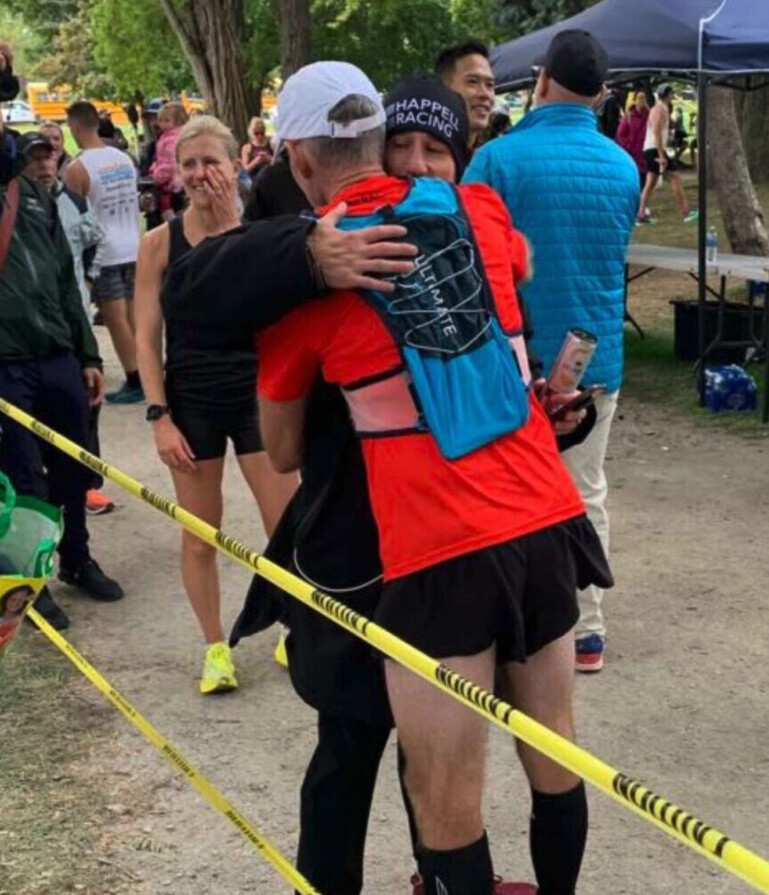
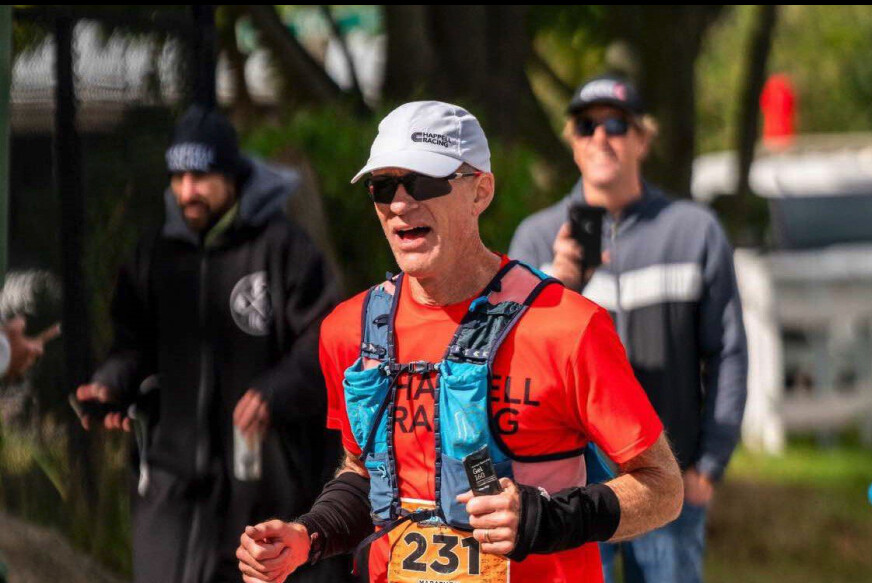
Chappell said they kept in touch during Fox’s chemotherapy. Within a few months, he was able to start slowly walking and indoor riding. In May, Fox reached out to Chappell with ambitions to return to running, as his energy was returning. His goal: the 2024 Georgina Marathon, a last-chance qualifier for the 2025 Boston Marathon.
Against his doctors’ recommendations, Fox began training for the marathon with less than eight weeks until race day—half the typical time most marathoners devote to training. His family and friends from Waterloo and beyond supported him during the race. The men’s 65-69 qualifying time was 4:05:00, but Chappell said they aimed to beat last year’s cut-off of five minutes and 29 seconds.
Fox’s finishing time of 3:56:50 put him eight minutes and 10 seconds under the mark. Canadian marathoner Rachel Hannah paced him for the second half of the race, with family and friends cheering and offering support throughout. He carried a pair of red Adidas spikes gifted by his father in 1971, a symbol of resilience during his journey.
Fox is confident he will be among the few who defeat the cancer. He credits the experience of finishing the Georgina Marathon with his running club as a crucial psychological boost, fuelling his journey to recovery.
On Sept. 15, Fox spoke at the Terry Fox Run in Saugeen Shores, Ont. (He is not related to Canadian athlete and humanitarian Terry Fox.) “We made it for all those people who have cancer and were told they’re not going to make it; this run’s for them. Don’t ever quit,” Fox told Georgina Post. “The hotel’s already booked [for Boston]. I’m in, baby. We’re going. I’m going to live. I’m getting back on the bus. I’m not leaving.”
by Running Magazine
Login to leave a comment
66-year-old marathoner qualifies for Boston with Stage 4 cancer
A year after being told he had less than a year to live, Dana Fox of Waterloo, Ont., ran a Boston Marathon qualifying time at the 2024 Georgina Marathon.
The story of 66-year-old Canadian marathoner Dana Fox is one of extraordinary perseverance. Diagnosed with Stage 4 cholangiocarcinoma less than a year ago, Fox completed Ontario’s Georgina Marathon on Sept. 8, in 3:56:50, likely securing a spot for the 2025 Boston Marathon.

In October 2023, Fox and his coach, Joe Chappell, met to discuss Fox’s future marathon goals, but just a week later, he was diagnosed with cancer. Despite a grim prognosis and being given less than a year to live, Fox remained determined. “Dana said almost right away he wanted to treat this like a running injury,” Chappell told Canadian Running. “At one point, he was in so much pain that bending over to tie his shoes was almost impossible.”
Chappell said they kept in touch during Fox’s chemotherapy. Within a few months, he was able to start slowly walking and indoor riding. In May, Fox reached out to Chappell with ambitions to return to running, as his energy was returning. His goal: the 2024 Georgina Marathon, a last-chance qualifier for the 2025 Boston Marathon.

Against his doctors’ recommendations, Fox began training for the marathon with less than eight weeks until race day—half the typical time most marathoners devote to training. His family and friends from Waterloo and beyond supported him during the race. The men’s 65-69 qualifying time was 4:05:00, but Chappell said they aimed to beat last year’s cut-off of five minutes and 29 seconds.
Fox’s finishing time of 3:56:50 put him eight minutes and 10 seconds under the mark. Canadian marathoner Rachel Hannah paced him for the second half of the race, with family and friends cheering and offering support throughout. He carried a pair of red Adidas spikes gifted by his father in 1971, a symbol of resilience during his journey.
Fox is confident he will be among the few who defeat the cancer. He credits the experience of finishing the Georgina Marathon with his running club as a crucial psychological boost, fuelling his journey to recovery.
On Sept. 15, Fox spoke at the Terry Fox Run in Saugeen Shores, Ont. (He is not related to Canadian athlete and humanitarian Terry Fox.) “We made it for all those people who have cancer and were told they’re not going to make it; this run’s for them. Don’t ever quit,” Fox told Georgina Post. “The hotel’s already booked [for Boston]. I’m in, baby. We’re going. I’m going to live. I’m getting back on the bus. I’m not leaving.”
by Marley Dickinson
Login to leave a comment
Boston Marathon
Among the nation’s oldest athletic clubs, the B.A.A. was established in 1887, and, in 1896, more than half of the U.S. Olympic Team at the first modern games was composed of B.A.A. club members. The Olympic Games provided the inspiration for the first Boston Marathon, which culminated the B.A.A. Games on April 19, 1897. John J. McDermott emerged from a...
more...Jamaican Olympic medalist given four-year doping ban
The Tokyo 2020 Olympic 110m hurdles bronze medalist, Ronald Levy of Jamaica, was dealt a four-year ban after an out-of-competition test for GW1516.
On Friday, Ronald Levy, the Tokyo Olympic 110m hurdles bronze medalist from Jamaica, was handed a four-year ban by the Jamaica Anti-Doping Commission (JADCO) following a positive test for banned substances.
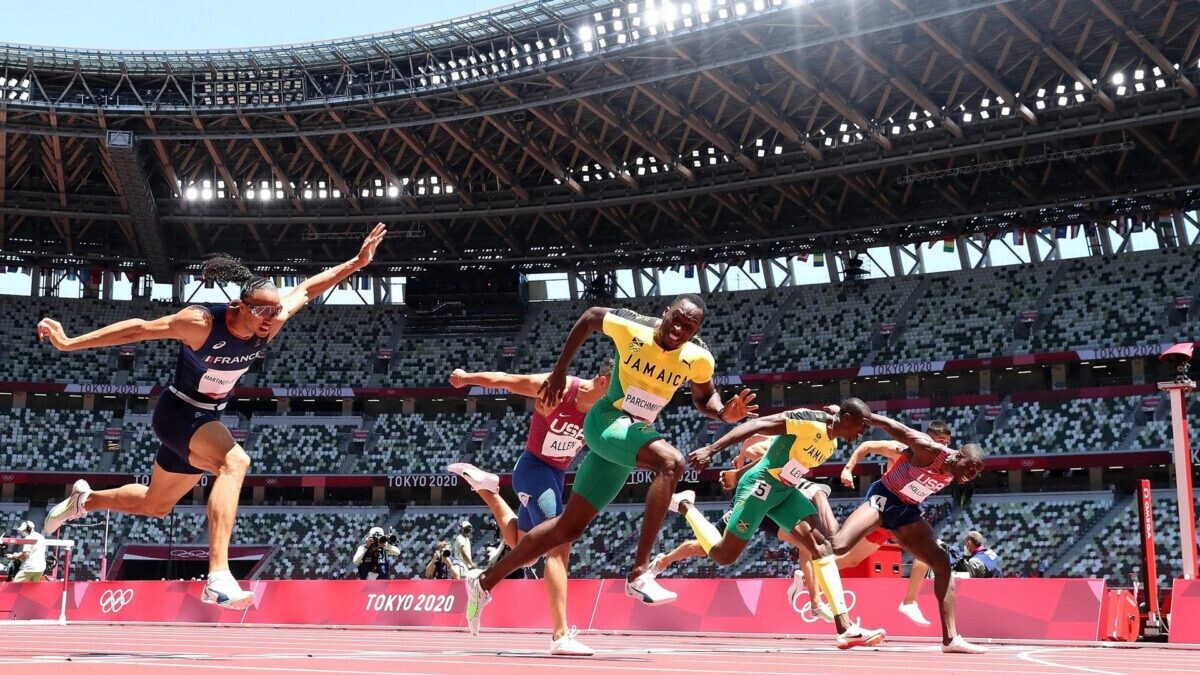
The substance detected in Levy’s sample, taken during an out-of-competition test in October 2023, was GW1516. This black-market drug is known for enhancing endurance and increasing the body’s ability to burn fat, allowing users to train harder and longer. However, GW1516 has not been approved for human use due to concerns about its potential cancer risks and other severe long-term health effects.
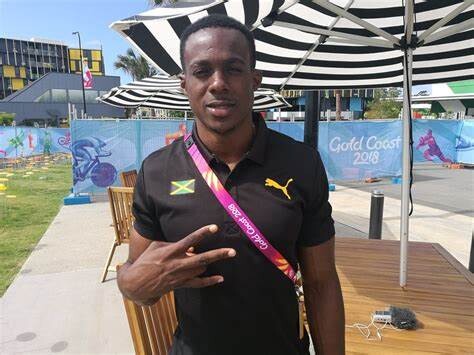
Levy said on social media that he was shocked at the positive test result, maintaining he did not knowingly violate any rules: “I am stunned by this turn of events because I have always conducted myself with the highest level of integrity in the sport, which I love dearly, and would never seek to gain an unfair advantage.”
The 31-year-old hurdler won bronze at the Tokyo 2020 Olympics behind American Grant Holloway and Levy’s fellow Jamaican, Hansle Parchment. He also won gold in the 110m hurdles at the 2018 Commonwealth Games. Levy has not competed since September 2023 and did not qualify for the 2024 Paris Olympics.
Levy has the right to appeal the decision and take his case to the Court of Arbitration for Sport (CAS). While a successful appeal could overturn the ban, the process could also result in significant financial and physical strain if the appeal is unsuccessful. This is the third high-profile GW1516 case in the past two years, following the positive tests of former Olympic 800m silver medalist Nijel Amos of Botswana and Surinamese sprinter Issam Asinga, the U20 100m record holder. Both men tested positive during out-of-competition tests.
by Marley Dickinson
Login to leave a comment
BMI Is a Controversial Measure of Health Outcomes—a New Study Suggests a Better Method
It’s not all about height and weight.
New research suggests incorporating waist circumference into how we predict health outcomes, instead of relying on BMI.
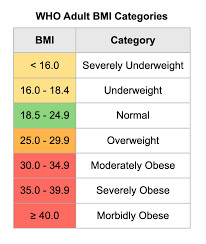
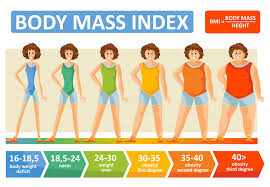
Study authors say BMI does not take into account muscle mass or the links between abdominal fat and poorer health, among other downfalls of the measurement.
In an effort to understand how body composition affects health, most medical professionals and researchers still use the body mass index (BMI), but this has always been a problematic and controversial method when actually applied to individuals, rather than large populations. For example, commentary in the British Journal of General Practice, published back in 2010, called use of BMI unethical, overly simplistic, and potentially harmful to a significant proportion of patients.
A new study in JAMA Network Open assessed a possible pivot toward a different measurement tool: the body roundness index, or BRI. In addition to weight and height (which is all that the BMI includes), the BRI considers waist circumference because that can more comprehensively reflect visceral fat distribution, according to the study’s lead author Xiaoqian Zhang, M.D., at Beijing University of Chinese Medicine in China.
In the cohort study involving nearly 33,000 U.S. adults, researchers looked at the association between an increase in BRI from 1999 to 2018 and the significant rise in all-cause mortality (particularly cardiometabolic disease, kidney disease, diabetes, and cancer) during the same period.
More abdominal fat has been linked to higher risk of these conditions because this type of fat is often visceral, which means it wraps around your organs instead of sits just under the skin. That means it can increase inflammation and drive more chronic diseases, Zhang told Runner’s World. For example, one study of Korean adults found those with normal body mass index had more cardiovascular risk factors if they carried excess abdominal obesity.
“Because of the way it includes waist circumference, BRI effectively provides a more accurate indication of health problems related to being overweight or underweight,” Zhang said. “We found both the lowest and the highest BRI values are associated with significantly increased risks of all-cause mortality.”
The Problem with BMI
Considering a switch away from BMI involves understanding why this effort matters. BMI was not meant to be used on an individual level. It relied only on Belgian men (because it was a formula devised in the 1830s by a Belgian mathematician) and did not take women and/or non-Caucasians into account, the British Journal of General Practice authors noted. As other researchers note, it was also not meant to inform medicine or predict health outcomes
By looking only at height and weight, the BMI might measure general obesity but it doesn't distinguish body fat from muscle mass, said the recent study’s co-author Wenquan Niu, Ph.D., at the Center for Evidence-Based Medicine in China. Because of this, for example, many bodybuilders are classified as obese.
“Fat distribution and body composition can vary dramatically among individuals who have the same BMI,” he told Runner’s World. “That’s why we need a more accurate indication of health problems related to overweight or underweight. Using the BRI is more helpful for this, given the limitations of the BMI metric.”
What to Know About Waist-to-Hip Ratio
The BMI and BRI are not the only possibilities when it comes to body composition. One that’s easy to measure at home is hip-to-waist ratio (WHR), which involves measuring both of those and then dividing your waist number by your hip number. According to a study published in JAMA Network Open in 2023, the ideal ratio for most men is below 0.95 and under 0.85 for women.
Even if you’re physically active and are not overweight, the WHR can help identify your risk of future metabolic issues, because abdominal fat plays a significant role in issues like insulin resistance and hypertension, according to Vitor Engrácia Valenti, Ph.D., a researcher at Sao Paulo State University in Brazil who has done work on body composition.
“The BMI calculation is far less helpful than your WHR, which can give you an indication of whether your waist circumference is outside the normal range,” he told Runner’s World.
Other indicators of body composition are lean muscle mass and fat mass, but those require specialized equipment such as a DXA scan for accurate numbers, Valenti added.
In general, the goal shouldn’t be reducing body fat as much as possible—you do need body fat for overall health—but to focus on reduction of abdominal fat in particular.
Although “spot training” for this type of fat is not a possibility, a systematic review and meta-analysis published in Advances in Nutrition looked at 43 studies focusing on training styles and their effects. Researchers found that although aerobic exercise tends to produce slightly greater efficacy in decreasing belly fat, the biggest change comes when it’s combined with resistance training.
by Runner’s World
Login to leave a comment
The Issam Asinga Case: Evil Coverup or Did The Fastest High School Sprinter Ever Test Positive For Drugs After Eating Gatorade Gummies?
Six weeks ago, 19-year-old Issam Asinga, the fastest teen sprinter in world history, was handed a four-year ban from the sport of track & field after testing positive for the banned substance GW1516. Asinga’s positive sample came in July 2023, just days before he ran 9.89 seconds to become, at the time, the youngest person in history to break 10 seconds for 100 meters. Asinga, who had been provisionally suspended since August 2023 by the Athletics Integrity Unit (AIU), appealed the decision to the AIU’s disciplinary tribunal, who ruled against him and upheld the four-year suspension on May 27.
Until then, the details of Asinga’s case had been kept secret. Now they are public, and potentially explosive.
Asinga, who maintains his innocence, blamed the positive test on contaminated Gatorade gummies he received at the company’s National Athlete of the Year ceremony in Los Angeles last summer, where he was honored as high school track & field athlete of the year. Asinga has already appealed his case to the Court of Arbitration for Sport, where it is expected to be heard later this year. He is also mulling whether to launch a civil suit against Gatorade because the gummies in question falsely carried an NSF Certified for Sport label, which signified that the product did not contain any prohibited substances. NSF has made a public statement saying the gummies from Asinga’s lot number were not NSF Certified and the NSF Certified mark was being used without authorization.
“They distributed a supplement that wasn’t NSF Certified for Sport that had a banned substance in it,” said Asinga’s lawyer Paul Greene. “That’s violation of product liability law, negligence, implied warranty, New York state consumer protection law. I mean, it’s bad. He had the possibility of getting endorsement and NIL deals that were going to be in the millions of dollars and he lost all that as a result of this. He also lost out on the chance to compete in the World Championships and the Olympics.”
The AIU, however, was not satisfied that the gummies were the source of Asinga’s positive test, and its disciplinary tribunal agreed.
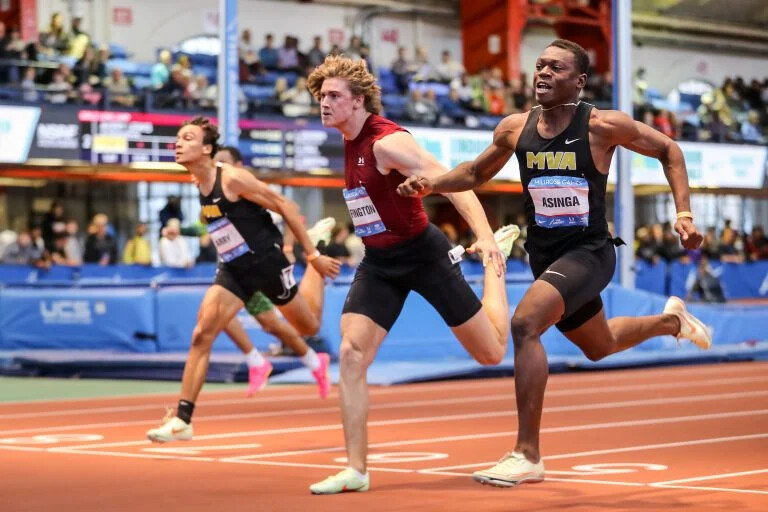
Incredible 2023 high school season
Asinga’s is one of the highest-profile doping cases in recent years. After running personal bests of 10.44 seconds in the 100m and 20.76 in the 200m as a junior in 2022 at Principia High School in Missouri, Asinga transferred to Montverde Academy in Florida for his senior year, where he improved enormously and produced one of the greatest seasons ever by a high school sprinter.
During the 2023 indoor season, Asinga won national high school titles in the 60m (6.59) and 200m (20.48) at New Balance Nationals, tying the national record in the former event (he ran 6.57 in the semis) and breaking the national record in the latter. Outdoors, Asinga ran a wind-aided 9.83 in the 100m to defeat Noah Lyles, who would go on to win the world title in that event four months later. Asinga, who was born in the US but represents Suriname internationally, then ran 19.97 in the 200m in April (#2 all-time among US high schoolers) and 9.89 in July to win the South American 100m title in Sao Paulo, Brazil. The latter time ranked Asinga in a tie for ninth in the world in 2023. It was also a world U20 record and was the first time a US high school athlete had broken the fabled 10-second barrier.
Now that world U20 record has been stripped as Asinga finds him at the center of controversy. The 43-page decision in his case released by the AIU presents only two possible versions of events.
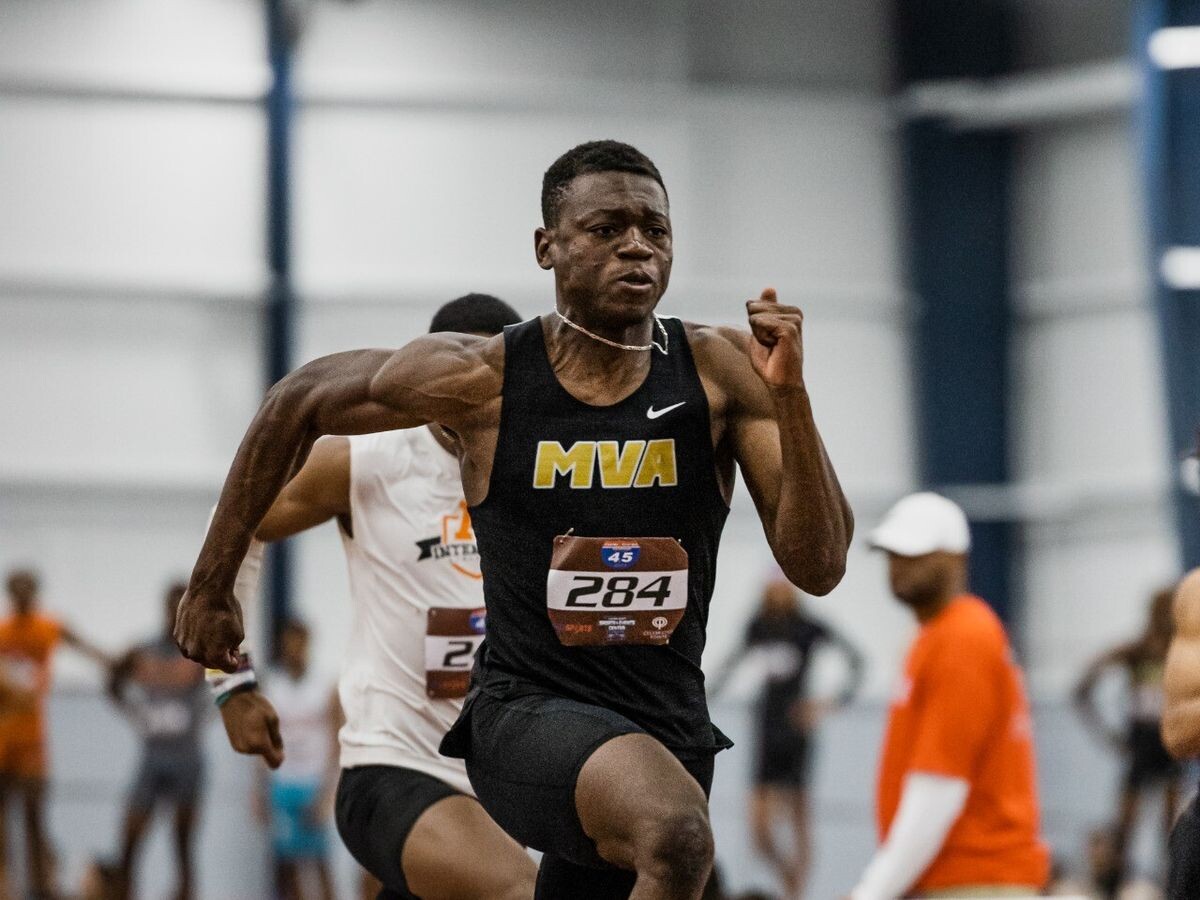
Option A: An 18-year-old was caught doping barely a month after being added to the international testing pool. Then he or someone in his camp tried to cover up his doping by manipulating evidence and defaming Gatorade, one of the world’s largest sports nutrition companies.
Option B: One of the greatest sprint talents in history was unjustly banned after consuming a tainted supplement given to him by one of the most famous brands in sports.
Neither picture is particularly rosy for the sport of track & field, but one of them must be true. After reviewing the evidence, the AIU and its disciplinary tribunal is clear which version it believes: Option A. As a result, Asinga is banned from competition until 2027 barring a successful appeal to CAS.
Background: Asinga enters the testing pool
Most high school track athletes, even elite ones, are rarely drug-tested. But by the spring of 2023, Asinga was running so fast it was becoming clear he could be a factor at that summer’s World Championships in Budapest. He was added to the World Athletics Testing Pool on June 1.
Asinga was tested on June 11 and returned a negative result. He was tested again out-of-competition on July 18 (in his training base of Clermont, Fla.) and again at the South American championships on July 28. The July 18 sample tested positive for GW1516, a banned substance that modifies how the body metabolizes fat and has been found to cause cancer. Specifically, Asinga’s sample tested positive for low levels of two metabolites of GW1516 — a metabolite is a substance produced when the body breaks down a specific drug. In this case, Asinga’s urine contained the GW1516 sulfone metabolite (at a concentration of 0.2 nanograms per milliliter in both his A sample and B sample) and the GW1516 sulfoxide metabolite (at a concentration of 0.5 ng/mL in his A sample and 0.4 ng/mL in his B sample).
On August 9, Asinga was informed of his positive test and provisionally suspended from competition. Shortly after, in an effort to prove his innocence, he began sending his supplements to be tested for contamination at the Sports Medicine Research and Testing Laboratory (SMRTL), a WADA-accredited lab in Salt Lake City. The first supplement Asinga sent, melatonin gummies, tested negative. Asinga then sent a larger set of supplements, including Airborne and Skratch Lab Hydration packets as well as Gatorade Immune Support Gummies and Gatorade Recovery Gummies, two new products he had received at the Gatorade National Athlete of the Year ceremony on July 10.
All of the supplements tested negative for GW1516 except the Gatorade Recovery Gummies. In December, SMRTL informed the AIU that of the five gummies tested, four were positive for GW1516. That much, the parties agree on. From there, the narratives diverge.
Contaminated during manufacturing or as part of a coverup?
Asinga said he began taking the Recovery Gummies shortly after the ceremony on July 10 — initially two per day, then less consistently before traveling to Brazil for the South American championships on July 25. He said he did not take any gummies to Brazil. Asinga declared the gummies as a supplement on the doping control form for his July 18 test and said he had no concerns about the gummies because the container carried the NSF Certified for Sport label.
Greene said the AIU was initially reluctant to share the results of the SMRTL analysis with Asinga because it viewed the test results of products from an opened container as unreliable. (LetsRun.com reached out to the AIU for comment on June 2 but had not received an answer as of publication).
“Normally, SMRTL’s process and the AIU’s process is if there is a preliminary finding in a supplement, they don’t initially just tell the athlete straight away,” Greene said. “They try to go and find their own sealed version and test that too and then go to confirmation testing.”
But neither SMRTL nor the AIU could find a sealed version from the same lot number as Asinga’s gummies. So, after several weeks, the AIU relented and shared the news that the Gatorade Recovery Gummies had tested positive for GW1516. Asinga said he felt he was on his way to clearing his name.
“I was like okay, boom,” Asinga told LetsRun.com. “When I got that message, I was like, okay, finally we’re going to move forward.”
But the AIU did not agree with Asinga’s assessment and hinted at something far more sinister. In the disciplinary tribunal hearing, which took place over Zoom on April 30, Martial Saugy, former director of the WADA-accredited lab in Lausanne, Switzerland, served as an expert witness for the AIU and noted that the exterior of the gummies contained much higher concentrations of GW1516 than the interior of the gummies.
“I cannot see how these results would be consistent with a contamination during the manufacture of the gummies,” Saugy said. “These results point to an adulteration of the gummies at a later stage.”
Another key point: Asinga had opened both containers of gummies before sending them to SMRTL. And in SMRTL’s analysis, it noted a “large discrepancy” between the concentration levels of GW1516 between the containers. The two gummies tested from the first container each featured a concentration of at least 610 ng of GW1516 per gummy. Meanwhile of the three gummies tested from the second container, the highest concentration of GW1516 was 1.5 ng per gummy, and one of the gummies did not test positive for GW1516 at all.
This fact left open the possibility for manipulation; to be satisfied of his innocence, the AIU demanded to see a positive test from a separate, sealed container of gummies from the same lot number as Asinga’s.
Separate lot numbers bring questions
This is where things get complicated. The lot number printed on Asinga’s gummy containers was 22092117150234. NSF has issued a statement saying this lot number was not NSF Certified and the NSF Certified mark was being used without authorization. As part of the case, the Lausanne lab did test a sealed container of Gatorade Recovery Gummies, which tested negative. But that container was from a different lot number — lot 22092117150213, which was one of the lots that did receive NSF certification.
The gummies were not manufactured directly by Gatorade, but rather by a company contracted by Gatorade called Better Nutritionals, who manufactured the gummies for Gatorade at its plant in Gardena, Calif. As part of its case, the AIU called a former Better Nutritionals employee as a witness who testified that, for all intents and purposes, lots 22092117150234 and 22092117150213 were identical. This witness, referred to only as Witness B in the decision, made the following argument:
Witness B said lots 22092117150213 and 22092117150234 were part of the same batch of 20,000 jars’ worth of gummies cooked on the same day. That batch of 20,000 jars was separated into two lots: 7,500 jars (lot 22092117150213) would enter the marketplace immediately without the NSF Certified for Sport logo, of which a few would be sent to NSF for testing. The remaining 12,500 jars (aka lot 22092117150234, which included the gummies Asinga received) would be held back and given the NSF Certified logo predicated on NSF testing on lot 22092117150213.
Before NSF testing had been completed, lot 22092117150213 entered the marketplace without the NSF Certified logo.
By October 4, the 12,500 jars from lot 22092117150234 had been labeled NSF Certified. On October 18, Better Nutritionals received confirmation that lot 22092117150213 had been granted NSF certification, which was confirmed on the NSF website.
As proof that the two lots were part of the same batch, Witness B noted that the first six digits of the lot number, which refer to the cook date, were identical: 220921, or September 21, 2022. Furthermore, Witness B said the seventh digit refers to the specific production line used at the factory. Again, both were the same — 1, referring to the first production line.
Witness B said it would not be feasible to produce two separate batches on the same day, noting that a batch with 20,000 jars’ worth of gummies would take roughly 19 hours to complete with a minimum of eight hours to clean the production line between batches.
Witness B and another witness from Better Nutritionals (Witness A) noted there was no logical source for contamination as GW1516 is not an ingredient of any of the other products manufactured in the Gardena plant.
To simplify: one lot of 7,500 jars (lot 22092117150213) was NSF Certified but did not bear the NSF label. Another lot of 12,500 jars (lot 22092117150234) was not NSF Certified but did bear the NSF label, and that is the lot Asinga’s gummies came from. Better Nutritionals claims the two lots were cooked as one large batch of 20,000 jars, and as a result, the fact that one lot was NSF Certified means that both lots should be considered NSF Certified.
To represent him in his appeal, Asinga hired Greene, the sports lawyer who previously represented Jarrion Lawson, Shelby Houlihan, Peter Bol, and many others in their high-profile doping cases. Greene said he does not buy Witness B’s argument.
“There’s no such thing as two lots of the same,” Greene told LetsRun.com. “They’re not the same. Every lot is separate according to NSF and according to FDA rules.”
After it was informed of Asinga’s positive test by the AIU, the NSF conducted its own investigation and issued the following public notice on June 4:
Gatorade® Immune Support Gummies (citrus; lot number 22091937150233) and Gatorade® Recovery Gummies (cherry; lot number 22092117150234), manufactured by Better Nutritionals LLC, have been found in the public domain bearing the NSF Certified for Sport® Mark without authorization. These specific lot numbers, for these products, have not been tested, evaluated or certified by NSF and are not authorized to use the NSF certification mark or make any claims of NSF certification.
Furthermore, Greene noted that Witness B was terminated for cause by Better Nutritionals in December 2022 — the same month Better Nutritionals filed for bankruptcy.
Asinga asked a representative at Gatorade for a sealed container from lot 22092117150234 — the lot from which Assinga’s gummies came — but was informed that Gatorade Recovery Gummies had been discontinued for “manufacturing reasons” (Witness A said the gummies were discontinued because Better Nutritionals went bankrupt). The AIU and SMRTL also requested sealed containers from the same lot, yet Gatorade/Better Nutritionals only made containers from lot 22092117150213 available. Greene says that makes no sense. If the two lots are identical, Greene argues, why not send one from the same lot number as Asinga’s?
“Somehow they had several sealed versions from the 7,500 lot but nothing from the 12,500 lot,” Greene said. “I find it hard to believe they don’t have anything out there and it was an intentional choice to withhold it. It had to be. Why else wouldn’t they give us one from both? What’s the difference?”
If Gatorade has no sealed version, Greene says, they are in violation of FDA regulations, which state that supplement manufacturers must hold reserve samples from each lot they produce.
by Jonathan Gault
Login to leave a comment
What the New Grand Theory of Brain Science Can Teach Athletes
“Predictive processing” offers novel ways to think about sports psychology, the limits of endurance, and the urge to explore.
If you read popular science books about the brain, you might have encountered a new “grand theory” called predictive processing. If you haven’t yet, you will. Over the last two decades, it has gone from obscure idea to increasingly dominant paradigm. And it’s such a broad and all-encompassing theory that it seemingly has something to say about everything: how the brain works, why it’s structured the way it is, what that means for how we perceive the world—but also horror movies, mental health, cancer cells, and perhaps even endurance sports and adventure.
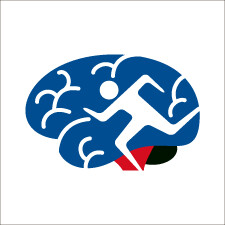
I’ve been trying to get my head around predictive processing for five or six years now. It can get complicated if you dig into the mathematical details. But I recently read a book called The Experience Machine: How Our Minds Predict and Shape Reality that does a good job of conveying the theory’s essence in an accessible way. It came out last year and is by Andy Clark, a cognitive philosopher at the University of Sussex who is one of the theory’s leading proponents. The book got me thinking about how predictive processing applies to some of the areas of science that I’m most interested in.
Here, then, is a very rough guide to predictive processing—still a speculative and unproven theory at this point, but an intriguing one—from the Sweat Science perspective.
Normally, we assume that you see the world as it is. Light bounces off the objects around you and into your eyes; the receptors in your eyes send signals to your brain; your brain makes sense of those incoming signals and concludes that, say, there’s a snake on the path. Predictive processing flips the script. Your brain starts by making a prediction of what it expects to see; it sends that prediction out toward your eyes, where the predictions are compared with incoming signals. If there’s any discrepancy between the outgoing predictions and the incoming signals, you update your predictions. Maybe it turns out that it’s a stick on the path, even though at first glance you could have sworn it was a snake.
This is actually a very old idea. It’s often attributed, in a basic form, to Hermann von Helmholtz, a nineteenth-century German scientist. Modern neuroscience pushes the idea farther and offers some clues that it’s true: for example, there are more neural connections leading from the brain to sensory organs like the eyes than there are carrying information from the senses back to the brain. Those outgoing signals are presumably carrying the brain’s predictions to the senses. What we see (and hear and smell and so on), in this picture, is basically a controlled hallucination that is periodically fact-checked by the senses.
What I find particularly intriguing about predictive processing is that there’s a deeper mathematical layer. A British scientist named Karl Friston, who pioneered several brain imaging techniques in the 1990s and is by several measures the most-cited neuroscientist ever, has proposed an idea called the free energy principle. All life, Friston argues, has an essential drive to minimize surprise—which is related to a mathematical quantity, borrowed from physics, called free energy—in order to ensure its continued survival. The resulting equations are beautiful but famously inscrutable. If you’re interested, the best introduction I’ve found is in a free e-book published in 2022 by Friston and two colleagues called Active Inference: The Free Energy Principle in Mind, Brain, and Behavior. The important point, though, is that these equations lead to the qualitative picture I described above, of the brain as a prediction machine.
In The Experience Machine, Clark lays out some examples of why this idea matters. Mental health conditions like depression and anxiety may relate to glitches in how the brain updates its predictions; the aesthetic chills you get from great art or horror movies may signal that we’ve encountered “critical new information that resolves important uncertainties”—a physiological “aha” moment. But what does all this tell us about endurance?
The athlete-related topic that Clark addresses most directly in his book is sports psychology. For example, he has a section on the power of self-affirmation, in which the positive words you say to yourself alter your brain’s predictions, which in turns alters your actions in performance-boosting ways. I’ve written a bunch of times about the effects of motivational self-talk on endurance. I’m fascinated by the evidence that it works, but struggle to reconcile it with my mechanistic understanding of how the body works. Predictive processing offers a new way of understanding the science of self-talk.
The key point is that our brains aren’t just predicting the present; they’re also simulating the future, to minimize unexpected surprises. If we expect to feel pain, fatigue, doubt, or even hunger, those predictions become self-fulfilling prophecies—just as, if you’re wandering through the rainforest, you’re more likely to mistake a stick for a snake than if you’re walking down Fifth Avenue. I remember, a decade ago, puzzling over the results of a study that fed people milkshakes and found that their appetite hormones responded differently depending on whether they were told it was an “indulgent” shake or a “sensible” one. How could appetite hormones respond to words? Through the predictions sent from the brain to the gut.
Clark has a long discussion of placebos, but the most unexpected suggestion he makes is a way of improving sports performance “in a rather sneaky manner.” One of the interesting facts about placebos is that the response can be trained. If you give a real, clinically effective drug to someone repeatedly, their brain will eventually begin predicting the response more and more strongly. During the Second World War, nurses who were running short of morphine sometimes injected saline instead; it turns out that, if the patients had been receiving morphine regularly, their bodies (and brains) responded to the saline injection in a similar way.
Clark proposes training an athlete with a drug that is banned in competition (like stimulants), then giving them a placebo version when they actually race. In theory, this should generate a stronger placebo response than you’d normally get. For the record, I don’t think this is consistent with what the World Anti-Doping Agency calls “the spirit of sport,” but it’s an interesting thought experiment.
What first sparked my interest in predictive processing was an email from a reader after my book Endure came out in 2018. I’d written about how our expectations of how a race will feel at any given point affects how hard we feel we’re able to push, based on theories from Ross Tucker and other researchers. Predictive processing, the emailer suggested, might have something to say on the topic.
I think that’s true. As you gain experience, you develop a pretty good idea of what you’ll feel like halfway through a 5K. If you feel better or worse than expected, that generates a prediction error. There are two ways of fixing prediction errors. One is to update your beliefs: I thought this pace would feel medium-hard at this point in the race, but it feels hard, so I’ll adjust my internal prediction. The other is to adjust your actions: I thought this pace would feel medium-hard, so I’ll slow down until it feels medium-hard. The second strategy is what Friston calls active inference.
Why is it that we generally adjust our pace rather than our beliefs when we’re racing? I’m not sure, but I wonder whether predictive processing will suggest some new ways of probing this longstanding question.
There’s a puzzle in predictive processing called the Dark Room problem. If the free energy principle demands that we minimize surprise, why don’t we just lock ourselves in a dark room until we starve to death? One way of answering this question is to recall that we’re not just trying to minimize present surprise; we’re also trying to minimize surprise in the future. And the best way of avoiding future surprises is to learn as much as possible about the world and how it works.
Predictive processing, in other words, wires us to seek out the unknown in order to learn about it, as a way of minimizing future surprise. This is a different way of thinking about why we like venturing into the wilderness, undertaking challenges like running a marathon, and traveling to unfamiliar places. This is an idea I’m digging deeper into for a forthcoming book on the science of exploring.
Does expressing these ideas in the language of predictive processing actually change anything? That remains to be seen. I’ve talked to some scientists over the past few years who view it as genuinely new, and others who view it more as new words for familiar ideas.
The most practical suggestion that I’ve seen comes from an Israeli scientist named Moshe Bar, who wrote a book called Mindwandering in 2022. Bar’s big idea is that we have what he calls “overarching states of mind” that reflect the degree to which we’re focusing on the “top-down” predictions generated by our brains versus the “bottom-up” observations from our senses.
When we put more weight on predictions, we become more narrowly focused on a given task; when we put more weight on sensory data, we have broader attention, are more inclined to explore, and have a more positive mood. By “zooming out”—thinking about the big picture or the future, talking to ourselves in second person—we can shift the dial toward sensory input and loosen the grip that our predictions sometimes exert on us.
Admittedly, all of this sounds a bit esoteric. But the more I read about predictive processing, and the more I talk to scientists who are developing these ideas, the more I’m convinced that there’s something interesting here. Exactly where all this will lead—well, that’s hard to predict.
by Outside Online
Login to leave a comment
Six-Time Cancer Survivor Runs a Marathon on Every Continent
“Don’t let anyone tell you what you’re capable of. That’s for you to determine.”
For the last mile of the Antarctica Marathon, Jonathan Acott played one song on repeat. Trudging through snow and icy winds on the edge of the world, the runner from Surrey, United Kingdom, listened to Tim McGraw’s hit, “Live Like You Were Dying.” It was a fitting anthem for the six-time cancer survivor in his pursuit to run a marathon on all seven continents.
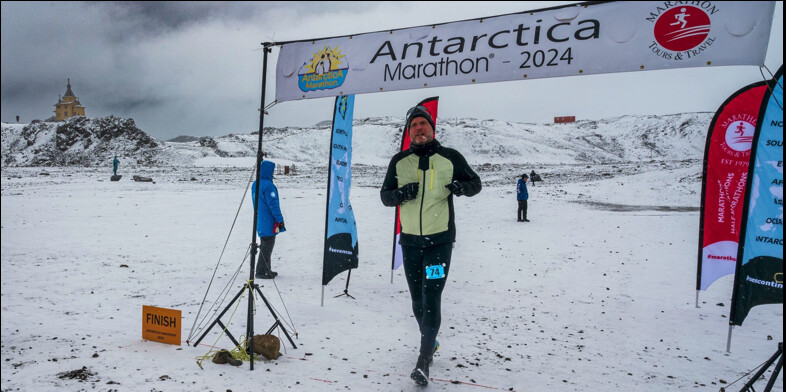
With 500 yards remaining in the race, Acott took his headphones out. He wanted to be fully present for the homestretch of the seventh marathon. Running downhill toward a small tent with a timer next to the Russian research station, the 48-year-old made his way to the finish line area, where a group of volunteers and fellow competitors cheered him on.
His legs sore from the descent, Acott took a moment to compose himself before stepping across the finish line, completing a challenge that seemed unimaginable five years ago. “The photographers are there and they say, ‘Put your arms up!’ But I don’t want to put my arms up. That’s not how I want to celebrate,” Acott said. “I needed to stop at that moment. There’ll be other mountains, but right now I just want to stop.”
Amid the devastation caused by multiple cancers and the arduous healing process that followed, Acott transformed his life, becoming a motivational speaker, coach, and avid runner intent on chasing epic goals. For Acott, becoming a member of the Seven Continents Club—645 men and 358 women who have completed 26.2 on all seven continents—is the latest example of the runner choosing to embrace every moment.
‘If I’m moving, I’m not dead.’
Acott’s cancer journey began 20 years ago. In 2004, he was diagnosed with testicular cancer at 29 years old. His first relapse occurred in 2007 when doctors discovered a tumor in his chest. He relapsed again in 2013 and 2016 and underwent back-to-back retroperitoneal lymph node dissections, a surgery to remove the lymph nodes in the back of the abdomen. In 2017, he was diagnosed with bowel cancer. The following year, doctors discovered he relapsed again. His final surgery in 2018 involved removing his kidney and spleen. The spleen ruptured during the procedure, which required an emergency blood transfusion on top of chemotherapy post-operation.
In a span of 14 years, Acott underwent numerous rounds of chemotherapy (he estimates about seven months total) and six surgeries that left his body riddled with lifelong side effects, including permanent nerve damage and hearing loss. The experience also took a heavy toll on his mental health. At his lowest, Acott suffered from suicidal ideation. Working with a psychiatrist helped him cope and reframe his perspective.
“Life is unfair to everybody. This just happens to be it,” Acott said. “And I can do two things. I can sit there and wallow about how miserable life is, or I can accept that life is difficult and hard and challenging, and you can make the most of it.”
Since 2018, Acott has been cancer free. After the last bout of the disease, his doctors encouraged him to start walking in the recovery process. He also lost his job after being unable to work during treatment. Walking not only gave him time to process his emotions, it also gave him something to work towards. In a few months, Acott was walking up to three hours at a time.
After spending months building up to long distances, Acott decided he wanted to be more efficient by running. “I push because if I’m moving, I’m not dead,” Acott said. “If I’m moving further each day, I am getting healthier.”
Because Acott is immunocompromised and his body takes longer to heal now, he trains every other day. He’s also battling pain most of the time from scars and neuropathy in his feet, among other ailments, and needs to run a conservative pace most of the time. “My body has been through a lot, but it’s still capable of doing so much," he said.
Choosing to live in optimism
In the fall of 2019—15 months after his last surgery—Acott raced the Berlin Marathon as a way to celebrate his comeback. He finished his first 26.2 in 4:58:38. Shortly after, he set out to complete the seven continents challenge.
“I chose to apply myself to making the most of my time because I don’t know how much time I have,” Acott said. “It’s a choice about how you live. You can live in fear, and I am always scared, or I can live in optimism that I’m going to have the best life I possibly can.”
The following year, he ran the Africa leg at the 2020 Marrakech Marathon in 4:45:48. In 2020, he also took up motivational speaking on top of his full-time job as the head of guest experience at a business complex.
After COVID restrictions were lifted, he finished the 2022 Austin Marathon in 5:15:28. The same year, he completed the South America portion by finishing the Curaçao Marathon in 5:09:16, trudging through flood waters on the course.
He ran the Asia leg with a 5:15:33 at the 2023 Dubai Marathon along a desert roadway. Last fall, he covered Australia at the 2023 Perth Marathon with a finishing time of 5:01:40. On March 21, he completed the Antarctica Marathon in 5:38:16.
Looking back on the experience, Acott remembered his surgeon’s warning after the last procedure. The doctor told him he wouldn’t be able to complete the same physical feats he used to do before cancer. Less than two months after completing the global marathon challenge, he’s already training for his next goal—breaking four hours in the marathon.
“Don’t let anyone tell you what you’re capable of,” Acott said. “That’s for you to determine. Find what the best version of you looks like, and make it happen.”
MORE FROM RUNNER'S WORLD ON APPLE NEWS
by Runner’s World
Login to leave a comment
Is Running a Four-Minute Mile the Secret to Longevity?
A new study shows that running may increase your longevity and that elite runners live longer than their peers.
The 200th person to break four minutes for the mile, according to the National Union of Track Statisticians, was a Swiss runner named Rolf Gysin. On August 16, 1974, Gysin clocked a 3:56.88. It wasn’t a big surprise: he had already run 3:37 for 1,500 meters the year before, which is equivalent to about a 3:54 mile, and had competed in the Munich Olympics a few years earlier. He was 22 when he broke four; he’s now 72—and still kicking, so to speak.
Gysin was the last guy to make the cut in a new British Journal of Sports Medicine study assessing the longevity of the first 200 runners to break four minutes in the mile, timed to coincide with the seventieth anniversary of Roger Bannister’s famous run. Sub-four doesn’t have the cachet it used to—Track and Field News announced last year that they would stop tracking American sub-fours because the barrier was no longer relevant, though it later reversed the decision—but it’s still a big deal now and was even more so a few generations ago. So did the rigors of pushing their bodies past a once impassable barrier shave years off the lives of these supermen? In a word, no. The study adds another data point to the general finding that elite endurance athletes—Olympians, Tour de France riders, runners—are rewarded with increased longevity. What this finding actually means, though, is perhaps less obvious than it seems.

The study was led by Stephen Foulkes and Mark Haykowsky of the University of Alberta along with André La Gerche of St. Vincent’s Hospital Melbourne in Australia. Its set-up is straightforward. Take the first 200 sub-four milers, and hit up Google to see when they were born and when or if they died. Overall, 60 of the 200 men had died, at an average age of 73.6. Those still alive had an average age of 77.6 and counting. The researchers weren’t able to obtain causes of death for everyone, but of the seven who died before the age of 55, six were traumatic deaths or suicide and one was cancer.
For each runner, they then calculated their life expectancy on the day they broke four. For Bannister, the relevant comparison was how long a 25-year-old Englishman would be expected to live in 1954; for Gysin, it was a 22-year-old Swiss in 1974. Then they aggregated the results to see whether the runners had greater longevity than their age- and sex-matched countrymen.
Here’s what the survival curve looks like, with the x-axis showing years since first sub-four mile:
On average the runners outlive the matched general population by 4.7 years. There’s a generational effect: those who broke four in the 1950s outlived their peers by 9.2 years, while those who did it in the 1960s or 1970s had an edge of 5.5 or 2.9 years, respectively. That could be because the health of the general population is improving thanks to better medical care. But a bigger factor, I assume, is that most of the milers are still alive. Check back in another decade or two, and Rolf Gysin and his 1970s peers will (touch wood) have added to their longevity stats.
The main spur for this study was the long-running debate on whether “extreme” levels of exercise can damage your health—and lead to heart problems in particular. You may think that running a mile isn’t very extreme. But training to run a sub-four-minute mile is definitely extreme: this analysis from a few years ago found that top milers generally run between 75 and 105 miles a week, with around 20 percent of it at very high intensities. So it’s good news to find that barrier-breaking milers aren’t dropping like flies.
Still, there are a bunch of caveats to this kind of study. One is that outliving the average person is a pretty low bar to clear. How do athletes fare compared to someone doing the modest amount of exercise recommended by public health guidelines? One estimate found that the equivalent of just five hours of brisk walking per week extends your life expectancy by 4.2 years. Other estimates, to be fair, are less optimistic—but a comparison of sub-four milers with, say, 5:00 or 6:00 milers rather than the average couch-potato would be interesting.
The other big question is how much of the milers’ longevity is a result of genetics. I’m of the opinion that breaking four is something that only a small fraction of the world’s population can achieve, regardless of how hard they train, how healthily they eat, how fervently they believe in themselves, and how springy their shoes are. Perhaps the traits that make a four-minute mile feasible—strong heart, robust metabolism, great immune system—also favor longevity. Maybe Bannister would have lived just as long even if he had never run a step.
These are tricky problems to solve: you can’t randomly assign people to follow one lifestyle or another for decades, so every dataset has weaknesses. This particular study is also, yet again, all men. The women’s mile record is Faith Kipyegon’s 4:07.64, set last summer. At first I was thinking you could pick an alternate benchmark to study in women, like sub-four for 1,500 meters. But that barrier wasn’t broken until 1976, and by 2000 only 64 women had done it, most of whom are presumably still alive. Even if you pick lower thresholds, there simply weren’t that many women competing until longer track events were added to the Olympic program in the 1970s. Unfortunately, this sort of longevity analysis for female endurance runners will likely have to wait a few more decades.
But even if you could tease out the effects of genetics and training, I suspect there might still be something missing from the analysis: the mystique of the four-minute barrier. I’d love to see a comparison of those first 200 sub-four milers with their contemporaries who ran between 4:00.0 and 4:01.0 in the same era—the near-misses. Back in 2018, a Dutch economist named Adrian Kalwij studied the longevity of U.S. Olympic medalists between 1904 and 1936. All the medalists lived longer than the general population, but silver medalists lived about three years less than gold or bronze medalists. There was something about being “first loser” that was even worse than coming third—an observation that has been confirmed by facial expression analysis on the podium, which finds that silver medalists are the least likely to smile.
Kalwij is interested in the effect of socio-economic status (SES) on health: why do rich people live longer than poor people, and by how much? But his theory is that it’s not just about resources; it’s also about the psychological effects of winning and losing—whether it’s a race, or a spot at an elite college, or a job promotion. In a follow-up study in 2019 (which I wrote about here), he found that the effect of SES on the longevity of Dutch Olympians has been growing, from no effect in the earliest cohort to a difference of 11 years between high- and low-SES athletes in the most recent cohort. That reflects, he believes, an increasingly winner-take-all society in which we all have more opportunities to succeed but also more opportunities to fail. Those who accrue loss after loss in these micro-competitions pay a price in our health.
Whenever I see a study about the longevity of athletes—or, say, Oscar winners, who live longer than Oscar nominees—I’m reminded of Kalwij’s work. I have no doubt that physical activity is the single most powerful lever we have to improve health. I’m fairly confident that those benefits accrue even to those who train really hard, even if the new miler study doesn’t prove it. But I also wonder how much you benefit from the transcendent experience of reaching the top of the mountain—perhaps because my own best 1,500 time, according to World Athletics scoring tables, is equivalent to a 4:00.03 mile. Ouch.
by Outside Online
Login to leave a comment
Terry Fox's van, prosthetic leg to be displayed at Royal British Columbia Museum
The personal belongings of Canadian running icon Terry Fox will have a new home and public display at Victoria’s Royal British Columbia Museum, with an exhibit dedicated to the late hero officially open this spring. The “All Things Terry” collection, comprising items used by Fox during his famous Marathon of Hope, include the runner’s prosthetic legs, T-shirts and the bottle of ocean water he collected in Newfoundland when he started his run. The exhibit is part of a 20-year partnership between the museum and the Terry Fox Centre Owned by the Fox family, the artifacts have been displayed in public exhibits before, but have mostly remained stored in Fox’s bedroom at his family home in Port Coquitlam.
“It is an honour to announce the preservation of iconic artifacts belonging to Canadian hero Terry Fox,” said Lana Popham, Minister of Tourism, Arts, Culture and Sport, in the original press release. “These artifacts serve as powerful reminders of Terry’s indomitable spirit and unwavering dedication to his Marathon of Hope. By safeguarding these pieces of history, we ensure that Terry’s legacy continues to inspire generations to come, encouraging perseverance, resilience, and the pursuit of helping Canadians everywhere.”
Beyond clothing items and small souvenirs gathered along his run, the collection also includes the van he and his crew slept in throughout the journey, and a large collection of letters written to Fox from school children across the country.
Fox began his cross-Canada run in 1980 in St. John’s, Newfoundland to raise money for cancer research. His daily marathons came to a halt on September 1 of that year in Thunder Bay when his bone cancer returned. Fox passed away at the age of 22.
April 12 marked 44 years since Fox set out on his Marathon of Hope.
Login to leave a comment
Tyler McCandless: The Champion Returns to Conquer DICK’S Sporting Goods Pittsburgh Marathon Once More
The streets of Pittsburgh are set to witness a battle of endurance and speed as defending champion Tyler McCandless gears up to claim victory at the 2024 DICK’S Sporting Goods Pittsburgh Marathon. McCandless, who broke the finisher’s tape in 2:16:08 last year, aims to become the marathon’s first repeat American champion since 1989.
“Returning to the Pittsburgh marathon as the defending champion is an absolute honor and I’m grateful for the incredible Pittsburgh running community and P3R staff,” McCandless said. “I have had fantastic training, and I’m feeling as fit as I’ve ever been. I’m eager to run the streets of the Steel City and experience the exhilarating challenge to be champion once again.”
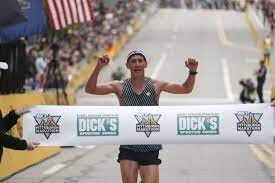
However, the road to triumph is not without its challengers. Alvaro Abreu, the Dominican dynamo who clinched the 2022 title with a finish of 2:16:07, is back. Familiar with the course’s rigors, Abreu is fired up to showcase his running talent and reclaim the crown.
The 2024 DICK’S Sporting Goods Pittsburgh Marathon will offer a prize purse of $32,000 with a $7,000 top prize. For more information about the 2024 DICK’S Sporting Goods Pittsburgh Marathon, visit thePittsburghMarathon.com.

About the DICK’S Sporting Goods Pittsburgh Marathon Weekend of EventsThe Pittsburgh Marathon was held annually from 1985-2003. After a five-year hiatus, the DICK’S Sporting Goods Pittsburgh Marathon was relaunched in 2009 and debuted with a sold-out field of 10,000 participants. It has grown each year since, evolving from a single race day into a weekend of events for the whole family that annually attracts nearly 40,000 runners. Read more at: ThePittsburghMarathon.com
FACEBOOK: DSGPM TWITTER: @PghMarathon INSTAGRAM: pghmarathon
About P3RP3R is the region’s go-to premier sporting event and experience expert. While best known for the annual DICK’S Sporting Goods Pittsburgh Marathon, P3R organizes up to 20 major events every year. With a rich history of working with top-tier clients such as the Pittsburgh Steelers, UPMC Hillman Cancer Center, the Pittsburgh Penguins, the National Senior Games, and more, P3R brings operational excellence to every aspect of event planning and execution. As part of P3R’s non-profit mission to inspire any and all to MOVE with us, we provide premium event experiences and robust programming – including the Run for a Reason Charity Program, award-winning Kids of STEEL program, Pittsburgh Corporate Challenge, RUN Varsity, and more – that engage everyone in the Western Pennsylvania community and beyond.
Login to leave a comment
Dick's Sporting Good Pittsburgh Marathon
This race is your game - however you decide to play it. As a competitor. A fund raiser. An enthusiast. A veteran. A team player. It's whatever you want it to be. It's whatever you make it. It's YOUR game..... Run it. Play it. Own it. Love it. Runners will race on the North Shore of Pittsburgh, cross each of...
more...76 year old Jeff Aston has run every London Marathon
There are only six people who can say they have run every London Marathon and Jeff Aston is one of them.
In 1980 he spotted an advert for the event due to take place the following year and decided to go for it.
Now, four decades later, Jeff, 76, from Cardiff, is celebrating completing is 44th and has no plans on stopping.
When he was younger, Jeff enjoyed playing squash and football until the River Taff flooded the courts where he played and he started running around the playing fields.
While leafing through a magazine in 1980, he came across an advert for the first London Marathon, held the following year, and decided to go for it.
"I always wanted to run a marathon when I was a teenager," he said.
"When the first London Marathon came on to the scene, back then it was the biggest marathon in the UK."
Just six months before the event, Jeff started Les Croupiers running club in Cardiff.
Looking back on his first race, when only 7,000 people took part compared with 53,000 now, he remembers the atmosphere: "I remember it was a drizzly and windy day, with the noise of the crowds.
"By then I had run a few marathons and races so I knew what was coming. But it was the first time I had been to such a mass event at that time."
By 1983, Jeff had recorded his best time after completing the course in 2:29:31.
During the pandemic in 2020 the event was open for a select few to take part in the race where they lived.
That year, Jeff raised money for the City Hospice in memory of his late wife Val, who died in 2016 after being diagnosed with cancer.
Jeff signed up for the first London Marathon after seeing an advert in the national running magazine
An "ever-present" runner is someone who has run every London Marathon.
In 1995, organisers recognised these runners by awarding them a special commemorative medal and guaranteed acceptance for future events.
Now, there is only Jeff and five other ever presents left.
In last Sunday's race, Jeff clocked a time of 8:06:27, finishing 61st in his age category.
So why does Jeff take on the challenge every year?
"It's the challenge of the marathon distance that keeps me going. Going back every year and trying to meet your personal best.
"I'm a lot slower than what I was at my peak but I think 'what can I do to be better this year than I was last year?'
"While I still can do it, I will do it."
by BBC
Login to leave a comment
Jennifer Bigham to Headline Women’s Field at 2024 DICK’S Sporting Goods Pittsburgh Marathon
Pittsburgher Jennifer Bigham will headline the women’s field at the 2024 DICK’S Sporting Goods Pittsburgh Marathon on Sunday, May 5. Bigham, a formidable force in the local running community, has an impressive record that includes victories at the USA Masters Half Marathon Championships and the USA Masters One Mile Championships in 2022. With five wins at the City of Pittsburgh Great Race, she already has cemented her status as a local legend but is now ready to tackle 26.2 miles for the first time in PIttsburgh.
“I’ve been looking forward to running the Pittsburgh Marathon for many years, and my time has finally come,” Bigham said. “I’ve been a part of many events on marathon weekend, from the toddler trot and kids marathon, to the 5K, and half-marathon. Lining up to experience the full 26.2 in my city that I love will be very special. I know the cheers from my community on race day will power me through the tough moments. This finish line will be a special one for me!”
After taking an eight-year hiatus from competitive running post-college, she returned to the sport following the birth of her first child. Now a mother of four, Bigham’s comeback story is an inspiration to athletes and parents alike. Her remarkable comeback was highlighted by qualifying for and competing in the 2020 U.S. Olympic Marathon Team Trials.
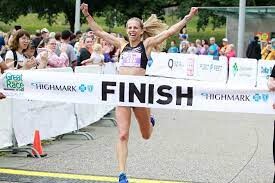
This year she will face tough competition from Jane Bareikis, who set a marathon personal best of 2:29:00 at the Berlin Marathon last fall, and local runner Laura Harnish, who also ran in the 2020 U.S. Olympic Marathon Team Trials and holds a marathon personal best of 2:42:09.
The 2024 DICK’S Sporting Goods Pittsburgh Marathon will offer a prize purse of $32,000 with a $7,000 top prize. For more information about the 2024 DICK’S Sporting Goods Pittsburgh Marathon, visit thePittsburghMarathon.com.
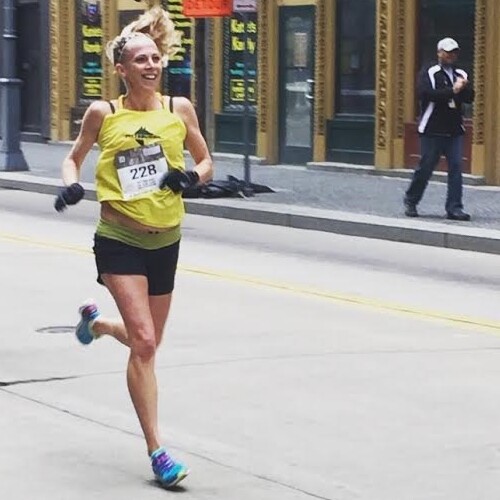
About the DICK’S Sporting Goods Pittsburgh Marathon Weekend of EventsThe Pittsburgh Marathon was held annually from 1985-2003. After a five-year hiatus, the DICK’S Sporting Goods Pittsburgh Marathon was relaunched in 2009 and debuted with a sold-out field of 10,000 participants. It has grown each year since, evolving from a single race day into a weekend of events for the whole family that annually attracts nearly 40,000 runners. Read more at: ThePittsburghMarathon.com
About P3RP3R is the region’s go-to premier sporting event and experience expert. While best known for the annual DICK’S Sporting Goods Pittsburgh Marathon, P3R organizes up to 20 major events every year. With a rich history of working with top-tier clients such as the Pittsburgh Steelers, UPMC Hillman Cancer Center, the Pittsburgh Penguins, the National Senior Games, and more, P3R brings operational excellence to every aspect of event planning and execution. As part of P3R’s non-profit mission to inspire any and all to MOVE with us, we provide premium event experiences and robust programming – including the Run for a Reason Charity Program, award-winning Kids of STEEL program, Pittsburgh Corporate Challenge, RUN Varsity, and more – that engage everyone in the Western Pennsylvania community and beyond.
Login to leave a comment
Dick's Sporting Good Pittsburgh Marathon
This race is your game - however you decide to play it. As a competitor. A fund raiser. An enthusiast. A veteran. A team player. It's whatever you want it to be. It's whatever you make it. It's YOUR game..... Run it. Play it. Own it. Love it. Runners will race on the North Shore of Pittsburgh, cross each of...
more...Still running strong: Michigan woman, 73, ready for Indy Mini, her 109th half-marathon
At 73 years young, Adele Pitt is no stranger to darting through the finish line.
She's gearing up to run her 109th half-marathon in the OneAmerica 500 Festival Mini-Marathon on Saturday, May 4.
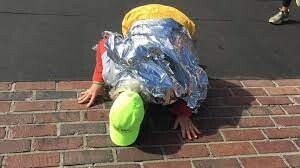
"I've run all 50 states and D.C, five continents and a couple islands," she proudly listed.
But the 13.1-mile trek that starts in the heart of downtown Indianapolis is by far her favorite.
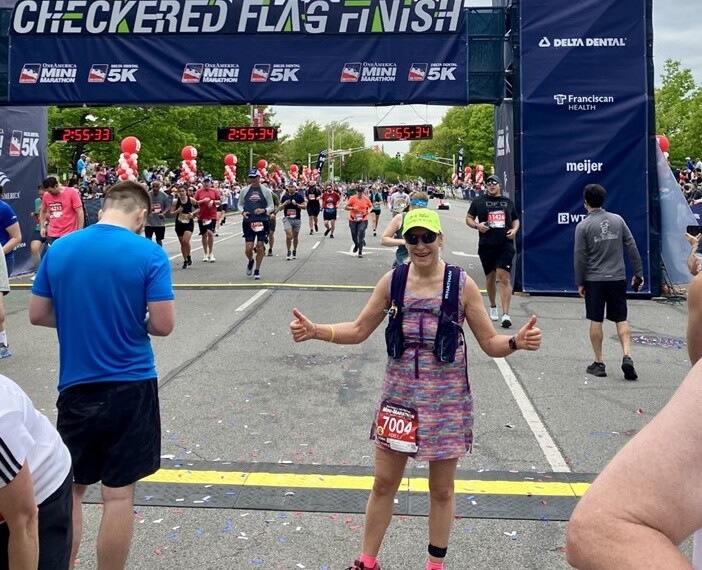
"How many people get to run on the Indy 500 track? It's awesome!" Pitt said.
In fact, she loves the "Indy Mini" so much that she's made the trip from her home in Benton Harbor, Michigan, to run almost every year since 2004, only skipping 2018, after she was diagnosed with colon cancer. She skipped that year as she started treatment, but refused to stay down for long.
The diagnosis may have slowed her stride, but never stopped her in her tracks..
She was back the next year, not at full strength, but fully confident she'd "run the cancer away," she said.
"I had a good race that year," she said, looking at a picture from 2019. Pitt loves to look back at race day photos and is now compiling them into a scrapbook.
Now in remission, "Back and Better" seems to be one of her mottos. She's ready to lace up her running shoes, and her running dress (yes, it's a thing, she said) – as she does every year.
"I usually put on a fake tattoo and my mantra is, 'I can, I will, I am and then one foot, one foot, one foot,'" she said. "And that applies to more than just running. It's just one foot at a time, one step at a time."
Still running strong, Adele plans to tackle many more steps, miles and milestones, taking it all in full stride.
"When I got to my 100th race, there were people that were like, 'Well, are you done now?'" she said, gladly telling them, "No, we are never done! We just keep on going."
Login to leave a comment
OneAmerica 500 Festival Mini-Marathon
The mission of the 500 Festival is to produce life-enriching events and programs while celebrating the spirit and legacy of the Indianapolis 500 and fostering positive impact on the city of Indianapolis and state of Indiana. As an organization providing multiple events and programs, many of which are free to attend and impact over 500,000 people annually, our mission to...
more...New York runner receives marathon rejection email with his face on it
Getting into marathon majors like Boston and New York is hard enough, now picture the rejection email having your face on it. Well, that was the case for New York’s own Nick Parisi, as reported by NBC New York. Parisi applied for a spot in the 2024 New York City Marathon, only to receive an email with his own image giving finger guns, saying better luck next year.
When Parisi received the email on March 28, he did not expect to be the face of rejection. He also did not expect his rejection story to go viral. Almost 160,000 rejection emails went out from the New York Road Runners (NYRR), all of them with Parisi’s image on them. (But he was the only runner to see his own face.)
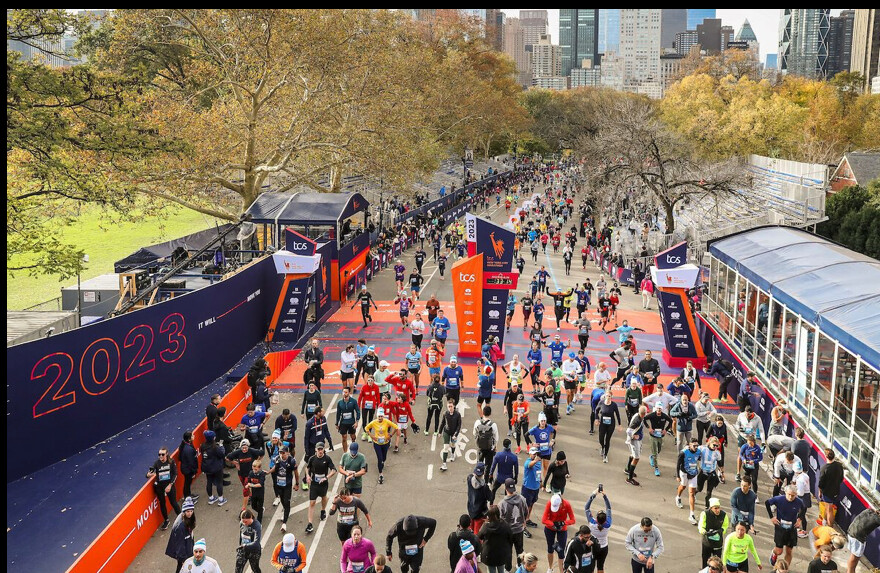
The photo generated the nickname Negative Nick online. “I did not expect to become an internet meme,” Parisi said.
The story has a happy ending for Parisi, though. The viral photo reached the NYRR marketing team, and they felt they had to make it up to him. NYRR CEO Rob Simmelkjaer showed up at Parisi’s club Front Runners NYC last week, apologizing for the mix-up and offering him a guaranteed spot at the 2024 TCS New York City Marathon start line with the bib “Positive Parisi.”
Parisi, who ran his first marathon in New York last year, is entered in his second marathon this September in Berlin. A few weeks before he races New York again this year, he will be running Berlin in honour of his mother, who passed away in 2022 from a rare form of skin cancer (mucosal melanoma). He is raising funds for Fred’s Teams and Memorial Sloan Kettering Cancer Center in New York. To go along with the apology, NYRR will match Parisi’s final donation amount. He has raised nearly USD $2,000 so far.
by Running Magazine
Login to leave a comment
Boston Marathon dog Spencer honoured with statue on race route
In a heartwarming tribute to the “official dog” of the Boston Marathon, a statue of Spencer the golden retriever was unveiled in Ashland, Mass., on the weekend, CBS News reported. Spencer’s presence along the marathon route was legendary as he stood for hours, rain or shine, to bring joy to thousands of passing runners.
The beloved furry ambassador died of cancer in 2023 after a three-year battle, with his sister, Penny, dying only days later. In a 2022 ceremony, the Boston Athletic Association (B.A.A.) named Spencer the marathon’s official dog; they unveiled a portrait of Spencer in 2023 before he died.

Spencer’s story goes beyond being a marathon spectator–he is also a symbol of resilience and compassion. From carrying the Boston Strong flag after the 2013 bombings to excelling in his role as an official therapy dog, Spencer offered encouragement to many.”We had lines of people when Spencer was with us, lines of people,” Spencer’s owner, Rich Powers, told CBS News. “Not talking like three or four people, it was like 20 people deep waiting to take a picture. They’re stopping the marathon to take a picture with Spencer, and he loved every second of it!”
The idea to immortalize Spencer with a statue came from runners and community members. After some local fundraising, sculptor Jeff Buccacio meticulously crafted a tribute that captures Spencer’s essence. Though denied a place on town property, Spencer’s statue found a home on private land, graciously offered by local residents, that overlooks the route where Spencer once stood. Powers is now training two pups, called Jimmy and Jade, to step into Spencer’s shoes and carry on his tradition along the sidelines of the race every April. “Thank you to all that helped to make this happy,” Powers said at the statue reveal. “Spencer is back on the marathon route.”
by Running Magazine
Login to leave a comment
Paula Radcliffe to open Brighton Marathon
Three-time London Marathon winner Paula Radcliffe and Paralympic gold medallist David Weir are the official starters of this year’s Brighton Marathon weekend.
Radcliffe, who set a new world record for the London marathon in 2003, will signal the start of the race in East Sussex on 7 April.

She said the start of a marathon was “inspirational” and conveyed “the warmth, empathy and power of the marathon family”.
Brighton Miles, an accessible running event on 6 April, will be launched by wheelchair athlete Weir.

About 13,000 people are expected to run in this year’s Brighton Marathon, which is now in its 15th year.
“I’m delighted to be coming back to Brighton to start the 2024 Brighton Marathon,” said Radcliffe, who is an ambassador for Children with Cancer UK.
Weir praised the inclusivity of the Brighton Miles event, saying: “No matter your age, ability or disability, the Brighton Miles is for you.”
Entries for the Brighton Miles and the 10k are still available, however the Brighton Marathon is sold out.
by Zac Sherratt
Login to leave a comment
Brighton Marathon
The Brighton Marathon is one of the UK’s favorite marathons. With stunning coastal scenery in one of the country’s most energetic cities, this is the perfect race for runners with all different levels of experience. The fast and beautiful course of the Brighton Marathon makes this a ‘must do’on any runners list. Come and experience it for yourself over 26.2...
more...Five tips from top Canadian ultrarunner Jazmine Lowther
Canadian ultrarunning star Jazmine Lowther has worked through some epic highs and challenging lows since she turned pro in 2022. Lowther took the top spot at the 2022 Canyons Endurance Runs by UTMB, followed by a fourth-place finish in the 2022 CCC race at Ultra-Trail du Mont Blanc (UTMB).
While she managed to speed to second at Transgrancanaria 128K in Spain in 2023, she has also struggled with injuries and biomechanics issues. Lowther recently shared five things she wishes she had embraced when she first dove into ultrarunning; newbies and seasoned athletes alike can learn from her wisdom and suggestions.
1.- Befriend your heart rate

Lowther says she mostly runs by RPE (rate of perceived exertion), but adopting an approach that leans more toward heart-rate-based training has allowed her to “understand my own physiology much deeper, recover properly, and respect pacing.”
Becoming familiar with your heart rate zones can be a valuable skill, and paying attention to your performance metrics, such as pace and endurance, in relation to your zones will help you become a more responsive, tuned-in, healthy athlete. You’ll also be better able to notice if your body needs more rest and recovery time.
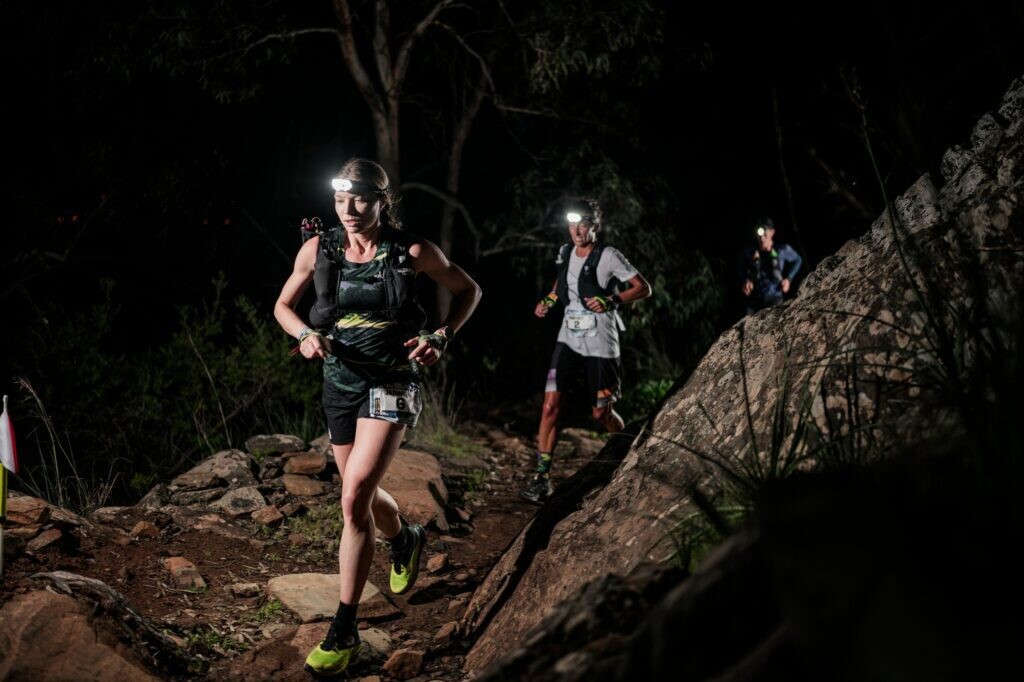
2.- Start a training log
While many runners count on apps like Strava to capture their running data, spending time logging more in-depth information about your training is worthwhile, as it provides unique insights over time. “Strava is great (it has most of my training),” says Lowther, “but it doesn’t include how I felt, what workouts I completed, what I ate before/after, caffeinated, fatigue, etc.”
3.- Wear sunscreen
This one is as simple as it sounds. “Protect thy skin,” says Lowther. “Ultrarunning takes you out there for mega-long hours! Slather up!” While most of us know that prolonged sun exposure during outdoor running can increase the risk of skin damage, including sunburn, premature aging and an elevated risk of skin cancer, it can be easy to forget to reapply after hours on the trails. Wearing sunscreen helps to create a protective barrier, reducing the absorption of UV rays and minimizing the potential harm to the skin, and, as Lowther notes, is an essential precautionary measure (in all kinds of weather) for maintaining skin health.
4.- Find your baseline
Lowther suggests integrating benchmark training runs into your routine to establish an initial baseline. The process involves finishing a predetermined course or distance to use as a reference tool and provides a basis for assessing your performance and comparing it to others in terms of time, pace, or other relevant metrics. “I suppose I’ve done this in an unstructured way (Strava segments anyone?) but seriously, repeating workouts in the same location/distance is great for checking in on things,” she says.
5.- Have patience in the process
Focus on consistency and long-term goals and gains. Consider each run and workout as an investment in your fitness and training bank, even if it didn’t go exactly as planned. “One day at a time, year over year,” says Lowther. “Consistency, is that you?”
by Keeley Milne
Login to leave a comment
Four runners share their mental health stories
Many runners find their sport is not only a way to gain physical resilience, but also a powerful ally in the path toward mental well-being. The road to mental health isn’t solitary, and witnessing others share their challenges and successes can be uplifting and inspiring.
From pros to amateurs, athletes are speaking out about their struggles and triumphs with mental health. Here are four runners to follow who are also mental health advocates.
1.- Alexi Pappas
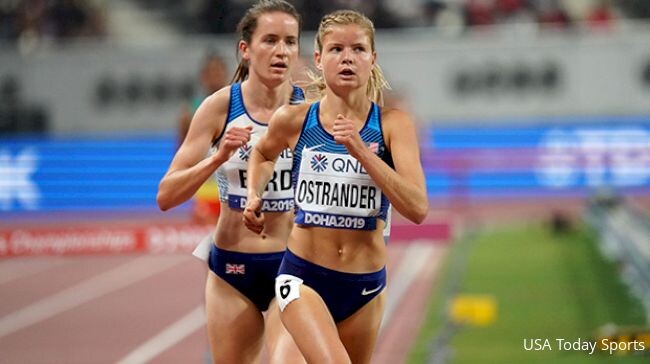
Pappas is known for being a remarkable athlete (she ran the 10,000m for Greece at the 2016 Olympics in Rio de Janeiro), but she also boasts credentials as a renowned author, filmmaker, and mental health advocate. Pappas opened up about mental health in 2020: after working toward and achieving her Olympic dreams, her mental health spiralled, and she was eventually diagnosed with severe clinical depression, which was compounded by injuries, a lack of sleep and her own reluctance to take a break from training.
Pappas authored her first book in 2021: Bravey: Chasing Dreams, Befriending Pain, and Other Big Ideas, highlighting her triumphs and challenges in sports and life, and encouraging readers to be “braveys” in pursuing their passions. She continues to advocate and be a source of hope to others on social media.”What if we athletes approached our mental health the same way we approach our physical health?” Pappas asks.
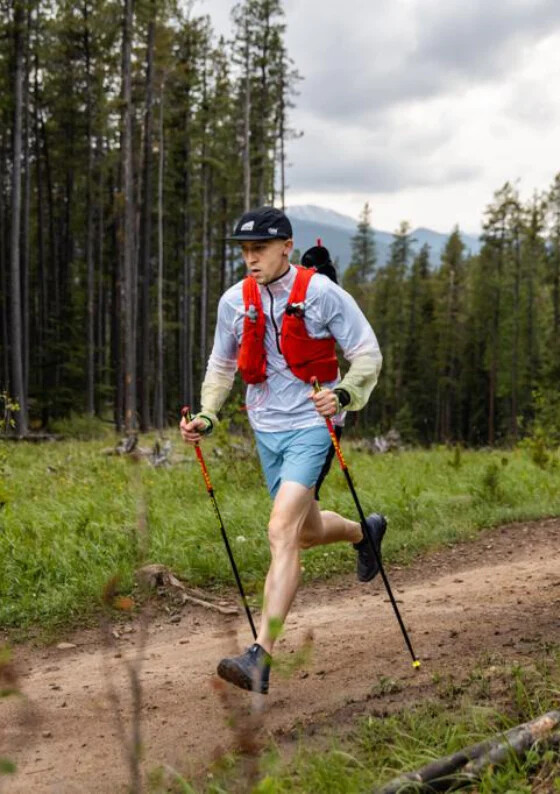
Former American steeplechaser turned elite trail runner, Ostrander uses her Instagram platform to share mental health and eating disorder awareness and advocacy.
In 2021, Ostrander returned to professional competition after being sidelined with multiple injuries for the previous 18 months. During this time, she was hospitalized for treatment of an eating disorder. Ostrander qualified for the U.S. Olympic Trials, where she ran a personal best of 9:26.96 in the 3,000m steeplechase, before deciding to take a year-long break from professional running to prioritize her own mental health.
Ostrander returned to racing in 2023, and made a shift to the trails, running to ninth place at the Mammoth 26K in California in September.
3.- Evan Birch
Canadian ultrarunner and mental health advocate Evan Birch shares an unflinching look at his mental health journey on social media as he works to destigmatize the conversation around mental wellness. Birch is a former 911 dispatcher from Calgary who has been running on trails for more than a decade, and who most recently conquered Western Canada’s first 200-mile race, The Divide 200, in September 2023.
A busy father to young children, Birch recently collaborated with filmmaker Dylan Leeder to create Running Forward, a documentary illuminating the intersection between running and mental health.”It is more important to me now that I meet the truth within me, than it is to make other people comfortable with how I am,” Birch says on social media. “The gifts I have received from allowing myself to be sad are so plentiful.”
4.- Denoja Uthayakumar
From Scarborough, Ont., Uthayakumar is no stranger to hardship, but she has taken her experiences and built a social platform where she can advocate for individuals from similar backgrounds. Uthayakmar is a cancer survivor, body positivity and mental health advocate and was Canadian Running’s pick for our 2023 Community Builder of the Year award.
Uthayakumar was born into a Tamil family, and was diagnosed with thyroid cancer at age five; she shares her physical and mental health challenges alongside the joy that running and the community around it bring to her. “This year pushed me. It broke me down. It challenged me to no end,” Uthayakumar says on Instagram. “It was hard, but I rose higher with my running journey, and was able to share more of my story during my healing while being a survivor.”
by Keeley Milne
Login to leave a comment
The Mysterious Case of the Asthmatic Olympians
You won’t freeze your lungs exercising outdoors this winter, but there are reasons to be cautious about inhaling extremely cold air
When an athlete reaches the podium despite a prior medical event—a cancer diagnosis, say, or a car accident—we consider it a triumph of the human spirit. When a bunch of athletes do so, and all of them have suffered the same setback, we can be forgiven for wondering what’s going on. According to the International Olympic Committee, roughly one in five competitive athletes suffers from exercise-induced bronchoconstriction, or EIB, an asthma-like narrowing of the airways triggered by strenuous exercise. The numbers are even higher in endurance and winter sports. Puzzlingly, studies have found that athletes with EIB who somehow make it to the Olympics are more likely to medal. What’s so great about wheezing, chest tightness, and breathlessness?

The answer isn’t what you’re thinking. Sure, it’s possible that some athletes get a boost because an EIB diagnosis allows them to use otherwise-banned asthma medications. But there’s a simpler explanation: breathing high volumes of cold or polluted air dries out the airways, leading to an overzealous immune response and potential long-term damage. “It’s well established that high training loads and ventilatory work increase the degree of airway hyper-responsiveness and hence development of asthma and EIB,” explains Morten Hostrup, a sports scientist at the University of Copenhagen and lead author of a new review on EIB in the Scandinavian Journal of Medicine and Science in Sports. In other words, the athletes who train hard enough to podium are more likely to develop EIB as a result.
That trade-off might be worthwhile if it means competing at the Olympics. For those of us who simply enjoy spending our winter days vigorously exploring the outdoors, the risk of EIB remains mostly unknown territory. Activities with the highest risk involve sustained efforts of at least five minutes, particularly if they take place in cold or polluted air. Cold air doesn’t hold much moisture, so it dries the airways. This affects skiers, runners, and triathletes, among others. Indoor environments like pools and ice rinks are also a problem, because of the chloramines produced by pool water and exhaust from Zambonis. As a result, swimmers, ice skaters, and hockey players are also at elevated risk of EIB. Over time, repeated attacks can damage the cells that line the airways.
Unfortunately, many athletes develop symptoms of EIB without realizing the underlying problem. After all, the feeling that you can’t catch your breath is pretty much written into the job description of most endurance activities. But starting in the 1990s, sports scientists began to suspect that top athletes had more breathing problems than would be expected. Before the 1998 Winter Games, U.S. Olympic Committee physiologists examined Nagano-bound athletes to see whose airways showed abnormal constriction in response to arduous exercise. Almost a quarter of the athletes tested positive, including half the cross-country ski team.
One reason EIB often flies under the radar is that the usual diagnostic workups aren’t challenging enough to provoke an attack in conditioned athletes. Among the accusations against disgraced coach Alberto Salazar was that he showed athletes how to fool EIB tests to get permission to use asthma meds. “He had a specific protocol,” star 5,000-meter runner Lauren Fleshman told ProPublica in 2015. “You would go to the local track and run around the track, work yourself up to having an asthma attack, and then run down the street, up 12 flights of stairs to the office and they would be waiting to test you.” Salazar certainly gave some shady advice, including encouraging Fleshman to push for the highest possible dosage of medication. But his tips for gaming the asthma test were similar to what USOC physiologists advocate, and an IOC consensus statement published last spring also concluded that more intense exercise challenges are better for diagnosing EIB in conditioned athletes. If you’re really fit, in other words, the rinky-dink treadmill in the doctor’s office isn’t going to push you hard enough.
If you do get an EIB diagnosis, your doctor can prescribe asthma medication, including inhaled corticosteroids like fluticasone and airway dilators like salbutamol. If you’re an elite athlete subject to drug testing, you’ll need to tread carefully, since some of those medications are either banned or restricted to a maximum dosage. Hostrup and his colleagues note that there’s also evidence that fish oils high in omega-3 fatty acids, vitamin C, and even caffeine might help reduce EIB symptoms. And on the non-pharmaceutical side, you can minimize the chance of an attack by doing a thorough warm-up of 20 to 30 minutes, including six to eight 30-second sprints. This can temporarily deplete the inflammatory cells that would otherwise trigger an airway-narrowing attack.
The best outcome of all, of course, is to avoid developing the problem in the first place. In 2008, I interviewed a Canadian military scientist named Michel Ducharme, who told me stories of cross-country skiers swallowing Vaseline in an attempt to protect their airways from the cold. This is a terrible idea on many levels—and, he assured me, totally unnecessary. Air warms up very quickly when you inhale it, so there’s no risk of freezing your throat tissue. But dryness is another question, and scientists have reconsidered whether some kind of protection—just not Vaseline—could be useful if you’re going hard on cold days.
One option is a heat-and-moisture-exchange mask, which warms and moistens the air you inhale. A company called AirTrim makes them with a range of levels of resistance for training or racing. Several studies have found that this type of mask seems to reduce EIB attacks. Research by Michael Kennedy at the University of Alberta found that EIB risk increases significantly when temperatures drop below about five degrees Fahrenheit. The precise threshold depends on conditions and individual susceptibility, so if you start coughing or wheezing, that’s a sign your airways are irritated. If you don’t have a breathing mask, a scarf or a Buff over your mouth can offer a temporary solution.
Don’t take all this as a warning against getting outdoors in the winter. I live in Canada, so staying inside when it’s below five degrees Fahrenheit would be a death sentence. But I’m no longer as macho about the cold as I used to be. I wear puffy mittens and merino base layers, and when my snot starts to freeze I cover my mouth and nose. Athletes with EIB may do better than their unimpaired peers at the Olympics, but that’s one edge I can do without.
by Outside Online
Login to leave a comment
Short runs have major health benefits, research says
There’s a consensus that running has positive effects on our physical and mental health, but how many miles do runners need to log before they reap rewards? Most people know those who exercise have less risk for heart disease, cancer and diabetes and tend to live longer, and it’s a commonly held belief that the more time spent pounding the pavement, the greater the benefits. Recent research suggests we don’t actually need to run very much to reap the rewards, The New York Times recently reported.
Longer doesn’t mean better

There’s a growing body of evidence that correlates even much shorter running sessions to significant health benefits, especially those regarding longevity and mental health. Dr. James H. O’Keefe, director of preventive cardiology at St. Luke’s Mid-America Heart Institute in Kansas City, Mo., says that going for a two-mile (3.2 km) run several times a week seems to give people the full benefit of running, in terms of longevity, specifically.
O’Keefe and his colleagues have published multiple studies on running for health and longevity. In one study, he analyzed long-term health and exercise data gathered from 5,000 adults ranging in age from 20 to 92. People who ran between one and two and a half hours per week at a slow or moderate pace seem to have the biggest boost in longevity–even greater than in runners who run more, faster.
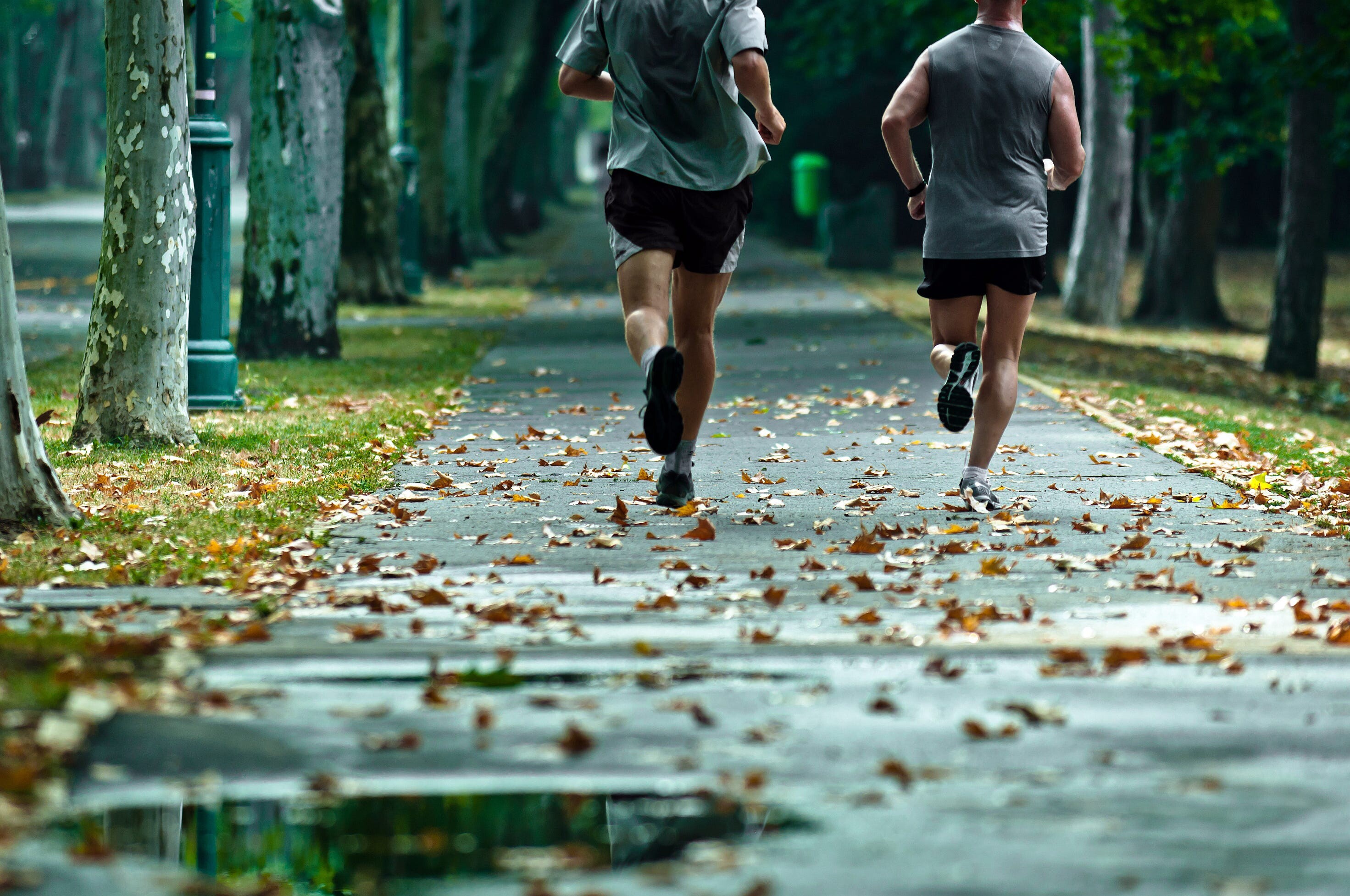
Less time training still boosts mental health
Exercise makes us feel better, but more exercise doesn’t necessarily mean more mental health benefits. A recent research review on exercise and depression reported that adults who managed to exercise for the two-and-a-half hours of physical activity per week recommended by most guidelines gained a 25 per cent lower risk of depression when compared to non-exercisers.
Can’t manage to meet the recommended guidelines? Those who completed only half of the recommended two-and-a-half weekly hours still benefited from an 18 per cent lower risk of depression compared to non-exercisers.
“The growing consensus in the field is that the benefits of running start to accrue within minutes,” said Dr. Rajesh Vedanthan, an associate professor of population health at New York University’s Grossman School of Medicine.
If you’re a newer runner easing into regular exercise, or simply can’t fit in longer running sessions, don’t stress: you’re still adding years to your life, reducing your risk of many diseases and bolstering your mental health.
by Keeley Milne
Login to leave a comment
Track and Field Historian Mike Fanelli Dies of Cancer at 67
Mike Fanelli, the owner of one of the largest track and field memorabilia collections in the United States, died on Saturday after a battle with glioblastoma, an aggressive form of brain cancer. He was 67 years old.
For over 50 years, Fanelli collected running-related memorabilia, which he stored in the “Track and Field Garage” at his home in Sonoma County, California. The expansive collection features over 4,000 artifacts, including the meet program from the first indoor track meet held in the United States in 1868, as well as every issue of Track and Field News and Runner’s World.

Fanelli made his mark on the sport of track and field throughout his life. He represented athletes as an agent, coached the Impala Racing Team, and served as the USATF National Cross-Country chairman in the 1990s. He’s also the namesake for the Mike Fanelli Track Classic, held at his alma mater, San Francisco State University, each spring.
But Fanelli’s impact, perhaps, is best exemplified by the connections and friends he made along the way. Until just days ago, Fanelli would routinely post track and field trivia facts to an audience of over 4,000 Facebook friends. If you look closely, you’ll find legends of the sport reminiscing about old races or giving their two cents in the comments.
Fanelli’s wife, Renay Weissberger Fanelli, released a statement on Monday announcing his passing: “It is with unbearable sadness that I share with you that Michael has passed away from brain cancer, at home, surrounded by loved ones. While he was a public figure in many ways, he was also a very private person. Because of that, he chose not to share his diagnosis broadly, preferring to live his life as if he was living, not dying.”
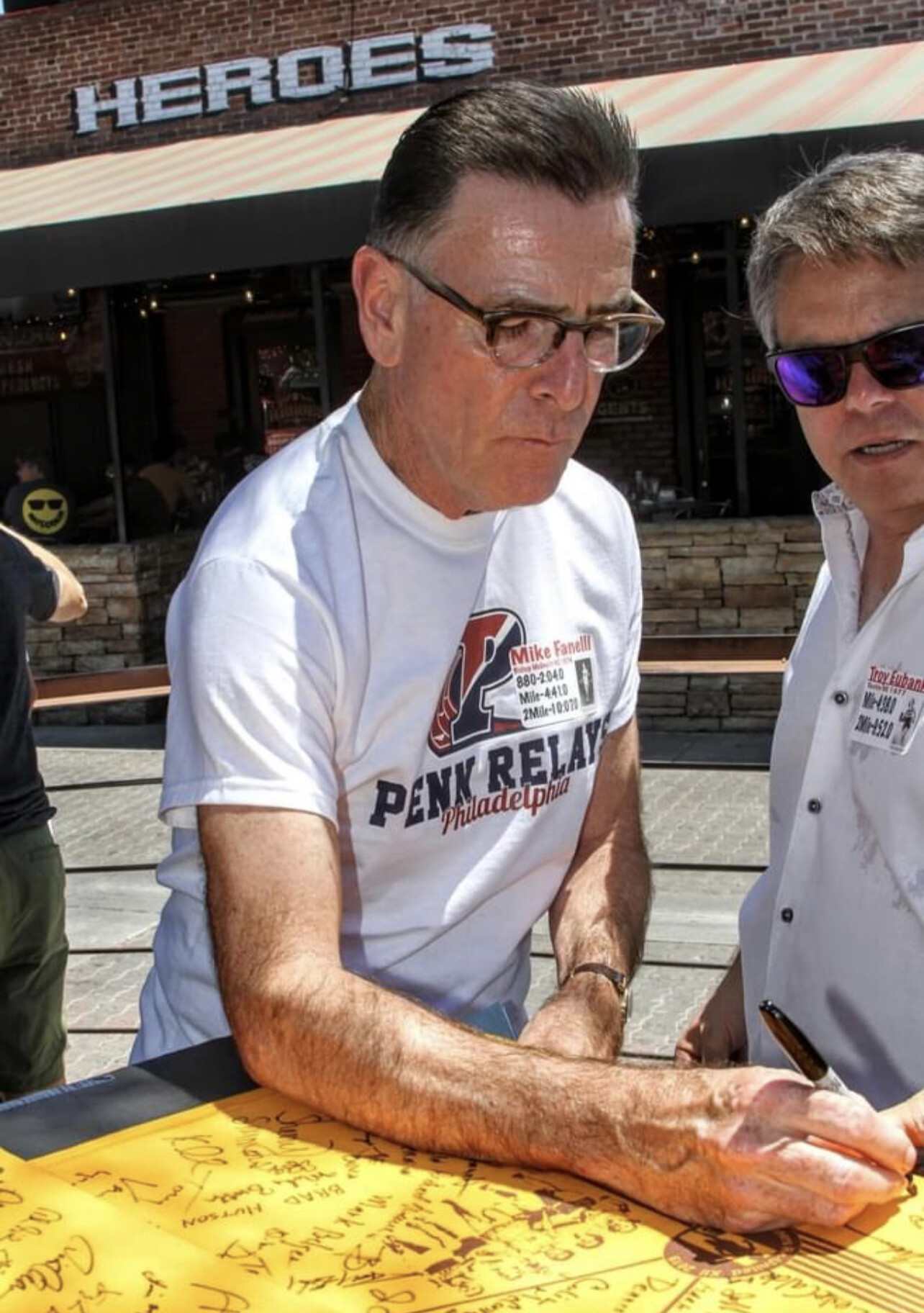
Fanelli lived his life fully up until his last moments. Last month, he completed his goal of running 115,000 miles in his life, dutifully logging each run in composition notebooks.
In 2021, Fanelli told Runner’s World why he feels cataloging running history, with the help of his track-nerd friends, is so important. Running history, he noted, is not particularly well recorded.
“I refer to it as ‘cultural storytelling,’” he said. “When a particular culture wants to pass down their history over the years, and it’s not something that can be transcribed otherwise, this is our opportunity to do that.”
by Runner’s World
Login to leave a comment
Ethiopians sweep women's B.A.A. Half Marathon, Kenyan wins men's race
The 2023 B.A.A. Half Marathon presented by Dana-Farber Cancer Institute and the Jimmy Fund took place today, November 12, starting and finishing within Boston’s Franklin Park. Personal bests and fast times were achieved on a chilly fall day. Preliminary results can be found here.
In the professional open divisions, Fotyen Tesfay (Ethiopia) and Abel Kipchumba(Kenya) took home the women’s and men’s titles respectively, while Jenna Fesemyer and Hermin Garic, both of the USA, captured the wheelchair division victories. American Paralympian Liz Willisset a world record in the T61-64 division (lower limb impairment) in a time of 1:45:19. Among today’s finishers were more than 600 athletes representing the Dana-Farber Cancer Institute and Jimmy Fund, raising more than $700,000 to defy cancer.
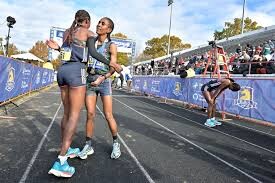
Warming up through the early miles, Tesfay and a sizeable lead pack passed 5 miles in 27:10 and 10 miles in 53:17. The race began to intensify as Tesfay, American record holder Keira D’Amato, B.A.A. 5K champion Senbere Teferi, and World Cross Country Championships silver medalist Tsigie Gebreselama covered the hilly course along Boston’s Emerald Necklace Park System.
While it was a pack with 5K to go, Tesfay was all alone entering White Stadium, breaking the tape in 1:08:46. In her Boston debut, Tesfay not only conquered the competition but also the cold temperatures.
“The pack was so big, but I managed to move ahead of them as I got close to the finish to take the win,” said Tesfay. “This is my first time running a half marathon in Boston and the coldest race I have ever run, so I am very happy to win.”
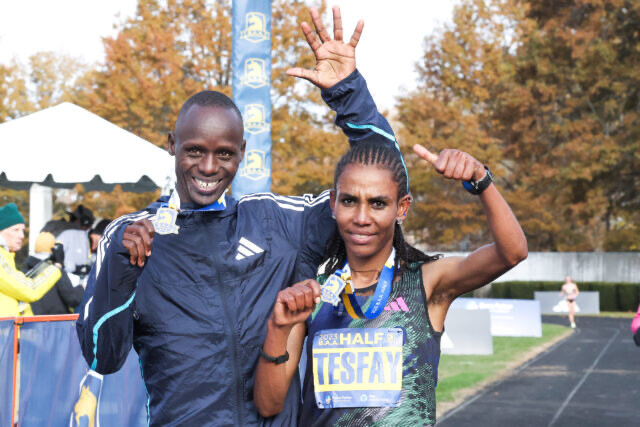
Teferi (ETH) and Gebreselama (ETH) rounded out the podium in 1:09:00 and 1:09:06, followed by D’Amato as the top American in 1:09:12.
In the men’s race, Kipchumba was determined to improve upon a ninth place finish a year ago. Running with Australian Olympian Pat Tiernan and defending champion Geoffrey Koech (Kenya) through five miles, Kipchumba began to break away little by little. At six miles it was a seven second lead, then at 10 miles the gap stood 30 seconds.
Kipchumba’s broke the tape all smiles in 1:01:32 with a hard-charging Tiernan second (1:01:56) and Yemane Haileselassie third in 1:02:17. Sam Chelanga, who won a silver medal in the 10,000m at the Pan Am Games on the track last week, was top American, seventh in 1:02:49.
“Today was difficult because it was very cold. And as we know, Boston has a lot of hills. But I managed to win the race, so I am happy,” said Kipchumba. “I like the crowds. They cheered me and I got a lot of energy to push the pace.”
Login to leave a comment
B.A.A. Half Marathon
Dana-Farber and the Jimmy Fund have partnered with the B.A.A. in the Half Marathon for 13 years as the race’s presenting sponsor. Through this relationship, team members have collectively raised more than $5 million to support groundbreaking cancer research, and enabled Dana-Farber scientists and clinicians to positively impact the lives of cancer patients around the world. Dana-Farber runners often participate...
more...Running may boost inflammation-fighting cells that enhance performance, study finds
A new study reported in The Harvard Gazette has shed more light on how exercise helps the body boost its ability to fight inflammation, which in turn improves performance.
The study, done in mice, suggests the possible role of the exercise in both reducing inflammation and improving performance. Exercise triggers natural inflammation, and our bodies counter the inflammation using something called T-cells or Tregs, which also seem to enhance our ability to use energy as fuel and improve our physical endurance.
The study
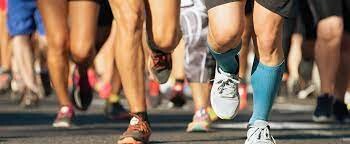
Inflammation is the body’s natural response to injury or infection, but prolonged or chronic inflammation can contribute to the development of heart disease, cancer and autoimmune conditions. Exercise causes temporary damage to the muscles and unleashes an inflammatory response–and this not only helps our bodies become stronger at fighting inflammation in general, but also may help us become faster and stronger athletes.
A team at Harvard Medical School analyzed what happens in cells that were taken from the hind leg muscles of mice that ran on treadmills. The team then compared them with muscle cells obtained from sedentary mice.

The muscle cells of the mice that ran on treadmills showed signs of inflammation and elevated levels of the inflammation-fighting T-cells or Tregs. Researchers discovered that not only did the Tregs lower exercise-induced inflammation, but they also were responsible for the broader benefits seen in regular exercises.
The animals who didn’t exercise still experienced muscle inflammation, but it was not combated by Tregs. Their muscle cells also had swollen mitochondria (a sign of metabolic abnormality). The animals lacking Tregs did not experience the same whole-body benefits from exercise, and had diminished aerobic capacity.
The takeaway
Exercise not only helps our bodies become better able to fight off inflammation, but the inflammation-response cycle that exercise generates may also help build muscular endurance.
“Our research suggests that with exercise, we have a natural way to boost the body’s immune responses to reduce inflammation,” said Diane Mathis, professor of immunology in the Blavatnik Institute at Harvard. “The immune system, and the Tregs cell arm in particular, has a broad impact on tissue health that goes beyond protection against pathogens and controlling cancer. Our study demonstrates that the immune system exerts powerful effects inside the muscle during exercise.”
While research on humans is needed, this research is an important step in understanding how, exactly, exercise makes us healthier. “Mice are not people,” researchers explained, “and the findings remain to be replicated in further studies. However, the study is an important step toward detailing the cellular and molecular changes that occur during exercise and confer health benefits.”
by Keeley Milne
Login to leave a comment
Foot Pain When You’re Running? This Issue May Be to Blame
These mysterious bumps can cause discomfort and pain, but prevention and early treatment can help you stick to your training schedule.
Picture this: You’re blissfully clocking your miles on a Saturday morning until you feel a small but growing pressure on top of your foot. It’s slight, so you ignore it, but over time that discomfort starts to become more noticeable—and once you take your running shoes off at home, you notice a bulb-like bump on your foot.

What gives? You could have what’s known as a ganglion cyst. These sometimes painful bumps aren’t often talked about in the running community, but they’re one of the most common soft tissue masses found in the foot and ankle, per a 2023 review in the Journal of Clinical Orthopaedics and Trauma. Plus, they can derail your training if not addressed.
Here’s everything you need to know about ganglion cysts as a runner, including how to prevent and treat them.
How might a ganglion cyst show up in runners?
A ganglion cyst develops slowly over weeks or months, but it may grab your attention during a run.
“There will be some soreness associated with a ganglion during a run due to shoe pressure against it,” says Karen A. Langone, D.P.M., a Southampton, New York-based spokesperson for the American Podiatric Medical Association and podiatrist who specializes in sports and fitness medicine. “You might notice a lump on the foot, which can worsen during the run.”
That lump on your foot can be easy to confuse with a number of other conditions. Found along a tendon or near a tendon, a ganglion cyst can be mistaken for an exostosis, for example, which is a benign (noncancerous) bone tumor, per the Cleveland Clinic.
“It might also be confused with a stress fracture of a metatarsal bone,” says Alex Kor, D.P.M., a spokesperson for the American Podiatric Medical Association, a podiatrist at Hendricks Regional Health in Danville, Indiana and team podiatrist for the athletic programs at Butler University. A metatarsal stress fracture is a break in the bone from repeated injury or stress, which can be caused by running.
What is a ganglion cyst?
On the other hand, ganglion cysts are noncancerous bumps that usually appear along your tendons or the joints of the wrists or hands, but they can also occur in ankles and feet, according to the Mayo Clinic. They’re filled with a jellylike fluid.
“A ganglion cyst, like any mass, makes the runner’s foot feel tight,” says Kor. “The pain can be characterized as dull or sharp if mileage is extended or there is increased shoe pressure.”
This cyst is usually caused by a bony point that’s exacerbated by shoe pressure (and possibly by your foot swelling at the end of a run), a tendon that gets overused (which may be the result of tendonitis), or from acute trauma. The fluid in the tendon sheath can “leak out” after overuse or trauma to form the ganglion cyst, adds Kor.
Once one of these things occurs, the inflammation within the tendon sheath accumulates in one area and worsens, forming the ganglion cyst.
Although they’re filled with fluid, they can feel firm to the touch, per Yale Medicine. They can be as small as a pea or as large as an inch in diameter. Sometimes, they can affect joint movement and cause pain if they press against a nerve.
The majority of ganglion cysts occur on the top of the foot or the front of your ankle, says Kor. They are rare on the bottom of the foot.
Risk factors for these cysts include sex and age (most often, ganglion cysts occur in women between the ages of 20 and 40) and osteoarthritis (particularly when they occur in the hands), per the Mayo Clinic.
Should you run with a cyst?
You can continue to run with a ganglion cyst, especially if there is no pain. Even if there is some pain, your level of discomfort will determine the best steps for treatment.
“This is not a condition that will significantly worsen [if you run on it],” says Kor. “In other words, it is not like a stress fracture that can ‘break’ to the point that surgery is needed.”
However, it’s important to check with a doctor to make sure the bump is a ganglion cyst and not something more serious, and to determine ways to avoid discomfort.
Being a runner alone does not increase your risk of ganglion cysts, but your foot shape may play a role. “They are a little more common in very high arched feet and very flat feet,” says Kor.
How can runners treat ganglion cysts?
First, visit your doctor, who may conduct imaging tests like an X-ray and ultrasound to confirm that it is a ganglion cyst (and not something else).
Once the bump has been identified as a ganglion cyst, there are a few treatment options, starting with these less invasive methods:
Padding
This can be placed around (not on) the ganglion cyst to avoid pressure from a running shoe. “A pad or blister bandage directly over the ganglion cyst may worsen the pain,” says Kor. “Typically, a horseshoe pad or donut pad is applied to offload the cyst.”
Icing
You can also ice your foot after a run and on a daily basis for 20 to 30 minutes. Place a towel between your foot and the ice pack to avoid skin irritation. “Ice can cause vasoconstriction to reduce inflammation, swelling, and pain,” says Kor.
Changing Shoes
A supportive shoe has the potential to reduce overuse, which may help in the initial stages of a ganglion cyst, says Kor. A supportive shoe should not bend at the sole (typically, this has nothing to do with the brand name or price of the shoe).
Taking Breaks from Footwear
When you’re not running, avoid shoes that exacerbate the ganglion cyst area. For instance, skip the one-strap sandal that directly rubs the cyst area. Unsupportive footwear, like flip-flops with a flexible sole, can also worsen the cyst.
Adjusting Your Shoe Laces
If the ganglion is on the top of the foot, your shoelace pattern can be changed to avoid direct pressure on the ganglion. For instance, your podiatrist might recommend a lacing pattern often used for patients with high instep (the bony structure on top of your foot).
In this case, cross your laces as usual toward the bottom of the tongue, skip crossing them over in the middle (and instead create a line along each side of the tongue), then finish lacing near the top of the tongue. This offloads the top of the foot that may be affected by the cyst. See an example of how to do it here.
Take Anti-Inflammatory Medication
If approved by your doctor, you can take over-the-counter anti-inflammatory medications to ease the discomfort of a ganglion cyst.
If you’re in pain, it’s worth speaking with your doctor about longer-term solutions for treating the cysts. Kor notes that many runners may see little to no improvement with these conservative options.
If these steps don’t help, your podiatrist might suggest an in-office procedure in which the fluid is withdrawn and sometimes injected with a small amount of cortisone to shrink the remaining cyst—or complete surgical removal of the cyst.
Even surgery isn’t a magic bullet: The recurrence of ganglion cysts after surgical removal ranges from 4 to 40 percent, according to a 2021 study in The Archives of Bone and Joint Surgery.
Clearly, it’s important to speak with your doctor transparently about your pain levels to determine the pros and cons of each treatment. Fifty percent of the time, ganglion cysts resolve on their own, according to a historic study in Current Reviews in Musculoskeletal Medicine.
How can runners prevent ganglion cysts?
Some of the methods described above for treating an early-stage cyst can also be used to prevent one in the first place, starting with your running shoe.
“Ganglions are often found over areas where the bone is prominent and there is aggravation from shoe pressure,” says Langone. “A well-fitting running shoe is an important part of avoiding ganglions, as is altering lacing patterns to avoid painful pressure.”
If your doctor has already aspirated your ganglion cyst and you want to prevent recurrence, a well-fitting shoe and altering lacing patterns may still help—along with icing after runs.
“Over-the-counter or custom-made orthotics can also indirectly help with a ganglion cyst,” says Kor. “There is some indication that increasing support within the shoe can reduce the overuse on a tendon, which may in turn reduce the irritation that contributes to a cyst.”
Your podiatrist can prescribe custom orthotics based on your foot’s specific shape. That said, if a ganglion cyst is already significantly symptomatic, an over-the-counter orthotic will typically not help.
As with most things, prevention and early detection are key. If you start to notice discomfort or an unusual bump, make an appointment with your doctor to discuss treatment options—so you can get back to pain-free miles.
by Runner’s World
Login to leave a comment
Defending Champions, American Record Holders & Global Stars Highlight 2023 B.A.A. Half Marathon Professional Field
The Boston Athletic Association (B.A.A.) announced today a star-studded professional field for the 2023 B.A.A. Half Marathon presented by Dana-Farber Cancer Institute and the Jimmy Fund. Defending champions Viola Chepngeno, Geoffrey Koech, and Jenna Fesemyer all return, while American half marathon record holder Keira D’Amato will take on the challenging course for the first time on Sunday, November 12. The B.A.A. Half Marathon starts and finishes at Franklin Park and runs along the Emerald Necklace Park System.
“As one of the most competitive half marathons in the country, we’re eager to bring many of the best open, wheelchair, and Para athletes in the world to Boston for November’s B.A.A. Half Marathon presented by Dana-Farber Cancer Institute and the Jimmy Fund,” said Jack Fleming, President and CEO of the B.A.A. “Nearly 9,000 athletes will take to the roads, led by some of the fastest and most decorated competitors in event history.”
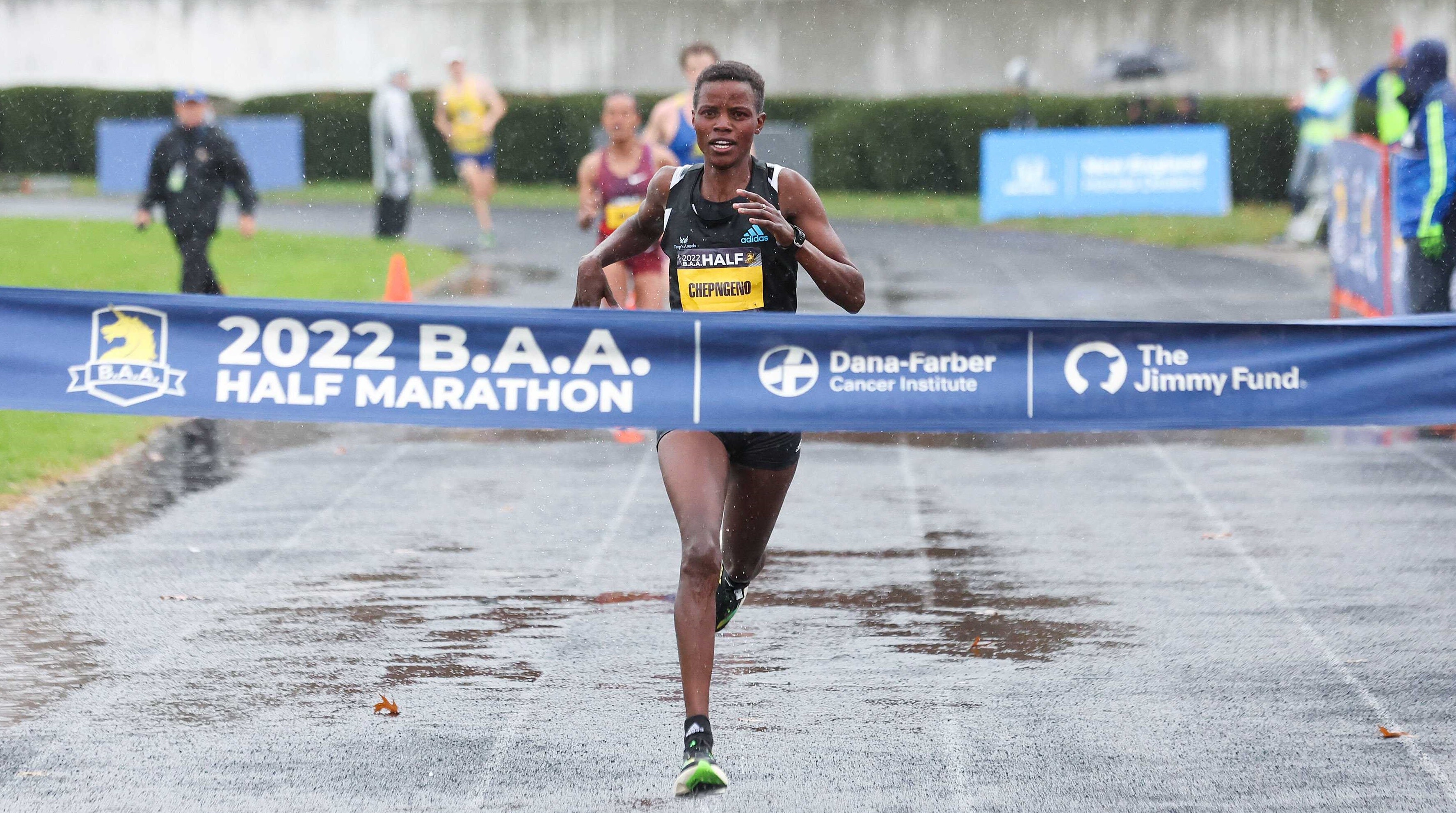
In 2022, Chepngeno (Kenya), Koech (Kenya), and Fesemyer (USA) won the women’s open, men’s open, and women’s wheelchair divisions, respectively, while Marko Cheseto and Jacky Hunt-Broersma (both USA) persevered through rain to finish atop the podium in the Para Athletics Division. To repeat the feat, all will square off against a field that includes national record holders and global medalists.
Senbere Teferi of Ethiopia, the 2022 B.A.A. 5K champion and three-time world championships medalist, looks to continue her winning ways in Boston. She’ll battle Tokyo Marathon champion Rosemary Wanjiru, 2019 B.A.A. 10K winner Fancy Chamutai, world cross country silver medalist Tsigie Gebreselama, last year’s runner-up Bosena Mulatie, and two-time B.A.A. Half Marathon second place finisher Cynthia Limo.
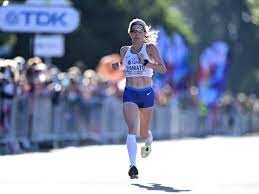
Four Americans who competed at the World Athletics Championships in Budapest in August will toe the line, including D’Amato, Lindsay Flanagan, Susanna Sullivan, and Natosha Rodgers. D’Amato set the national half marathon record of 1:06:39 at this year’s Gold Coast Half Marathon in Australia, and along with Flanagan and Sullivan made up Team USA at the World Championships Marathon. Rodgers raced the 5,000m and 10,000m on the track in Budapest, finishing 14th in the latter event. Rachel Schneider Smith, a 2021 Olympian at 5,000m for Team USA, will be making her B.A.A. Half Marathon debut.
Ten men with sub-61 minute personal bests will line up for the B.A.A. Half Marathon. Abel Kipchumba owns the fastest lifetime best in the field (58:07), while Shadrack Kimining of Kenya, second fastest in the field, placed fifth in 2022. Mohamed El Aaraby (Morocco), Yemane Haileselassie (Eritrea), Pat Tiernan (Australia), and Amanuel Mesel (Eritrea) bring international expertise. The fastest American men’s entrants are Nadir Yusuf (1:03:23), Kevin Koski (1:03:35) and Ryan Cutter (1:03:54) and sub-2:10 marathoner Ian Butler.
Dedham, Mass.-native Brian Reynolds, who set a world record at last year’s B.A.A. Half Marathon in the T62 (lower-limb impairment) category, returns, as does Marko Cheseto (T62) who ran 1:24:54 in 2022. Jacky Hunt-Broersma, last year’s women’s T62 champion, and Liz Willis, a three-time Boston Marathon T62 winner, will compete as well.
In the wheelchair division, Fesemyer set a course record 59:50 in 2022 to become the first women’s wheelchair athlete ever to break one hour in race history. Fellow 2022 women’s wheelchair podium finishers Yen Hoang (second place) and Michelle Wheeler (third) return as well.
James Senbeta and Hermin Garic, veterans of many B.A.A. events, headline the men’s wheelchair field. Garic was victorious at this year’s B.A.A. 10K.
The B.A.A. Half Marathon course runs along the picturesque Emerald Necklace Park System, past landmarks such as the Arnold Arboretum, Jamaica Pond, and Franklin Park Zoo, before finishing at White Stadium in Franklin Park. The B.A.A. Half Marathon is a family-friendly event for athletes and spectators of all ages. Free youth events will be offered on race morning within Franklin Park, including races and medals for all.
Dana-Farber Cancer Institute and the Jimmy Fund has partnered with the B.A.A. Half Marathon since 2003 as the race’s presenting sponsor and exclusive charity team. Through this relationship, Dana-Farber runners have collectively raised more than $8 million to support groundbreaking cancer research, and enabled Dana-Farber scientists and clinicians to positively impact the lives of cancer patients around the world. In advance of the 2023 event, 640 Team Dana-Farber athletes have raised $375,000 to date.
Login to leave a comment
B.A.A. Half Marathon
Dana-Farber and the Jimmy Fund have partnered with the B.A.A. in the Half Marathon for 13 years as the race’s presenting sponsor. Through this relationship, team members have collectively raised more than $5 million to support groundbreaking cancer research, and enabled Dana-Farber scientists and clinicians to positively impact the lives of cancer patients around the world. Dana-Farber runners often participate...
more...St. Paul firefighters tackling the Twin Cities Marathon in full gear for a cause
Among the sea of runners in shorts and tank tops in the Twin Cities Marathon, two will stand out for what they’re wearing: They’ll be in their St. Paul firefighter turnout gear and helmets.
Their heavy gear won’t be ideal for the expected temperatures, but that’s not why they’d rather not be there. It’s because of what their presence represents: Capt. Kyle Bode and firefighter Bryan Buxton are taking part in the marathon for their fallen co-workers, who they wish were alive and not having people run in their memories.
They’re trying to bring attention to the job-related risks to firefighters: cancer, cardiac problems and suicide linked to trauma that builds up from what firefighters witness in their work. Five active-duty St. Paul firefighters have died of such causes in the last eight years.
After St. Paul Fire Capt. Chris Parsons passed away of a heart attack at age 48 in June, Bode said he was sick of seeing his friends from the fire department die.
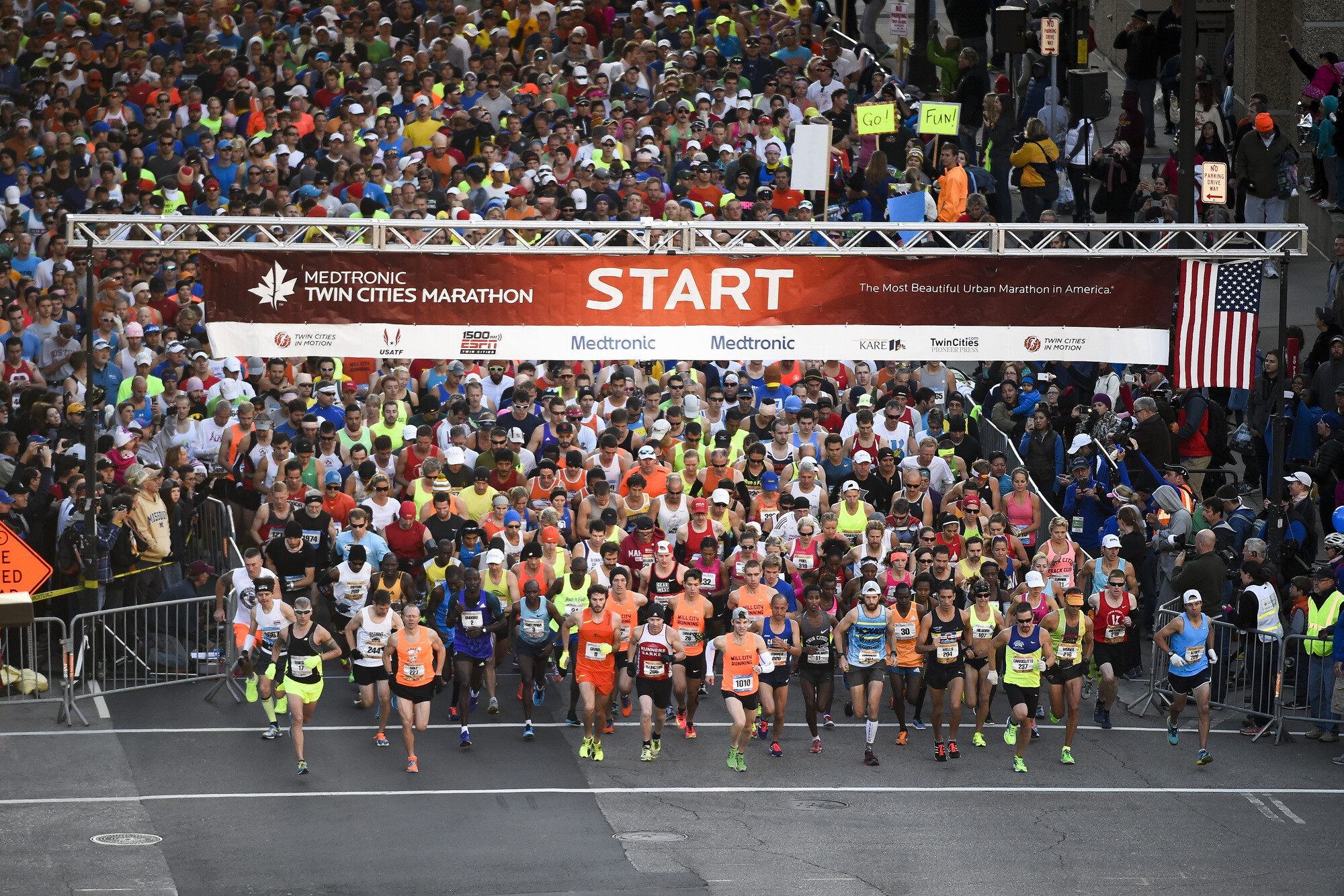
“I don’t like sitting around and I’m frustrated and I want to do something,” Bode said recently. He said the community might notice when individual firefighters die unexpectedly, “but I don’t know if anyone realizes the big picture of how many people we’ve lost.”
Bode and Buxton enjoying taking on challenges — like the impromptu time they decided to see who could do the most burpees (Buxton reached 750 over three hours). And the men knew they needed to do something on a large scale. Running a 5K in their full gear wouldn’t cut it.
They thought participating in the marathon in their gear would be a way to raise awareness and donations to a nonprofit foundation for firefighter wellness.
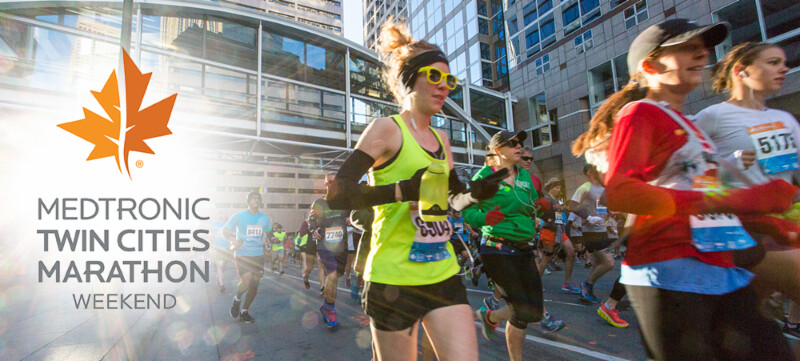
More than 20,000 people are registered for the Twin Cities Marathon and 10-mile race on Sunday. With projected highs in the 80s this weekend, and the National Weather Service saying it will feel more like summer than fall, organizers are warning racers to prepare for high temperatures and high humidity. St. Paul firefighters and paramedics will be along the route in the Capital City to ensure racers are safe and healthy, said Deputy Fire Chief Roy Mokosso.
Getting support from fellow firefighters
Some of the stigma around mental health has meant firefighters not talking about the horrors they respond to on emergency calls, and Bode and Buxton are trying to break that down just by asking for help with the marathon.
“In the past, it’s been very difficult for firefighters to ask for help because we’re the ones that help people,” Buxton said. “We’re making that change and we’ve reached out to people at the fire department and said, ‘We need help. We’re not sure if we’re going to be able to complete this task.'”
Off-duty firefighters will be along the marathon route to provide nutrition and hydration to Buxton and Bode, as well as moral support.
Buxton has run the distance of a marathon (26.2 miles), but not an official marathon; he’s done triathlons, mud races with obstacle courses, and rucking events (long walks while carrying a weighted rucksack).
Bode has run seven marathons, mostly the Twin Cities Marathon, and competed in Iron Man triathlons.
“I’m pretty slow,” Bode said. “I wouldn’t qualify for Boston (the marathon) or anything. I just like to push myself.”
They’ll stick together through the race course
Bode has been a St. Paul firefighter for nearly 18 years and the department’s health and wellness coordinator for about a year. He works with all firefighters and with cadets as they go through the department’s fire academy.
“My focus has been on trying to prevent some difficulties that firefighters face later on, whether it be mental health or making sure they keep their health a priority,” he said.
The St. Paul Fire Department has a peer support group, a peer fitness team and a cancer task force that works to reduce how much exposure firefighters have to dangerous chemicals from fires.
Buxton is a St. Paul firefighter of 10 years who’s currently a training assistant. He’s helping to run the fire academy that started Monday.
Buxton and Bode initially thought they’d walk Sunday’s marathon, but then they realized the time limit is six hours. They’re planning a combination of jogging and fast walking, and their goal is to complete it in time.
They’re going to start at the back of the pack and stay together the whole time. They plan to wear about 40 pounds of turnout gear — that’s the protective jacket, air tanks (but not the breathing masks they’d usually wear with them) and helmet that firefighters don to battle fires. They’ll likely start and end the race in pants that are part of the gear, but otherwise wear shorts.
Both men are also paramedics for the fire department, and said they’ll be watching over each other. They’ll be making sure they get plenty of electrolytes and hydration. If they feel overheated, Bode said they’ll take off their jackets until they cool down.
“We have a rule in the fire service: Two in, two out. You go in the fire together, you leave the fire together,” Buxton said. “We don’t want anybody to be alone and we’re taking that same tactic in this race. We’re going in together, we’re coming out together.”
Mokosso, the deputy fire chief, will be running Sunday’s 10-mile race for Capt. Parsons. Mokosso wasn’t planning to run this year, but after he saw that Parsons had signed up before he died, he asked Parsons’ family if he could take his spot and run in his honor.
“Chris has been at the top of my mind every run,” Mokosso said of his preparation for the race. “We were both the same age, we had a lot of things in common, and he and I had run a couple of marathons together.”
Annika Parsons, Chris’ younger daughter, said every way that people honor her father is meaningful to her and her family.
Chris Parsons was known for his statewide advocacy for firefighter health and safety, and he was physically fit, “so when it happened to him, it showed how it can happen to anyone,” Annika Parsons said. “Getting the word out really can help firefighters in the future, too.”
When Bode and Buxton need motivation, they expect they’ll be remembering their co-workers and families they left behind: Capts. Chris Parsons and Mike Paidar, and firefighters Tommy McDonough, Jason Woodbury and Shane Clifton.
by Mara H. Gottfried
Login to leave a comment
Medtronic Twin Cities Marathon
The Medtronic Twin Cities Marathon Weekend offer races, walks and activities for every age and ability level! Learn more about the weekend's events and activities by using the navigation bar at the left or top of your screen. The Twin Cities Marathonis a running event in the Minneapolis-Saint Paul area. The TCM was first run in 1982, and typically takes...
more...Molly Bookmyer who overcame cancer now challenges TCS Toronto Waterfront Marathon
Marathoners endure much suffering in order to excel in their sport but few have struggled with brain cancer.
American Molly Bookmyer underwent two surgeries eight years ago following a diagnosis of a brain tumor while finishing up her degree at Ohio State University.

With that awful period behind her now, as an elite marathoner, her path has led her to the 2023 TCS Toronto Waterfront Marathon where she, and a growing number of American elites, will attempt to qualify for the 2024 US Olympic Trials, to be run in Orlando, Florida on February 3.
Her current best is 2:31:39 and she sees Toronto Waterfront – her first international race – as an opportunity to knock off a significant chunk of time.
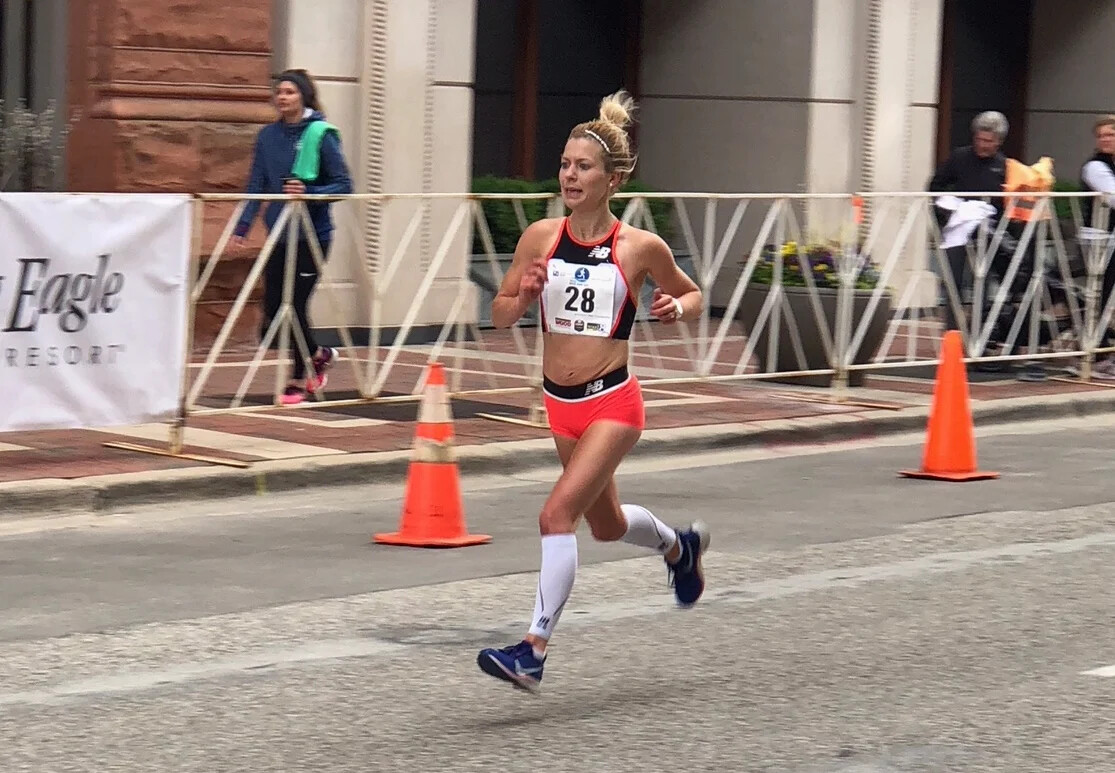
“I want to run 2:27,” she reveals. “I feel I haven’t had a breakthrough in my marathon I have had some good races at shorter distances. I ran a 1:10:51 half marathon last fall. So I have had some success at the shorter distances and I haven’t quite figured out the full marathon distance yet.
“My first goal is to get the world championship standard and the second goal is to get the Olympic standard.”
Bookmyer graduated from Ohio State in 2013 with a Bachelor of Science in Business Administration, Management and Operations. While she was a member of the Buckeyes’ cross-country and track teams she was not a scholarship athlete. Now she has a better understanding as to why she was limited.
“I was a walk-on at OSU. I got better but I wasn’t a star in college,“ she explains. “When I look back at it, it was probably because I was sick at the time. I didn’t know I had a brain tumor. I competed on the team but my times weren’t spectacular. I lettered in cross country and track but I wasn’t All American and I didn’t make it to the NCAA’s.”
A series of stress fractures also held her back and it was by a stroke of luck that the tumor was discovered.
“In different blood tests to try to find why I got stress fractures they found one of my hormones prolactin was high,” Bookmyer says. “This (hormone) is associated with tumors near your pituitary gland. They did a scan and they found the tumor in my ventricle. It was kind of luck. I probably had symptoms but thought it was normal.”
Following the diagnosis she underwent a spinal tap to determine if the cancer cells were in her spinal column. Fortunately, it came back negative. But the surgery to remove the growing tumor was vital.
Originally from Cleveland, she moved to Columbus to study at OSU and remained there ever since. That’s also where she met her husband, Eric.
Immediately after graduation she worked for the Abercrombie & Fitch company. Then, having dealt with her own serious illness, Eric was diagnosed with testicular cancer. Running was helpful in both relieving the stress of being a full-time caregiver to him as well as helping in her own recovery.
“I am healthy now,” she says through a smile. “I get a brain scan every year. It used to be every six months. After the first surgery I had complications from the surgery. The tumor has not come back.
“Eric just had his 5-year checkup, He had a couple of surgeries and ‘chemo’ so now he is healthy as well, I guess we are lucky we went through a lot and came out the other side healthy.”
Two years ago she was recruited by one of her former contacts at Abercrombie & Fitch to work for Hawthorne Gardening Company which is involved in the hydroponics industry selling lights, pots, containers, benches and other gardening equipment in both the cannabis and general botany industry. Most importantly, the job allows her to work remotely, something that helps while training full time.
Down time is limited but she says she enjoys spending time with Eric and her dog Cooper. Listening to music is another relaxing pastime with Rob Thomas of Matchbox Twenty remaining a favorite. With the Toronto Waterfront Marathon rapidly approaching she is confident she will perform at her best on the big occasion.
“Training is going really well,” Bookmyer declares. “I had a little setback in the spring. I tore my plantar fascistic but that’s fully healed. My mileage has gone to 115 to 120 miles (185km – 193km) a week which is higher than I have been before; paces are good, I am feeling strong. I am excited for what that means.”
by Paul Gains
Login to leave a comment
TCS Toronto Waterfront Marathon
The Scotiabank Toronto Waterfront Marathon, Half-Marathon & 5k Run / Walk is organized by Canada Running Series Inc., organizers of the Canada Running Series, "A selection of Canada's best runs!" Canada Running Series annually organizes eight events in Montreal, Toronto and Vancouver that vary in distance from the 5k to the marathon. The Scotiabank Toronto Waterfront Marathon and Half-Marathon are...
more...These Expert-Recommended Kinesiology Tapes Could Help Your Running Recovery
To overcome a nagging running injury, just tape yourself back together.
Kinesiology tape, created by Japanese chiropractor Dr. Kenzo Kase in 1973, is a stretchy therapeutic tape made of mostly cotton that uses medical-grade acrylic adhesive to stick to your skin. When stretched tight, the tape pulls the skin away from the tissues beneath, reducing the pressure against the underlying tissues. In theory, this promotes circulation and the removal of waste products through lymphatic drainage.
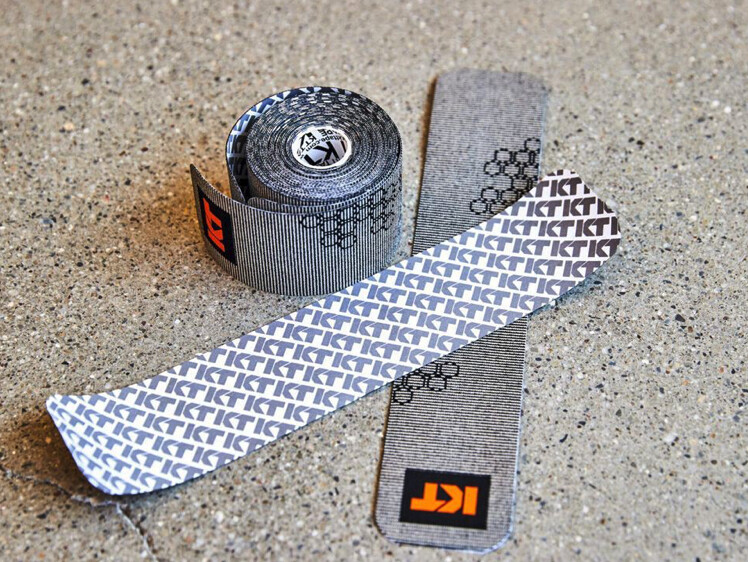
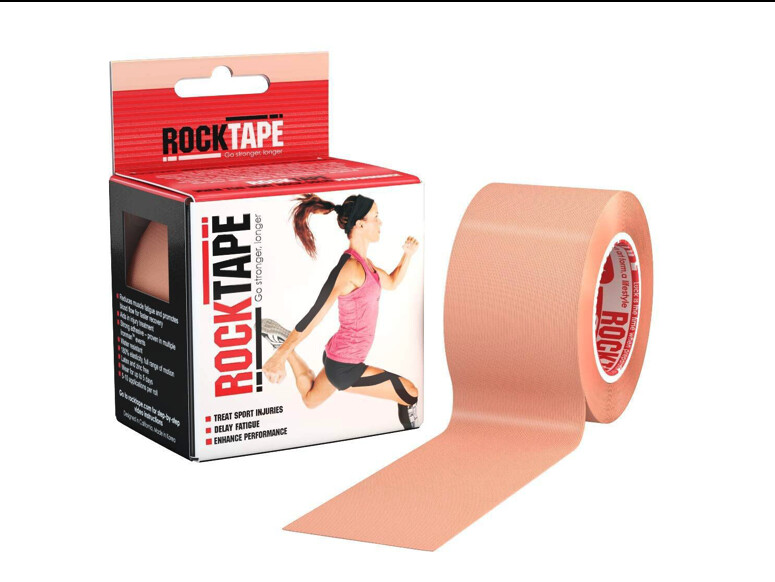
Our experts said that some runners use kinesiology tape to reduce pain. “Once you reduce the perception of pain, you can get an increase in range of motion and an increase in muscle activation,” says Dr. Karena Wu, clinical director of ActiveCare Physical Therapy. Because nerve fibers associated with touch stimulation are larger than pain fibers, the brain receives the touch stimulation faster, reducing your perception of the pain.
The tape can also inhibit certain muscles or facilitate others. Instead of immobilizing muscles and joints like athletic tape, kinesiology tape is stretchy, and runners can use that elasticity to adopt a stronger, healthier stride. “People who have shoulder or trap pain as they’re running tend to hike their shoulders up toward their ears,” says Denise Smith, PT and owner of Smith Physical Therapy + Running Academy. “We’ll tape down their shoulders. As their shoulder creeps up as they fatigue, that triggers a sensation of the tape pulling on the skin, so they relax their shoulders.”
Scientific research confirms some of kinesiology tape’s purported benefits. A 2022 meta-analysis of eight studies conducted by the University of Padova in Italy found that kinesiology tape was able to improve gait function, range of motion, and muscle activation in athletes. However, a 2020 study out of Leeds Beckett University in England found that the tape made no difference in cutaneous blood flow, calling into question some of the tape’s purported benefits for muscle soreness and recovery.
Even without hard science behind all of its claimed benefits, kinesiology tape has been widely adopted by athletes and trainers. At less than $20 per roll on average, it’s a low-cost, low-risk way to at least try to optimize your training regimen.
What to Consider When Picking Out Kinesiology TapeAllergies and Sensitivities
Most kinesiology tapes are made from hypoallergenic materials like cotton and nylon, and specifically avoid using those that commonly trigger allergies, such as latex. Even so, make sure to check the composition of any tape before applying it if you have a skin allergy.
Even if you don’t have a specific, intense allergy, some adhesives may irritate sensitive skin. Several brands offer “gentle” tapes with weaker adhesives that are less likely to cause redness or swelling.
Separately, keep in mind that removing kinesiology tape will likely affect your skin, since the adhesive is very strong. Make sure to read the removal instructions before yanking the tape off—some manufacturers recommend using baby oil to break down the adhesive before removal.
Body Hair
You don’t need to shave your body hair to use kinesiology tape, but you should know that too much body hair will defeat even the stickiest adhesives. If your tape is coming off more quickly than it should on a hairy area, shaving down to a quarter-inch or less may improve the tape’s staying power.
Positioning
Some areas of your body are easier to tape yourself than others, so consider where and how you’ll apply the tape before you buy. Ideally, you should consult a doctor or physical therapist before using kinesiology tape so they can show how to properly cut and apply it in a way that will enhance your performance, instead of harming it. “It is very important to know the anatomy where you are trying to apply the tape,” said Bruce Allen, DC, a chiropractor and certified kinesiology tape practitioner at the San Diego Running Institute. “If taped incorrectly, you could give yourself a separate injury.”
We also have a guide to using kinesiology tape, with expert instructions for taping yourself up to deal with a handful of common running injuries, including plantar fasciitis and shin splints.
If you’re concerned about mis-taping, we recommend looking for pre-cut kinesiology tape strips and patterns, which are made to support specific trouble spots, including knees, shoulders, and the lower back.
How We Selected the Best Kinesiology Tapes
To choose the best kinesiology tape, we consulted eight physical therapists, trainers, and running coaches to find out which ones they use and recommend to their athletes. We also gleaned insight from popular running forums like Slowtwitch, impressions from additional experts, and hundreds of customer reviews at major retailers, such as Amazon and Walmart.Vikash Sharma DPT, OCS, COMT of Perfect Stride Physical Therapy in New York City is a doctor of physical therapy and a certified running coach with the Road Runners Club of America and USA Track and Field. An avid runner, Sharma competes in road races around the Northeast.
Karena Wu, DPT, OCS, COMT, CSCS, CKPT, CPI, FAAOMPT is the owner and clinical director of ActiveCare Physical Therapy in New York and Mumbai. Wu is also the former director of education for Spidertech Kinesiology Tape.
Bruce Allen, DC, CKTP is a doctor of chiropractic medicine and certified kinesiology tape practitioner based in San Diego. Allen received his Bachelor of Science in Kinesiology, specializing in kinesiotherapy, from San Diego State University.
Denise Smith, PT is the owner of Smith Physical Therapy + Running Academy in the Chicago suburbs. A certified running technique specialist, Smith has consulted for the Russian olympic and national triathlon teams and travels the country educating runners on proper form using the Pose Method.
Robyn Pester of Robyn Pester Physical Therapy in Eugene, Oregon has been the lead PT for the 2022 World Athletics Championships, the Olympic Track & Field Trials in 2016 and 2020, and other high-end local track meets. Her manual therapy skills have developed over a 30-year career that has helped hundreds of clients return to active lifestyles.
Ryan Sweeney, DPT earned a doctorate in physical therapy at Duke University in 2013 and now works as an orthopedic clinical specialist and muscle activation technique specialist at Specialists in Sports and Orthopedic Rehabilitation in Overland Park, Kansas.
Matt Silver, DPT at Alpha Project Phyzio and Performance and a certified running gait analyst, helps injured runners regain their stride with athlete-focused physical therapy.
Peter Dills, DPT is the clinical director of Therapeutic Associates Physical Therapy in North Portland, Oregon. A certified therapeutic pain specialist and manual therapy specialist, Dills is particularly passionate about treating runners, especially foot and ankle disorders.
Dan Roe, author of this piece, is a former Runner’s World test manager and a former Division I distance runner at the University of Missouri. Kinesiology tape is a component of many top athletes’ training regimens, and a crucial aid for all kinds of runners who want to relieve soreness and remain cognizant of their form. Kinesiology tape mimics the elasticity of skin and lifts your skin away from tissues beneath, creating space that may help relieve joint pain, improve circulation, stabilize muscles, and reduce muscle soreness. Physical therapists also use it to help runners correct bad habits by helping them focus on activating muscles they may be underutilizing.
At the same time, it’s not a panacea for muscular health. In fact, it isn’t for everyone. We’re here to help you figure out whether kinesiology tape can help you support your muscles, improve circulation or prevent injury. We’ll also point you toward the best kinesiology tapes you can buy right now, from KT and other brands, based on expert advice from physical therapists who recommend the tape to their athletes.Who should avoid using kinesiology tape?
You should avoid kinesiology tape if you have a condition where more blood flow would be bad—deep vein thrombosis, diabetes and active cancers are among conditions that have excluded people from participating in kinesiology tape research. Also avoid taping over open wounds due to the risk of an infection.
If you’re unsure how your skin will react to an acrylic-based adhesive, or any of the components in a specific tape, test it first by applying an inch-long strip and waiting a few minutes to see how you react.
How long should I leave kinesiology tape on?
According to our experts, you should leave your KT tape on until it starts to slide or fall off. “The tape is meant to be a sensory stimuli so it is meant to be worn for the length of the activity and even afterwards,” said Wu. “In rehabilitation, it should be used for a few weeks in order to retrain or support or inhibit tissues during the recovery process.”
In most cases, a piece of tape should last for a few days, up to a week. Most of these tapes are water-resistant so you will be able to shower after a run while wearing your tape, but it will likely weaken the adhesive.
How do I prepare my skin before applying KT tape?
Our experts recommend applying rubbing alcohol to the area to remove natural oils before taping up. Make sure the skin is not red or irritated before putting it on, especially if you are reapplying to a recently taped area. “You never want to take the top layer of skin off or irritate the skin or else you cannot re-tape until the skin has calmed down,” Wu said.
How do I remove KT tape?
Dills advises his clients to remove the tape in the shower using warm, soapy water. To avoid leaving a residue, “don’t pull the tape straight away from your skin,” Dills said. “Gently peel it back a little at a time.” If your tape does leave some adhesive behind, Smith recommends starting with soapy water and a sponge or scrub brush, and graduating to an adhesive remover pad for persistent adhesives.
by DAN ROE Runners World
Login to leave a comment
Edmonton runner breaks world record for most T-shirts worn in a marathon
David Eliuk celebrated a top-heavy triumph at the Servus Edmonton Marathon on Sunday, setting a world record for the most shirts worn while completing a 42.2-km race.
The Edmonton man sported 78 running shirts as he crossed the finish line in 5:01:50, absolutely smothering the official Guinness World Record of 54 shirts set by British runner David Smith in 2022.
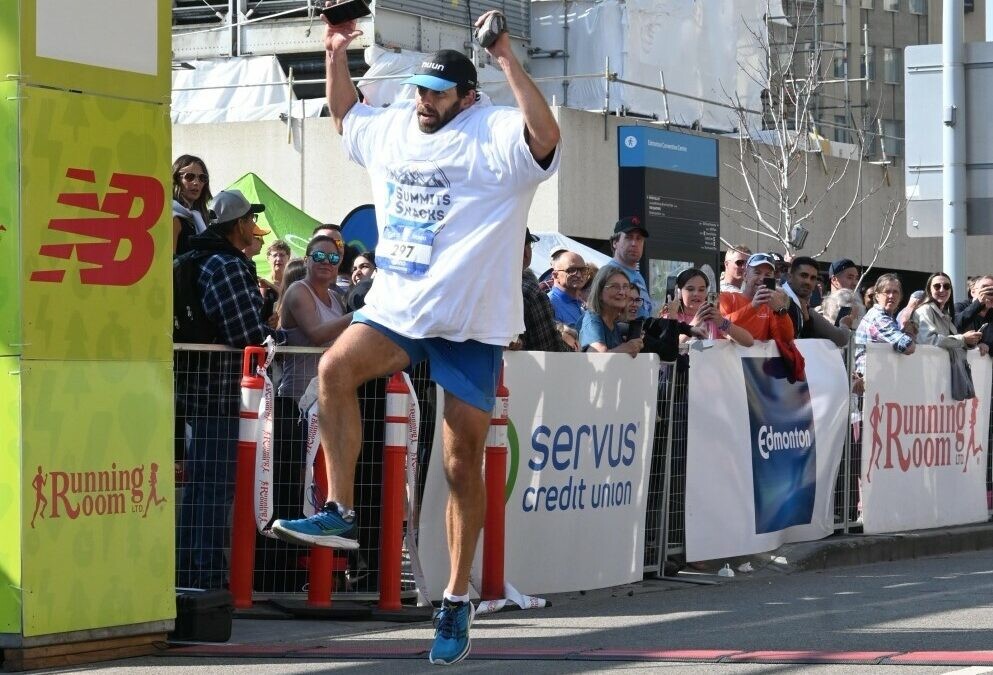
His new marathon crown, which has yet to be ratified by Guinness World Records, will be a familiar fit for Eliuk (and certainly a more comfortable one than his race outfit on Sunday), who previously held the Guinness World Record of 120 for the most shirts worn in a half-marathon.
While being encased in scores of T-shirts may look comical to outsiders, it’s a different story altogether on the inside, Eliuk told Canadian Running on Tuesday.
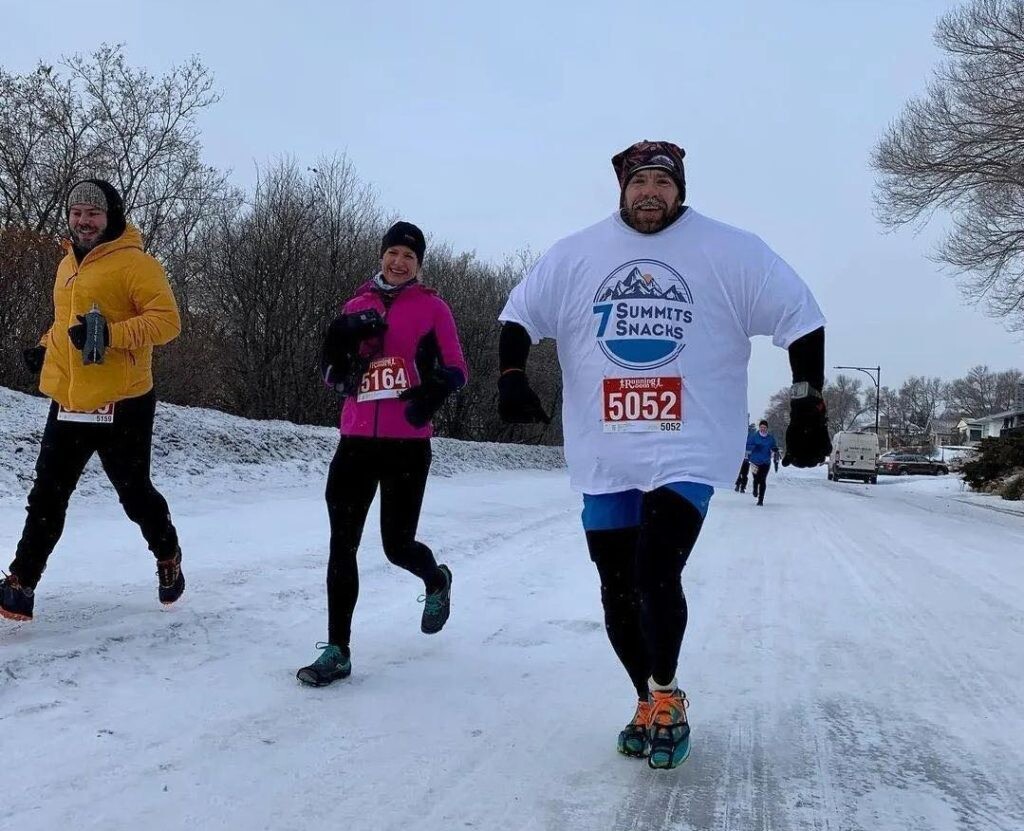
“It hurt. It actually caused restriction of blood flow to my hands and my lower arms,” Eliuk said of his effort at this year’s Hypothermic Half Marathon in Edmonton, where he officially set the half-marathon record.
He said his marathon attempt Sunday was originally part of his bid to simultaneously hold both the half-marathon and marathon titles. However, his half-marathon record fell in May to American Dan Harvey, who sported 127.
Eliuk said while Sunday’s shirt count of 78 was much less constricting and painful than his three-digit total for the half, his run at the Servus Edmonton Marathon presented a different set of challenges—not the least of which were the temperatures of a summer race.
“While I’m wearing fewer shirts and I don’t have the restriction and I don’t have the mobility issues, I also have to be very aware of my body temperature and sustaining myself through hydration and fuel for five hours,” he said. “It was still uncomfortable, still almost 30 pounds of shirt, and the weight on my shoulders and my back especially was really, really hard.”
Fortunately, race organizers allow runners who expect to take longer than six hours to finish to set out an hour before the usual 7 a.m. start time, which helped allay Eliuk’s concerns over heat.
“I was able to talk with the race director and the race crew and was allowed to enter that wave. So I actually started an hour before the regular marathon. I think it was about 8 C at 6 a.m. Being able to start out running in 8 C temperatures instead of 15 C makes a huge difference when I’m doing what I’m doing.”
Weighing on Eliuk, besides the shirts, was the clock. Guinness World Records rules require that record attempts for the most T-shirts worn in a marathon be completed within six hours.
“My morning was really solid and really good,” he said. “I was able to keep moving for the majority of it and I hit the half at around two hours and 11 minutes, so I had almost four hours to complete the second half of the race.”
Eliuk said he’s content just to appreciate his latest accomplishment, and doesn’t plan on chasing his former goal of holding both the marathon and half-marathon T-shirt records at the same time.
“I know how hard it is at 120 shirts, so for this other guy to go to 127, he’s just at a different level. I’ve been in his shoes before. I know how uncomfortable he was, so I’m happy letting the half-marathon record go.”
Next on his race calendar is the New York City Marathon in November, which he and his girlfriend will be running in support of Think Pink Rocks, a campaign supporting genetic testing for the detection of breast cancer.
“I’ll just be wearing the one shirt in New York,” he said.
This year’s Servus Edmonton Marathon was won by Meng-Tsung Chu from Colorado Springs, in 2:22:54 (one of the fastest times in the race’s 32-year history) and Janelle Bykowski of Lethbridge, Alta., in 2:51:53–and it was her very first marathon.
by Paul Baswick
Login to leave a comment
Running can help cut risk of 9 different cancers in men
Maintaining high levels of cardiorespiratory fitness in young adulthood can help men lower their risk of developing nine different forms of cancer later in life, according to research released this week.
In a study published in the British Journal of Sports Medicine, researchers analyzed the rates of cancer in a cohort of more than a million men in Sweden over an average period of 33 years, beginning at age 18.
Using the results from fitness tests that were used to gauge the men’s suitability for military service—assessments that were formerly mandatory in Sweden—researchers divided the participants into low, moderate and high levels of cardiorespiratory fitness, and compared cancer rates among men in these groups in later life.

The researchers found the men who showed the highest levels of fitness in young adulthood had a 20 per cent lower risk of kidney cancer and a 19 per cent lower risk of head and neck cancer compared to men in the low-fitness category.
The study also suggests high cardiorespiratory fitness can play a major role in reducing the risk of gastrointestinal cancers. Participants in the high-fitness category saw their risk of cancer of the liver, the bile ducts, the esophagus and the gallbladder slashed by nearly 40 per cent, and their risk of stomach and colon cancer reduced by 20 per cent.

The greatest difference was seen in rates of lung cancer. The study shows men in the high-fitness category cut their risk of lung cancer by 42 per cent compared to the low-fitness group. However, the researchers attributed this wide gap to smoking habits rather than cardiorespiratory fitness on its own.
The study also identified two forms of cancer that members of the high-fitness cohort were more likely to be diagnosed with, compared to men in the low-fitness group. Diagnoses of skin and prostate cancers were slightly higher in the high-fitness group. The researchers attributed the difference to physically fit men being more likely to spend more time in the sun, and to undergo screening for prostate cancer.
The study adds to a growing body of research linking cardiorespiratory fitness to reduced cancer risks in men. A separate study published by the Swedish School of Sport and Health Sciences in June also showed lower rates of colon and lung cancer in men with high cardiorespiratory fitness. However, that study, unlike the research published this week, linked high fitness levels to a lower risk of prostate cancer.
Although both the above studies looked specifically at cancer risks in men, other research has shown that cardiorespiratory fitness in early adulthood can also lead to reduced cancer risks for women later in life.
by Paul Baswick
Login to leave a comment
Does Sunscreen Expire? Experts Answer Your Qs
Here’s how to tell if your sunscreen needs a refresh. Plus, the best ways to store it for optimal efficacy.If you’re like many runners, you might have the same bottle of sunscreen sitting in your bathroom cabinet for longer than you can remember. And, like many, you probably face a common dilemma: Keep or toss?
The simple verdict: Sunscreen definitely expires, so toss yours if it’s past its prime.
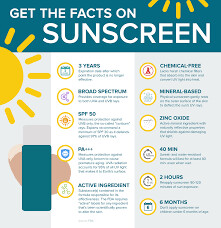
MORE FROM RUNNER'S WORLD ON APPLE NEWS
According to the Skin Cancer Foundation, slathering on sunscreen every day can prevent premature skin aging and slash your melanoma risk by 50 percent. (ICYMI, melanoma is the most dangerous form of skin cancer.) But sunscreen that’s passed its expiration date won’t do your skin any good.
As runners, we log more hours in the sun than most people, which puts us at greater risk for sunburn and skin cancer. We owe it to our skin (and overall health!) to give it the best sun protection possible.
Here, we explain why sunscreen expires and how to tell if yours has.
Why does sunscreen expire?
Sunscreen contains active ingredients that shield your skin from UV rays. In chemical sunscreens, you may find ingredients such as octisalate and/or avobenzone. According to the Skin Cancer Foundation, these ingredients absorb UV rays like a sponge before they can do any damage. In mineral sunscreens, common ingredients include titanium dioxide and zinc oxide, which physically block the rays before they enter your skin.
Over time, these active ingredients break down. When this happens, they become less effective at protecting your skin from harmful UV rays, leaving your skin vulnerable to sunburn and damage, says Cameron Rokhsar, M.D., the founder and director of the New York Cosmetic, Skin, and Laser Surgery Center and an associate clinical professor of dermatology at Mount Sinai Hospital in New York City.
Therefore, it’s essential to keep tabs on your sunscreen’s status. Using an expired product is not only pointless, but it can give you a false sense of security during sunny runs.
Are there signs to look for that show my sunscreen has expired?
“Unfortunately, there’s no reliable way to test if a sunscreen has expired,” says Shari Lipner, M.D., Ph.D., a dermatologist with Weill Cornell Medicine in New York City. However, some sunscreen manufacturers print an expiration date on the bottle or label.
For products that don’t have that expiration date (or if you threw the packaging away), know that all sunscreen manufacturers have to prove that their product will remain effective for at least three years, per the U.S. Food and Drug Administration (FDA). If that’s the case, write the purchase date on the bottle to track how long you’ve had it, Lipner suggests. Consider your sunscreen expired at the three-year mark.
Sunscreen can also expire earlier if exposed to heat, humidity, and sunlight. According to the Cleveland Clinic, chemical sunscreen is especially vulnerable because the active ingredients tend to be more unstable when exposed to heat than mineral sunscreen ingredients.
The takeaway? Don’t rely on expiration dates alone. “If you notice any changes in the consistency, color, or scent of the sunscreen, it could indicate that it’s expired or undergone some degradation, and it’s best not to use it,” Rokhsar says.
For example, many chemical and mineral sunscreens contain inactive ingredients that help the formula spread evenly. When these ingredients break down, you may notice that the sunscreen is gritty and/or tough to rub into your skin, according to the Cleveland Clinic.
You may also experience skin reactions like acne and rash when inactive ingredients degrade, Rokhsar says. Plus, many sunscreens contain preservatives. When these deteriorate, bacteria and fungi are more likely to grow inside the container, leading to skin infections and acne, the Cleveland Clinic notes.
So, if you start breaking out or developing rashes after using your sunscreen, it’s time to get a fresh bottle.
What’s the best way to store sunscreen?
“To extend the life of your sunscreen and ensure its effectiveness, store it in a cool, dry place,” Rokhsar says. In other words, don’t leave it in your car during hot summer runs or on top of your towel during beach days. Excessive heat breaks down the active ingredients that protect your skin from harmful UV rays, Rokhsar explains.
A better approach: Apply sunscreen before leaving home so you don’t have to keep it in your car during your run. “If you’re at the pool or beach, I suggest wrapping [the sunscreen] in a towel,” Lipner says. You can also stash it under some shade or keep it in the beverage cooler.
Also, keep the container tightly closed to prevent exposure to air, “which can also contribute to the breakdown of the active ingredients,” Rokhsar says.
So, can you use expired sunscreen?
Using sunscreen that’s gone bad won’t protect your skin from the harmful UV rays that cause skin damage and cancer. You’ll likely irritate your skin to boot. So, toss your sunblock if it’s passed its expiration date, it’s been three years since you purchased it, or you notice changes to the product or your skin.
You can prolong the shelf-life of your sunscreen by storing it in a cool, dry place. However, you don’t need to worry about expiration dates if you use sunscreen the way you should. “If you’re using sunscreen properly, which means applying a generous amount [or about a shot glass’ worth] and reapplying frequently, such as after swimming or sweating, a bottle shouldn’t last more than a season,” Rokhsar says.
by Runner’s World
Login to leave a comment
7-year-old runs to beat clock in mom's cancer battle
A seven-year-old British girl has completed a multi-day marathon challenge in a desperate bid to pay for a brain biopsy that could help save her mother’s life.
The U.S. Sun reports that Lolita Oakes of North London and her friend Juliet Deilinger, also seven years old, recently ran the 42.2-km marathon distance to help fund Oakes’s mother’s fight against brain cancer.

In 2018, at age 36, Cordelia Taylor was diagnosed with glioblastoma, a form of brain cancer that has an average survival time of 12 to 18 months. Only five per cent of patients live more than five years.
Following aggressive treatment—including surgery that involved removing a quarter of Taylor’s brain without any resulting neurological impairment—Taylor was declared cancer-free this past April. The results of a scan just two months later, however, showed that the cancer had returned and was inoperable.
She told the Sun she is hoping to self-fund a private biopsy and potential targeted treatment of the malignant tumour. The need for timely funding is what inspired daughter Lolita to take up the weeklong marathon challenge.
The run not only succeeded in raising awareness of, and financial support for, her mother’s treatment—nearly three-quarters of the campaign’s $170,000 goal has been raised—but also encouraged others to join in. Lolita and Juliet were joined during the multi-day challenge—which involved running at least 5 km before school every day (and additional kilometres after school) for seven days—by an ever-growing group of friends, schoolmates and teachers.
“It was quite hard, how much I had to run, and the not stopping,” Lolita told the Sun. “The hardest part was when I fell over. It was tiring, but I’m proud of me and Juliet for running the marathon, and doing it for my mum"
Although seeing the challenge through wasn’t easy for Lolita, her mother said she had every confidence her daughter would finish what she started.
“Loli is joyful and spirited, full of happiness and confidence,” said Taylor. “She’s a very determined girl and unbelievably good at saying to herself, ‘I can do this.’”
by Running Magazine
Login to leave a comment
Amputee ultrarunner Jacky Hunt-Broersma takes on 5,250 kilometer challenge for cancer research
Bladerunner Jacky Hunt-Broersma celebrated being 21 years cancer-free by setting out on a new challenge: the Arizona-based athlete and coach will be running a half marathon a day (21.1K a day) from Aug. 1 until she reaches 5,250 kilometers. Aug. 1 is both the athlete’s amputee anniversary and marks 21 years of being cancer-free, she shared on social media, and this challenge is to honor cancer survivors, those fighting cancer and those who have lost their lives.
Dubbed the ‘Doing Hard Things’ project, Hunt-Broersma chose the distance to represent the number of people fighting cancer each day.”I had Ewing sarcoma,” the runner shared. “I was one of the lucky ones to survive and I’m so grateful to be alive and be able to move. I think movement is so important to not only keep us healthy but also help us cope mentally.”
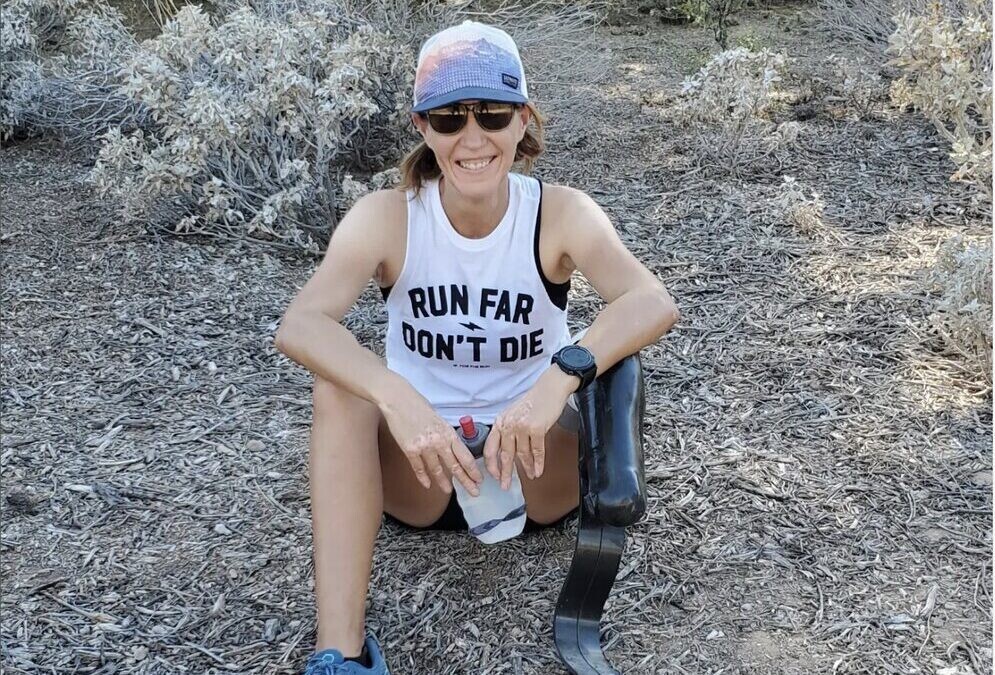
Hunt-Broersma is raising funds for cancer research and will be dedicating each day to someone fighting cancer or who has lost their life to the disease, and guesses it will take her about 250 days to complete the distance.
Hunt-Broersma lost her lower left leg to Ewing sarcoma, a rare form of cancer that affects the tissue around bones, in 2002. While she always lived a healthy lifestyle, she didn’t start running until 2016, when she signed up for a 5K race. Taking on challenging adventures is not new for Hunt-Broersma: she ran 104 marathons in 104 days in 2021, raising over $200,000 for amputee runners, and ran 50K a day for two weeks in July 2022.
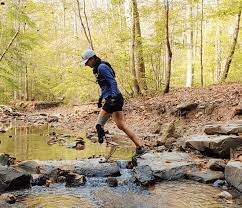
The name of her latest project comes from a phrase that carried her through her 104 marathon streak. “When I was running the 104 marathons in 104 days I’d often need encouragement and I’d whisper to myself ‘you can do hard things’ to keep me going when it got really hard,” she explains. “At one point during the marathons, I started believing in myself and that whisper changed to a louder mantra: ‘I can do hard things, I can do hard things.’ ”
The athlete invites runners and walkers of all levels to come out and join her on her daily half-marathon, and will be sharing the location and times of her runs on social media. Runners can show their solidarity from afar by joining the Strava group she has created, called “I can do hard things.” Hunt–Broersma wants everyone to feel included, she shared on Instagram. “I’m hoping it will create an encouraging space where everyone will feel welcome.”
by Keeley Milne
Login to leave a comment
A Higher VO2 Max May Offer Protections Against Cancer, Study Suggests
More evidence of the connection between cancer risk and exercise levels.
A new study found a link between higher cardiorespiratory fitness and lower risk of certain cancers.

The researchers also found an association between higher fitness level and lower risk of dying from cancer.
Cardiorespiratory fitness (CRF), marked by your VO2 max, refers to the capacity for your circulatory and respiratory systems to supply oxygen to the muscles during sustained exercise, and the American Heart Association notes that it’s an important health marker for both physical and mental health.
As new research in JAMA Network Open suggests, it’s also a factor in reducing risk of colon and lung cancer in men.
Looking at data from a large cohort study in Sweden, researchers analyzed health and physical activity information on almost 18,000 men between the ages of 18 to 75, collected over nearly 10 years. CRF was assessed using a cycle ergometer test, which measures heart rate and oxygen consumption.
They found that higher levels of cardiorespiratory fitness were associated with lower risk of developing colon and lung cancer. For those who did develop those cancers, higher fitness was associated with lower risk of death from those cancers within the study’s timeframe.
One possibly counterintuitive finding from the study is that higher CRF was associated with higher prostate cancer incidence. However, even in that result, researchers noted that those with high fitness levels showed a 5 percent lower death rate from that cancer.
Given the wide range in ages, researchers were able to determine that the cancer hazard risk was lowest for younger, non-smoking men at a normal weight and with the highest CRF.
Overall, researchers concluded that having very high CRF levels for any age could prevent up to 8 percent of all colon cancer cases, 4 percent of all deaths from lung cancer, and between 4 to 19 percent of deaths from prostate cancer. They added that it’s likely higher-intensity physical activity could have even more protective effects.
Although the recent study was done only on men, there is ample other research showing similar benefits for women in terms of both cancer prevention and longer survival rates for those who do develop cancer.
For example, a recent study in the British Journal of Sports Medicine about cancer recurrence in men and women with stage III colon cancer found that for physically inactive patients, disease recurrence peaked within two years of treatment, but that wasn’t true with physically active patients, according to that study’s lead author, Justin Brown, Ph.D., director of the Cancer Metabolism Program at Pennington Biomedical Research Center.
Brown told Runner’s World that even for people who had not been very physically active before a cancer diagnosis, making the effort to get consistent exercise can improve health outcomes overall. That means you don’t just potentially live longer through reduced cancer risk or lower recurrence risk, you live better as well.
“Whether someone has cancer or they’re considering what could lower their risk, there’s something about this disease that causes people to step back and evaluate decisions like how they’re treating their health,” Brown said. “Health is comprised of many components, of course, but physical activity is a key starting point, and a crucial factor when it comes to lowering your risk level with cancer.”
by Runner’s World
Login to leave a comment





